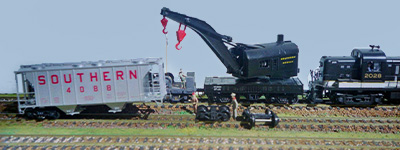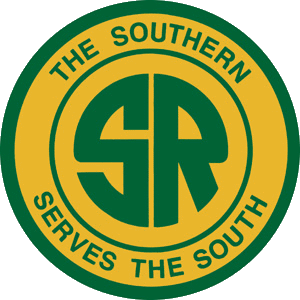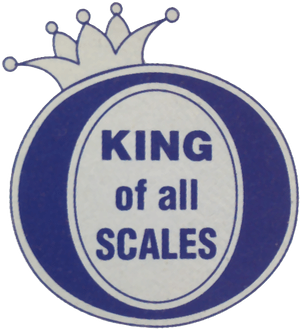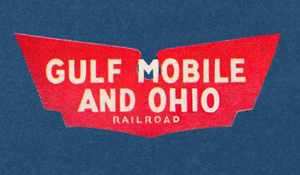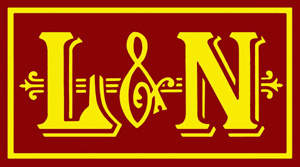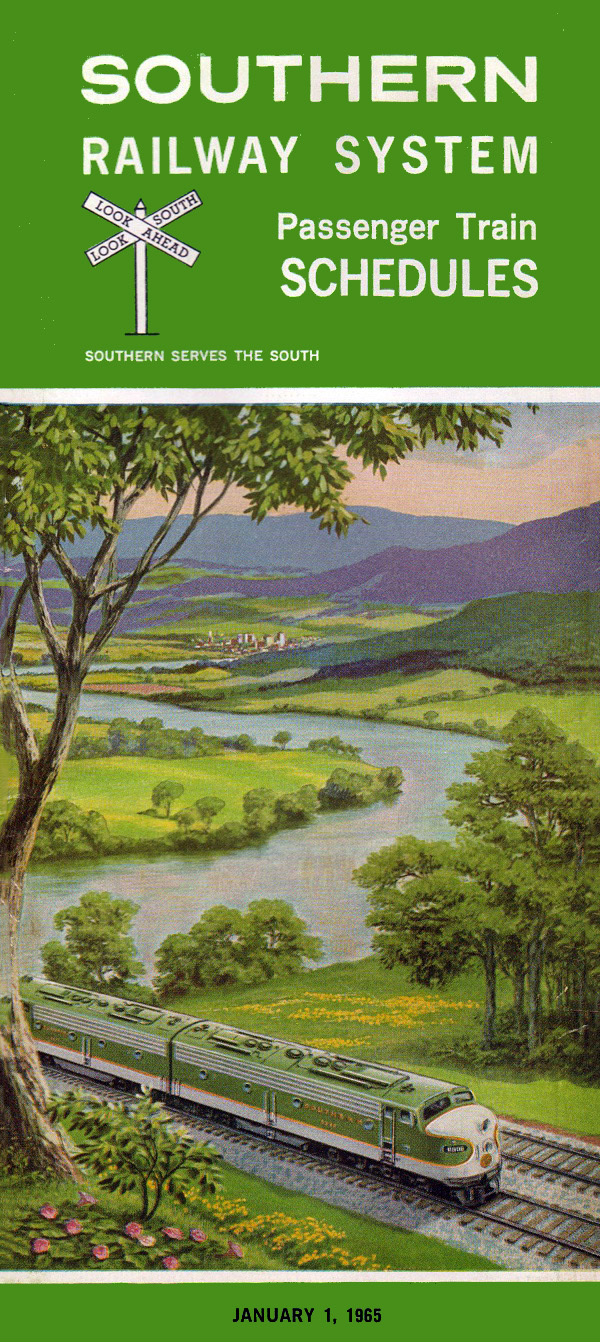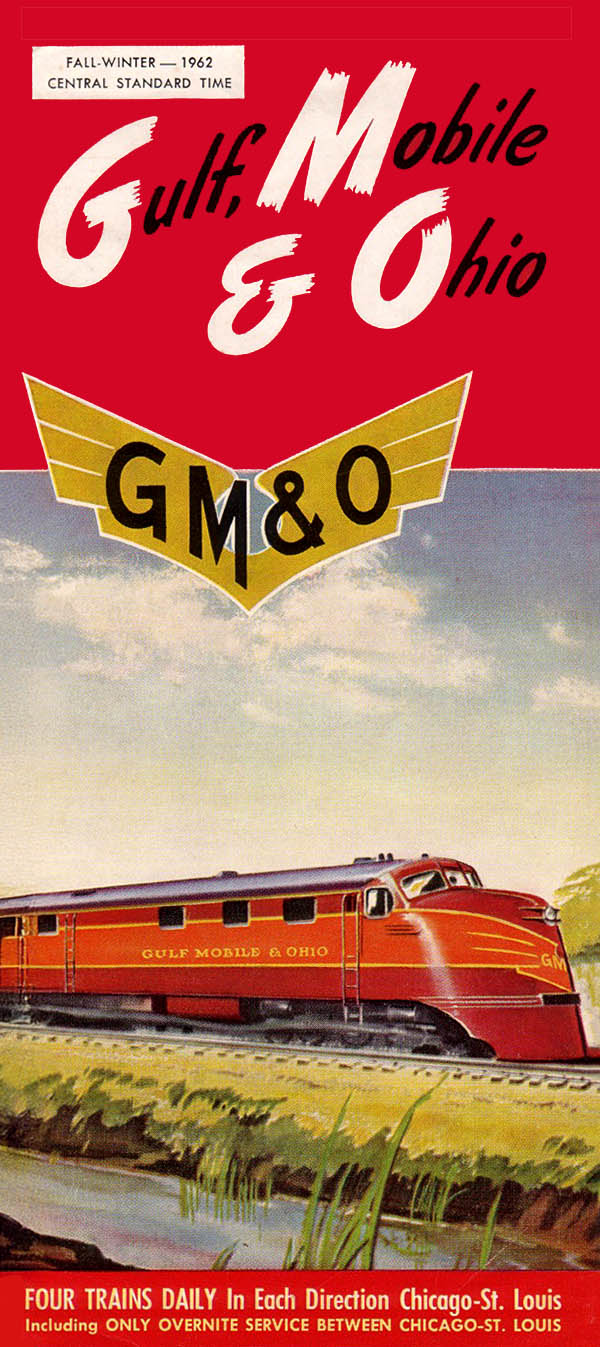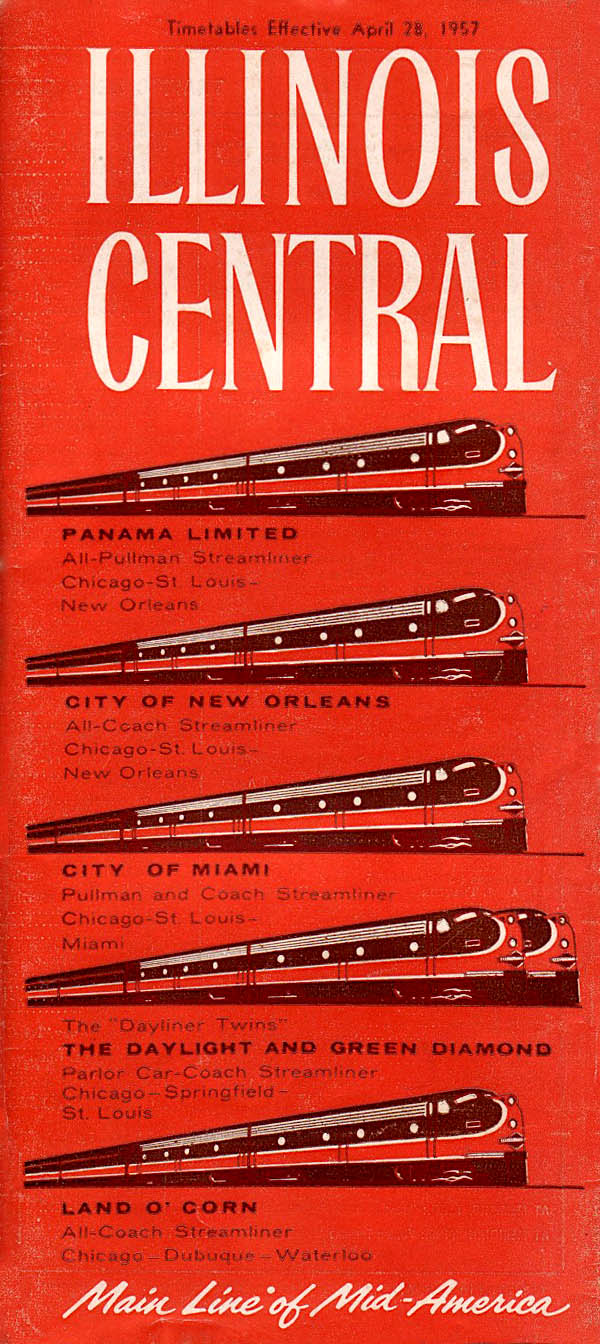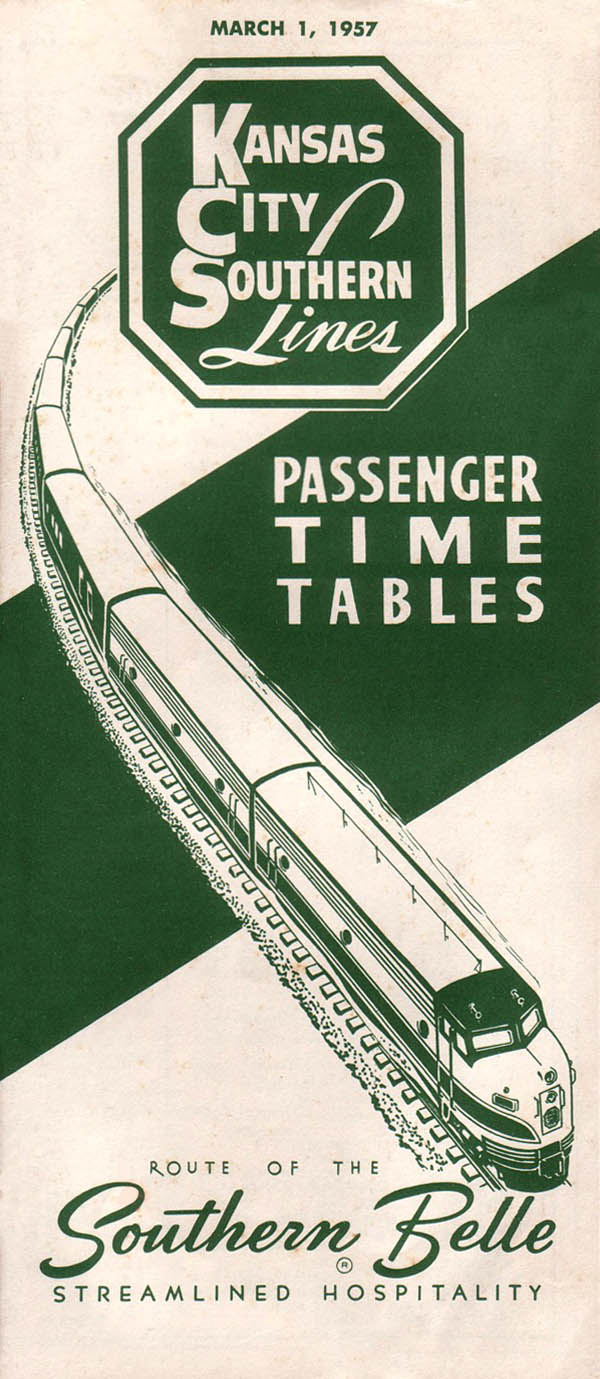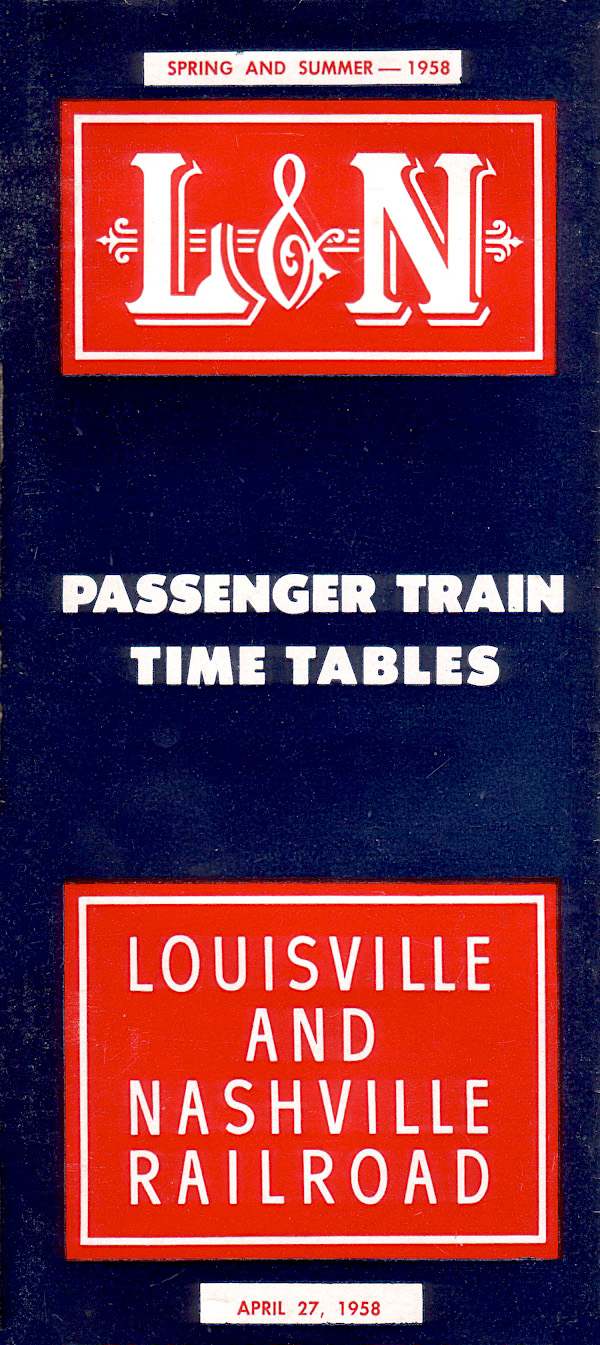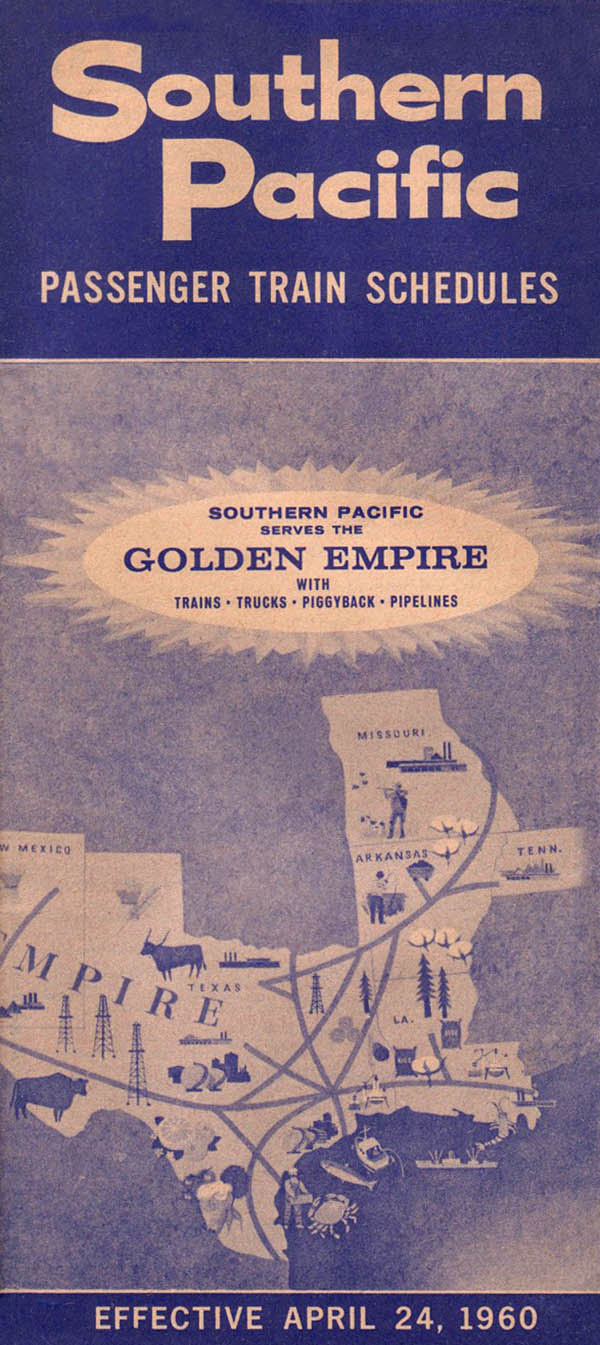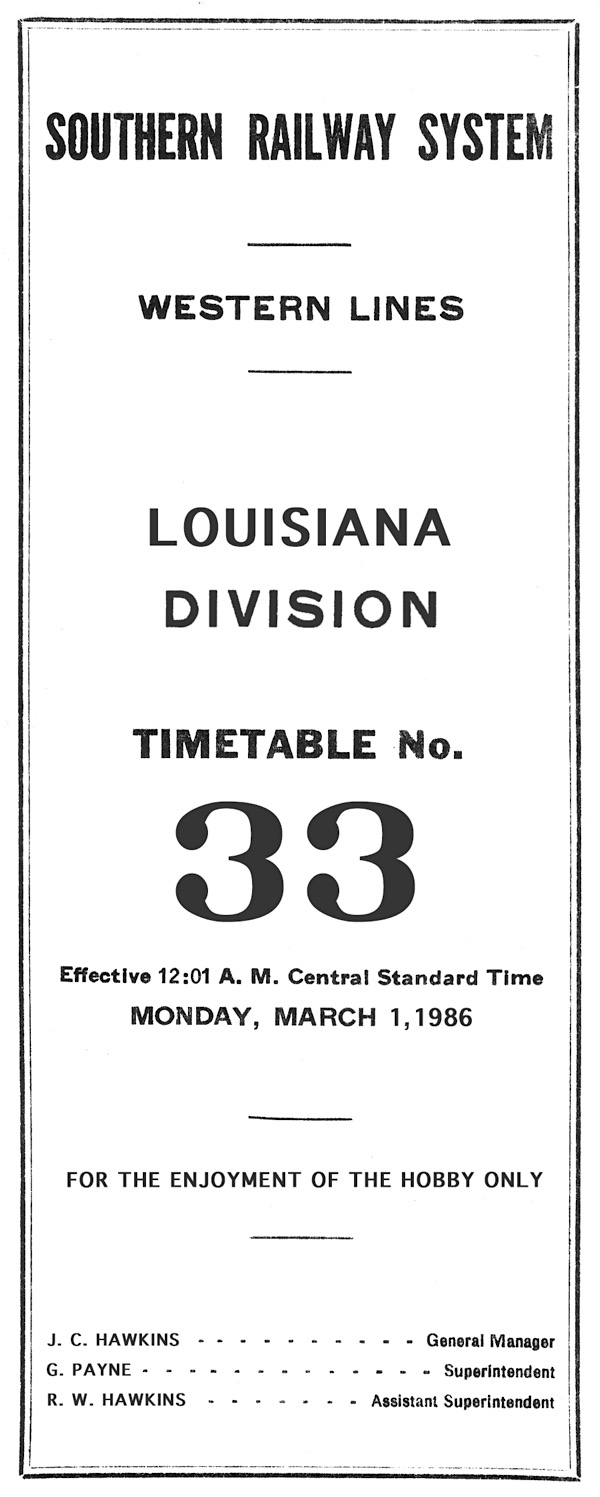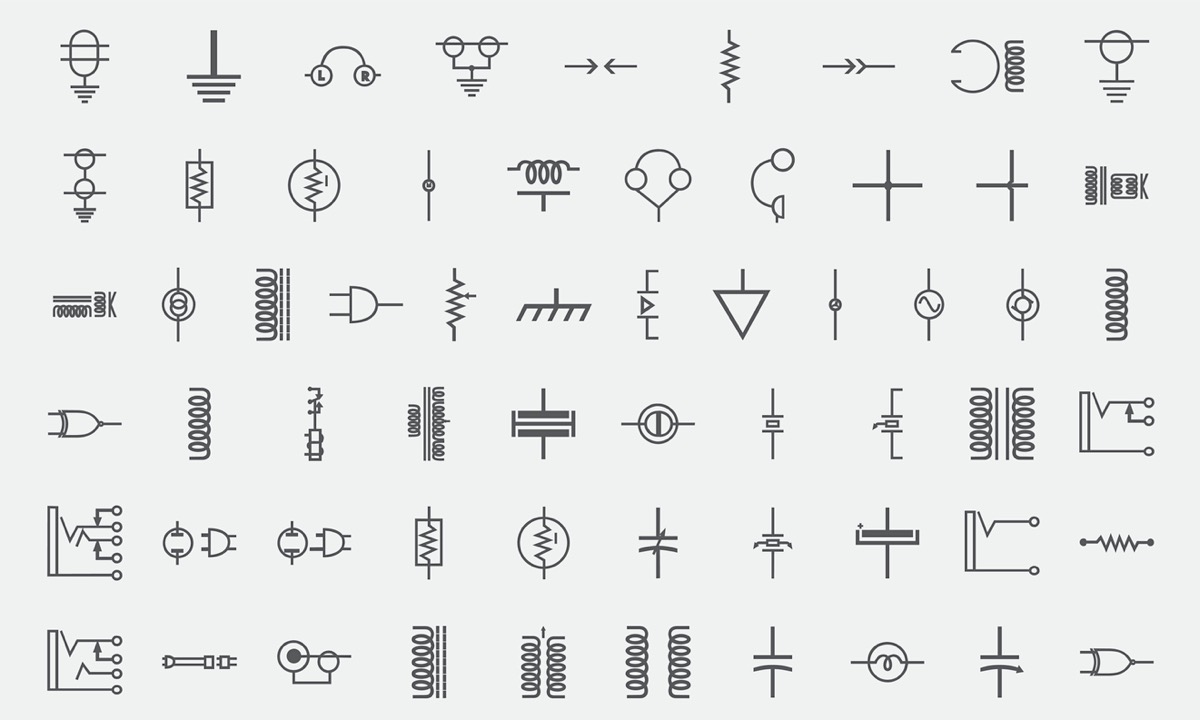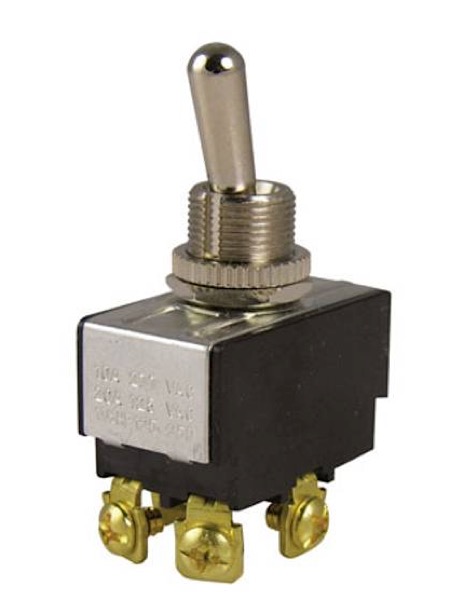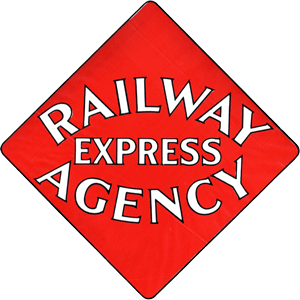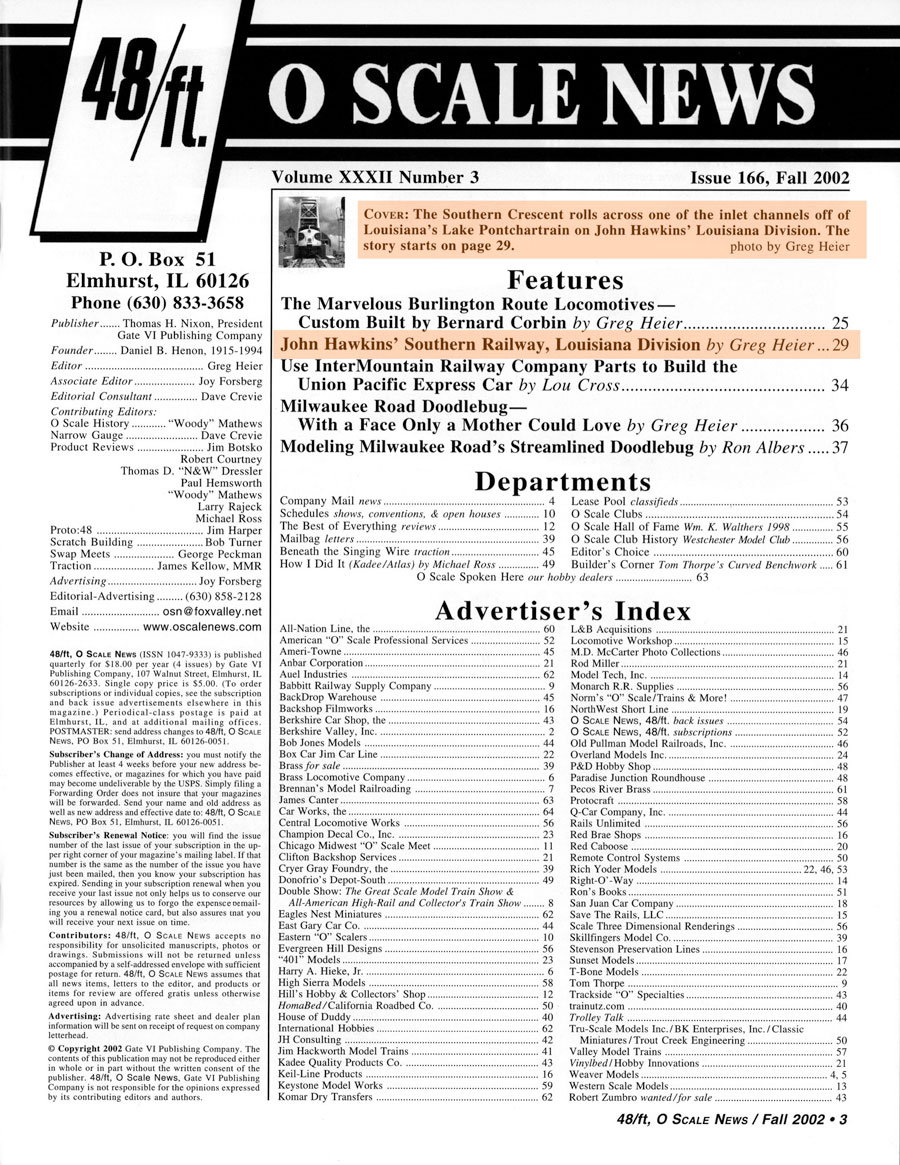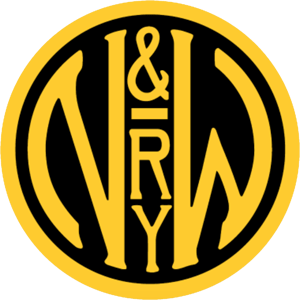





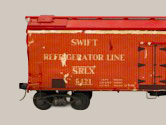
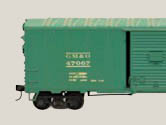


Southern's
Louisiana Division
Southeast Louisiana O Scale Club
Construction began on the Louisiana Division in 1986 using benchwork from a previous O Scale layout in Alabama. Designed to showcase transition era mainline running by the railroads that served the greater New Orleans area, the layout was built to fit inside the unfinished upstairs of the family's homeplace in St. Tammany Parish. Two independent mainline loops, an engine terminal, and a hidden fiddle yard made for great operating sessions for the Southern Louisiana O Scale Club. The layout was a tour location for the 2000 National O Scale Convention held in the Big Easy, but it suffered major damage when Hurricane Katrina tore through the upstairs in 2005. Portions of the layout were rebuilt, but the Louisiana Division was dismantled in 2011 when the house was sold to a member of our extended family.

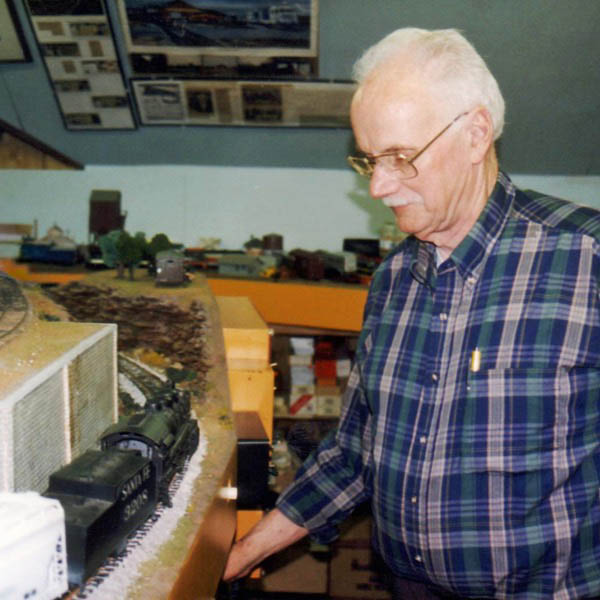
Covington, La / Jun 2000 / collection

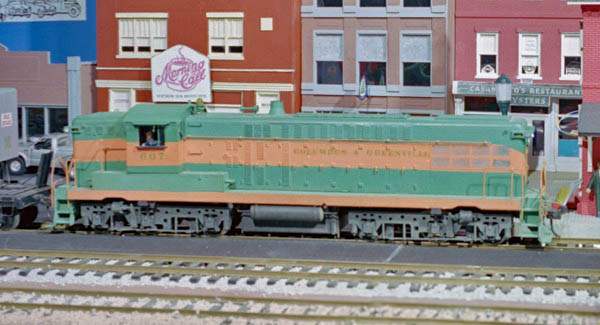

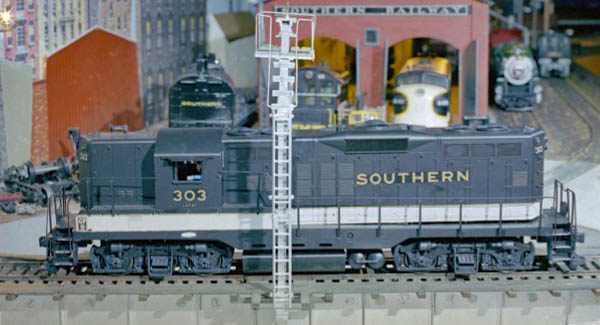
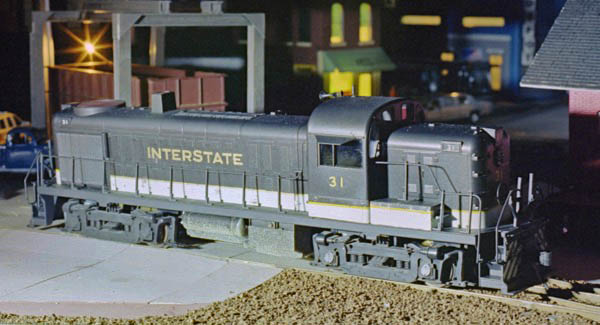
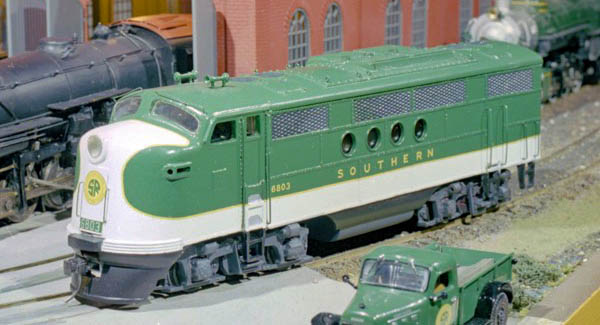
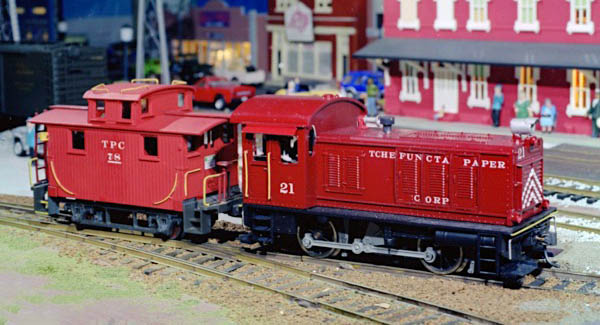
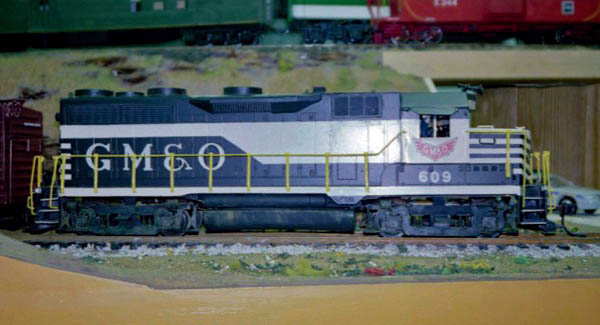
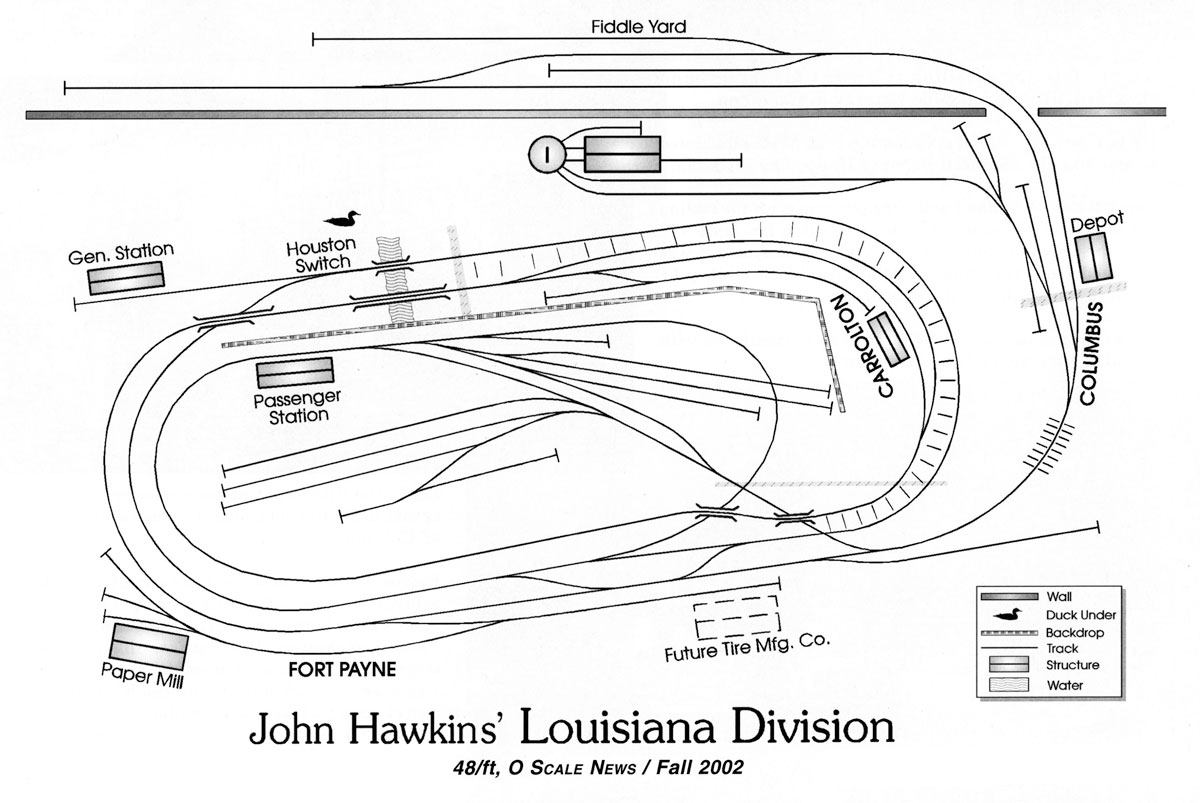
from O Scale News magazine - Fall 2002 / collection
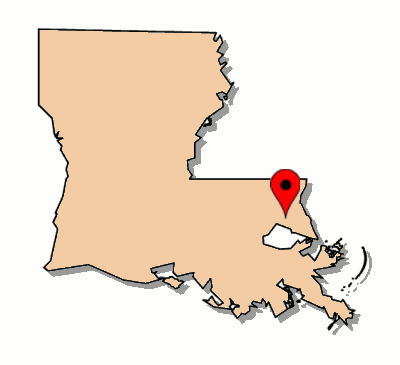
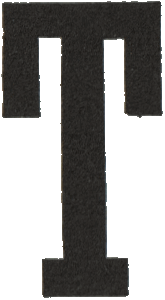 he Louisiana Division of the Southern Railway was an out-and-back mainline layout for running O Scale 2-rail trains. Locations were named for favorite railroad towns, and many structures and scenes paid homage to sites around southeast Louisiana. The 17' by 30' foot layout was supported by L-girder benchwork and utilized Code 148 flex track and homemade turnouts throughout. Trains began their runs behind the scenes in a multi-track fiddle yard located in the adjacent room. They appeared on the layout in the town of Columbus, named in honor of the Columbus & Greenville Railway in Mississippi. Several industrial sidings and a house track were positioned near the Columbus depot, and a spur led to an engine terminal and turntable. Leaving Columbus, trains passed through a double crossover that allowed entrance into one of two loops. One loop line climbed a grade and crossed a duck-under on its way to a passing siding at Carrolton, after which it descended back down to elevation to serve a large passenger terminal and yard — loosely based on some features of New Orleans. The other loop enjoyed larger radius curves and ran along the outside of the main body of the layout, allowing one train to run continuously while another worked the higher line through Carrolton. DC powered blocks allowed for two trains to run simultaneously on the mainlines, while a third locomotive could switch the engine terminal or fiddle yard.
he Louisiana Division of the Southern Railway was an out-and-back mainline layout for running O Scale 2-rail trains. Locations were named for favorite railroad towns, and many structures and scenes paid homage to sites around southeast Louisiana. The 17' by 30' foot layout was supported by L-girder benchwork and utilized Code 148 flex track and homemade turnouts throughout. Trains began their runs behind the scenes in a multi-track fiddle yard located in the adjacent room. They appeared on the layout in the town of Columbus, named in honor of the Columbus & Greenville Railway in Mississippi. Several industrial sidings and a house track were positioned near the Columbus depot, and a spur led to an engine terminal and turntable. Leaving Columbus, trains passed through a double crossover that allowed entrance into one of two loops. One loop line climbed a grade and crossed a duck-under on its way to a passing siding at Carrolton, after which it descended back down to elevation to serve a large passenger terminal and yard — loosely based on some features of New Orleans. The other loop enjoyed larger radius curves and ran along the outside of the main body of the layout, allowing one train to run continuously while another worked the higher line through Carrolton. DC powered blocks allowed for two trains to run simultaneously on the mainlines, while a third locomotive could switch the engine terminal or fiddle yard.
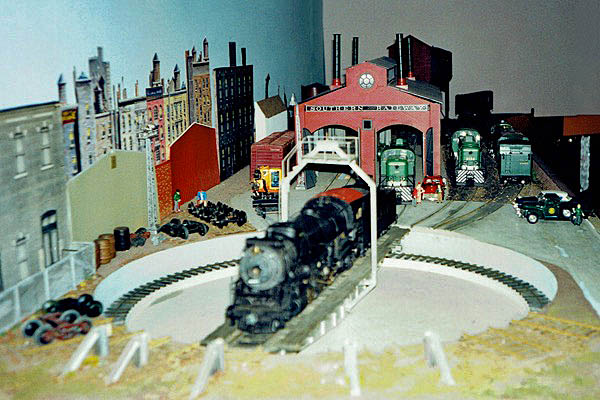 The mainlines featured manually-operated electric signals and many remote-controlled turnouts. Two passing sidings allowed shorter trains to move by each other. A scratch-built Scherzer Rolling Lift Bridge carried the outer mainline over the duck-under passage, evoking a scene reminiscent of Lake Pontchartrain. The engine terminal featured an operating turntable, inspection pits, coaling tower, and a 2-bay enginehouse. Online industries with sidings included a coal-fired generating station, a paper mill, a furniture factory, a junkyard, and a cement facility. Freight rolling stock represented dozens of mainlines and shortlines across the southeast. Locomotives and passenger cars primarily represented favorite Fallen Flag mainlines of the Deep South, especially the Southern Railway, Gulf Mobile & Ohio, Illinois Central, and Louisville & Nashville.
The mainlines featured manually-operated electric signals and many remote-controlled turnouts. Two passing sidings allowed shorter trains to move by each other. A scratch-built Scherzer Rolling Lift Bridge carried the outer mainline over the duck-under passage, evoking a scene reminiscent of Lake Pontchartrain. The engine terminal featured an operating turntable, inspection pits, coaling tower, and a 2-bay enginehouse. Online industries with sidings included a coal-fired generating station, a paper mill, a furniture factory, a junkyard, and a cement facility. Freight rolling stock represented dozens of mainlines and shortlines across the southeast. Locomotives and passenger cars primarily represented favorite Fallen Flag mainlines of the Deep South, especially the Southern Railway, Gulf Mobile & Ohio, Illinois Central, and Louisville & Nashville.
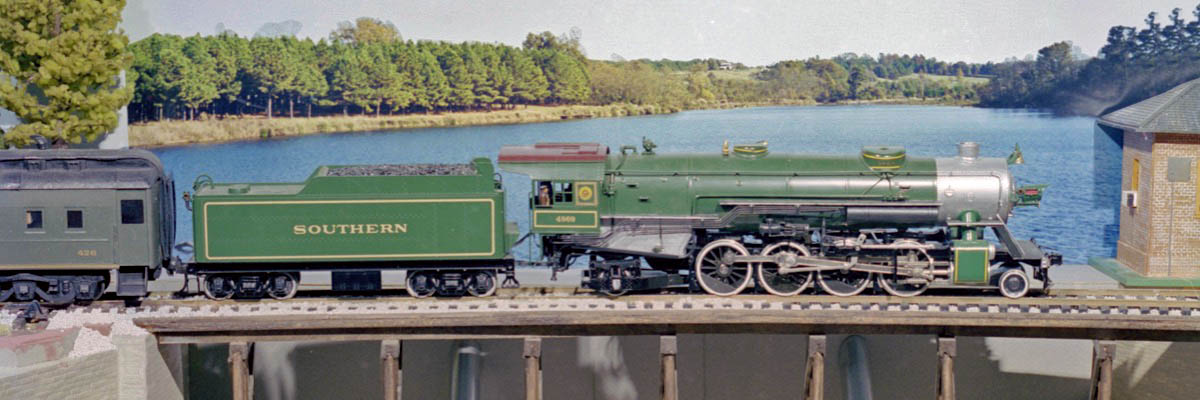
2003 / Gordon Payne
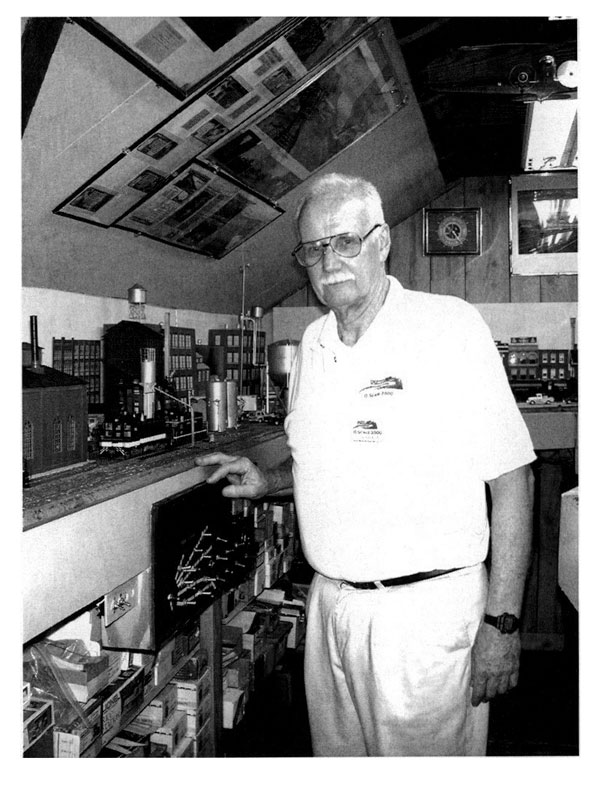
O Scale News magazine
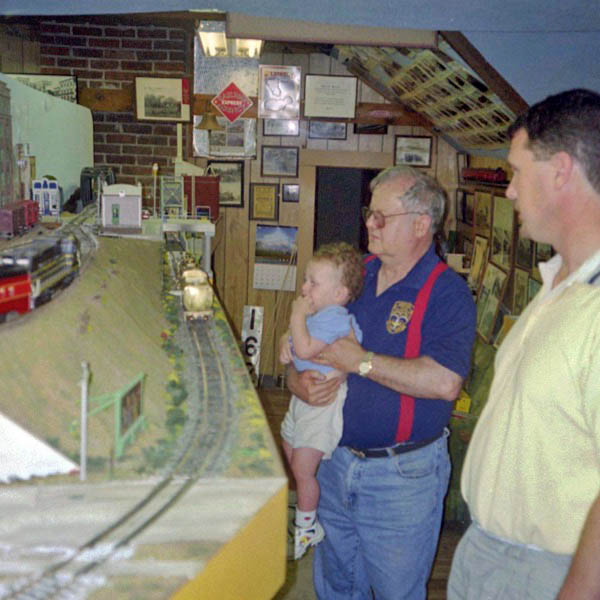
Jun 2000 / JCH
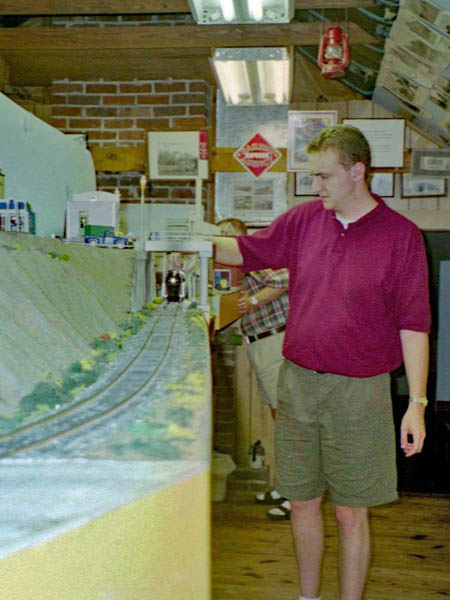
Jun 2000 / JCH

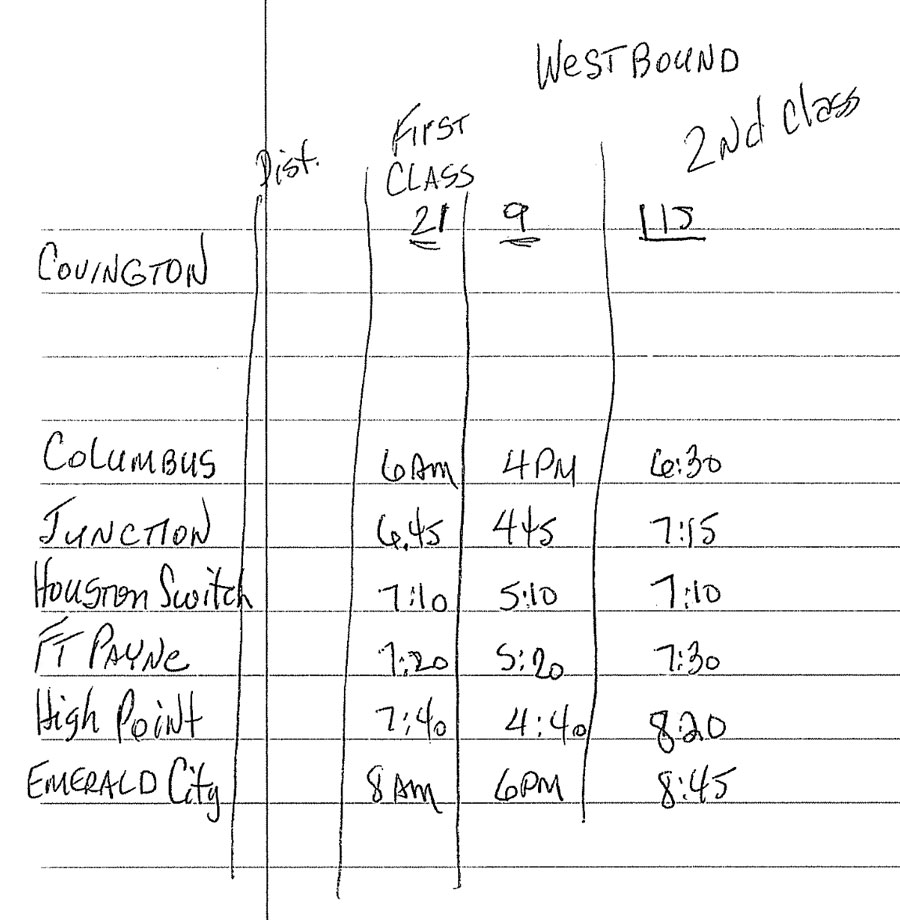
JCH notes


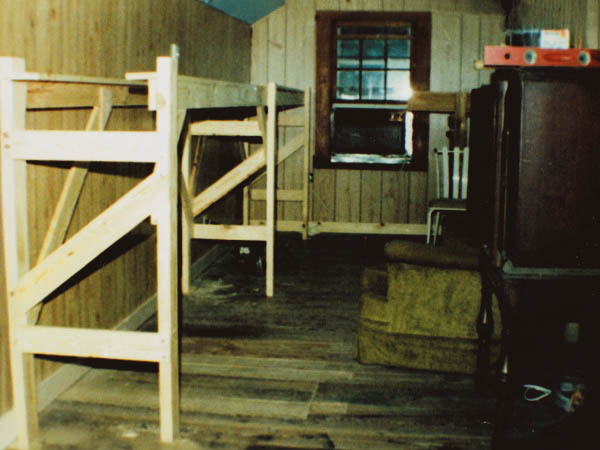 I was there at the beginning, and I was there at the end. Twenty-five years transpired in between, and the top floor of our Covington home became for me and for many a haven of model railroading, railfan conversation, and great fun.
I was there at the beginning, and I was there at the end. Twenty-five years transpired in between, and the top floor of our Covington home became for me and for many a haven of model railroading, railfan conversation, and great fun.
In the early 1980s, my parents decided to move into my grandparent's lovely Southern home and our dad took on most of the needed renovations. I realize now that, in part, he had his O Scale eye on the unfinished upstairs space. Once the rest of the house work reached a tipping point, he turned his attention to the top. I was delighted to be boy Robin to his Bruce Batman every step of the way. It was always an adventure in handyman hijinks. He salvaged discarded fluorescent lighting from his workplace. We hung rolls of insulation and covered the rafters with a board he would later paint sky blue. We paneled all the walls, like you did in those days. We fought off the rats with giant traps and a calvary sword. Dad resurrected two enormous Chrysler (not kidding) window air conditioners my grandfather had purchased in the 1960s. They were 240 volt units, and when the compressors kicked on the lights in the room dimmed! Together these old beasts fought the daily battle with South Louisiana heat and humidity, and one of them lasted to the end of the layout.
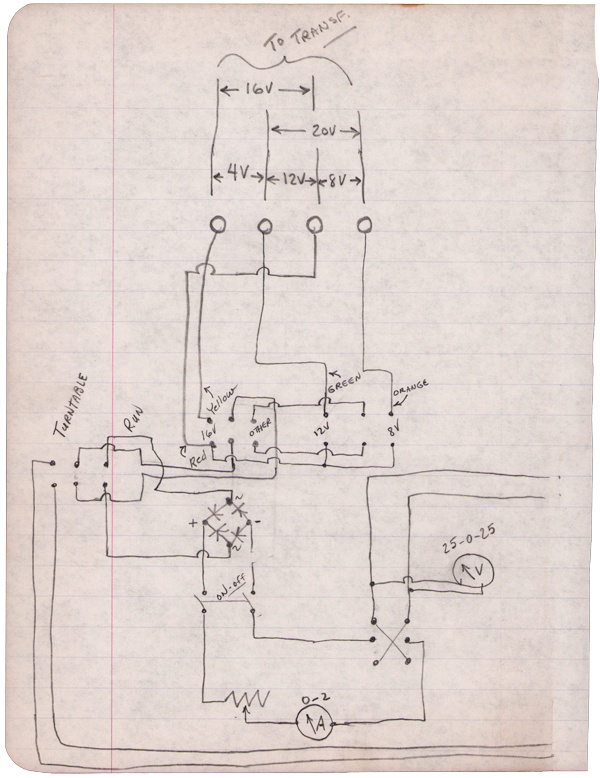 The attic now habitable by human creatures, it was time to start building a layout. We brought a half dozen pieces of benchwork from Huntsville, Alabama, when we moved back south in 1978. We reworked those tanks to fit the new space and a revised layout. Soon new pieces joined the standing army, and before long the foundations of the Southern's imaginary "Louisiana Division" took shape and filled the room. Happy memories: Most Saturday mornings we fired up the Old Man's 1948 half-ton 3-on-the-column Chevy pickup (his main project in the early 1970s), adjusted the timing together on its Straight Six motor, headed out for donuts and (for him) black coffee, then made another run to Poole Lumber company for more 1 and 2x4s for bench and trackwork. Rinse and repeat next Saturday. I rode shotgun, of course, in the green truck ... but really for the entire project. Dad was a great teacher. I learned how to use hand and power saws, how to set wood screws, about the virtues of yellow wood glue, and of the joys of finding level in a bubble glass. My childhood smelled like pine lumber, Elmer's wood glue, and the sharp tang of solder resin. Speaking of electricity: Dad was the Michelangelo of low voltage Direct Current wiring, both on paper and in application. When the local Bell Telephone warehouse discarded boxes of multi-conductor 24-gauge telephone cable, dad fished them out of a dumpster and put what seemed like miles of it to work running turnout machines, track signals, and structure lights. With all his Central Locomotive Works and All Nation open frame DC motors, however, all our blocks needed good 12-gauge stranded wire. Radio Shack should have sent a ham every Christmas; we pulled a lot of wire in those days. The Louisiana Division could easily pull 3 to 4 amps with a good freight train going uphill! Dad collected ancient Lionel and American Flyer AC transformers — first for the fun of bringing them back to life, but also because they could handle all that O Scale current in the days before can motors and flywheels. We had a veritable substation running under that layout.
The attic now habitable by human creatures, it was time to start building a layout. We brought a half dozen pieces of benchwork from Huntsville, Alabama, when we moved back south in 1978. We reworked those tanks to fit the new space and a revised layout. Soon new pieces joined the standing army, and before long the foundations of the Southern's imaginary "Louisiana Division" took shape and filled the room. Happy memories: Most Saturday mornings we fired up the Old Man's 1948 half-ton 3-on-the-column Chevy pickup (his main project in the early 1970s), adjusted the timing together on its Straight Six motor, headed out for donuts and (for him) black coffee, then made another run to Poole Lumber company for more 1 and 2x4s for bench and trackwork. Rinse and repeat next Saturday. I rode shotgun, of course, in the green truck ... but really for the entire project. Dad was a great teacher. I learned how to use hand and power saws, how to set wood screws, about the virtues of yellow wood glue, and of the joys of finding level in a bubble glass. My childhood smelled like pine lumber, Elmer's wood glue, and the sharp tang of solder resin. Speaking of electricity: Dad was the Michelangelo of low voltage Direct Current wiring, both on paper and in application. When the local Bell Telephone warehouse discarded boxes of multi-conductor 24-gauge telephone cable, dad fished them out of a dumpster and put what seemed like miles of it to work running turnout machines, track signals, and structure lights. With all his Central Locomotive Works and All Nation open frame DC motors, however, all our blocks needed good 12-gauge stranded wire. Radio Shack should have sent a ham every Christmas; we pulled a lot of wire in those days. The Louisiana Division could easily pull 3 to 4 amps with a good freight train going uphill! Dad collected ancient Lionel and American Flyer AC transformers — first for the fun of bringing them back to life, but also because they could handle all that O Scale current in the days before can motors and flywheels. We had a veritable substation running under that layout.
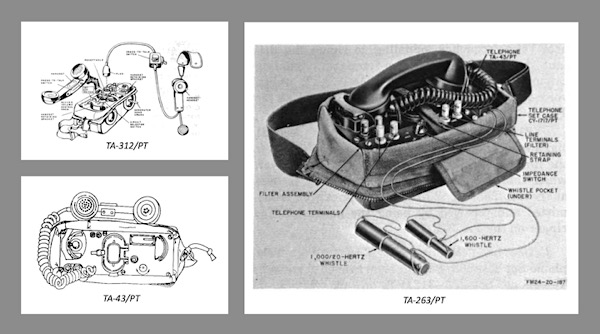 I'm so grateful for all the little skills and trouble-shooting techniques he taught me in those years — not to mention a palate for a good jelly donut. I find myself still using many of those skills in handyman, computer networking, and church audio/visual production. And something of the same approach applies even to the building and coding of this website. Dad was a hands-on man. All of us who learned something handy from him owe the United States Army a debt of gratitude. At Fort Riley, Kansas, some Army instructor introduced private Hawkins to the techniques associated with 50s-era military Field Telephone wiring. In both career and hobby, veteran Hawkins never looked back.
I'm so grateful for all the little skills and trouble-shooting techniques he taught me in those years — not to mention a palate for a good jelly donut. I find myself still using many of those skills in handyman, computer networking, and church audio/visual production. And something of the same approach applies even to the building and coding of this website. Dad was a hands-on man. All of us who learned something handy from him owe the United States Army a debt of gratitude. At Fort Riley, Kansas, some Army instructor introduced private Hawkins to the techniques associated with 50s-era military Field Telephone wiring. In both career and hobby, veteran Hawkins never looked back.
Scenes
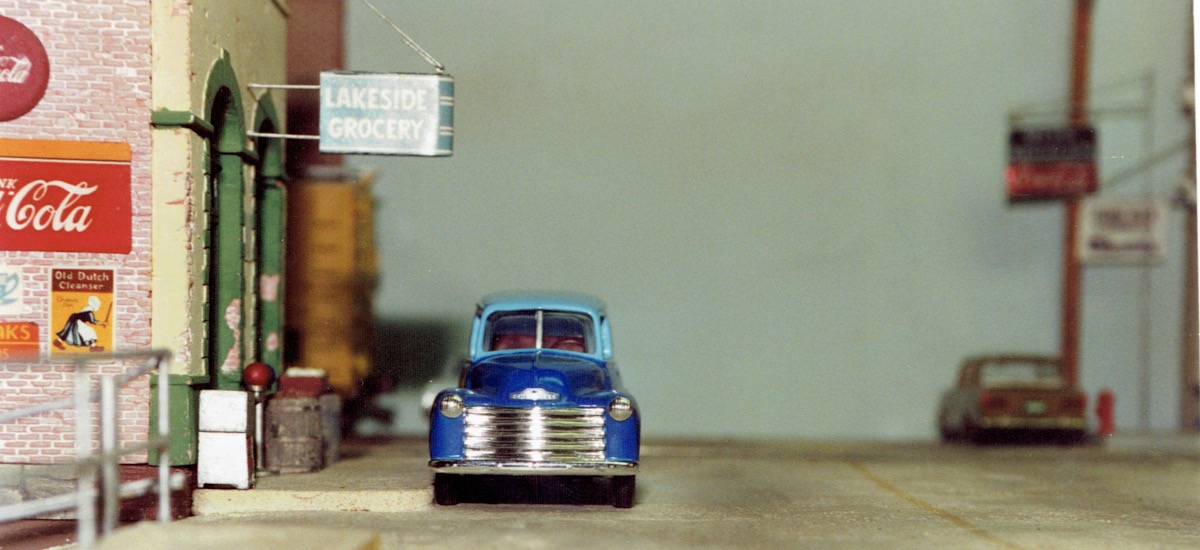
 Engine Terminal
Engine Terminal
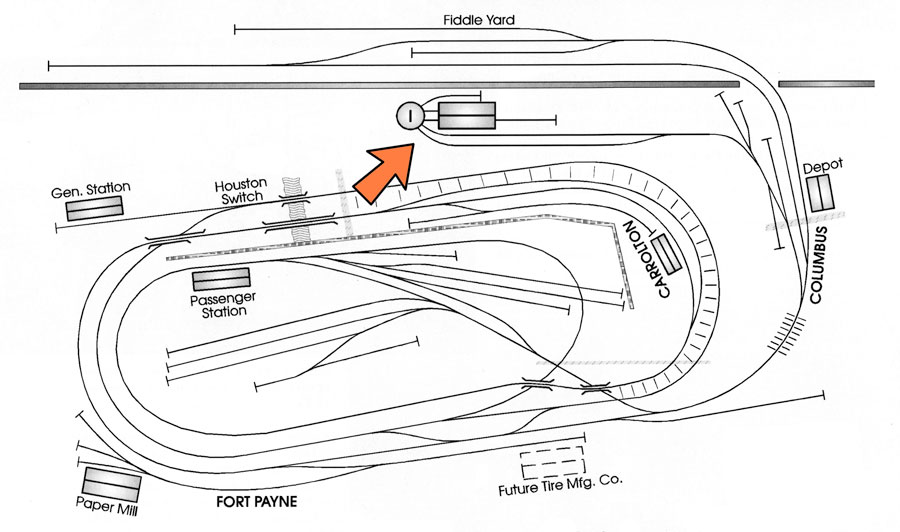
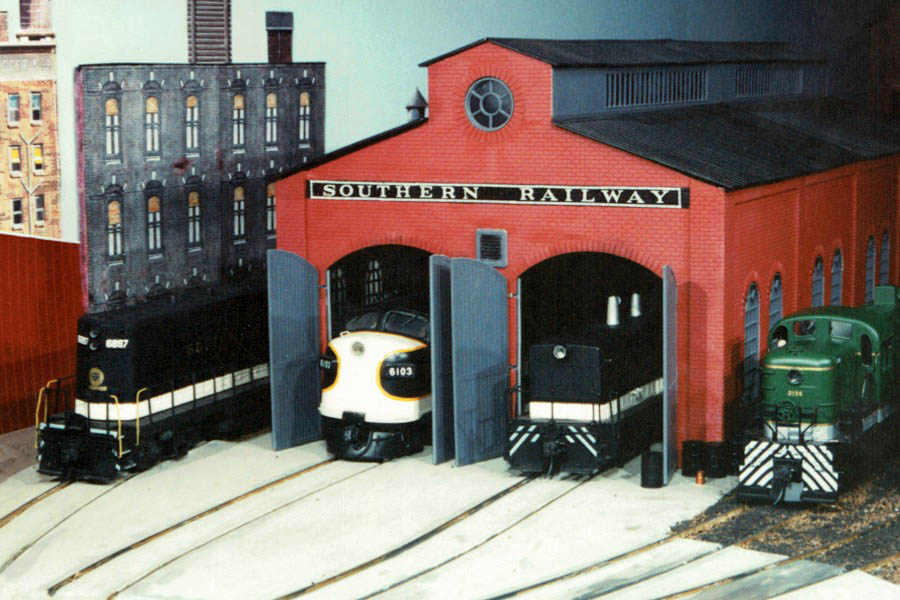

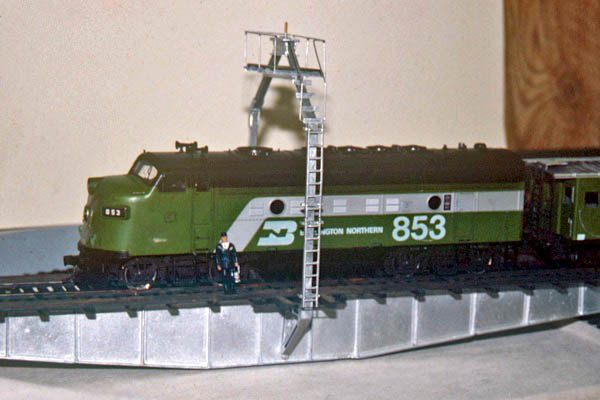
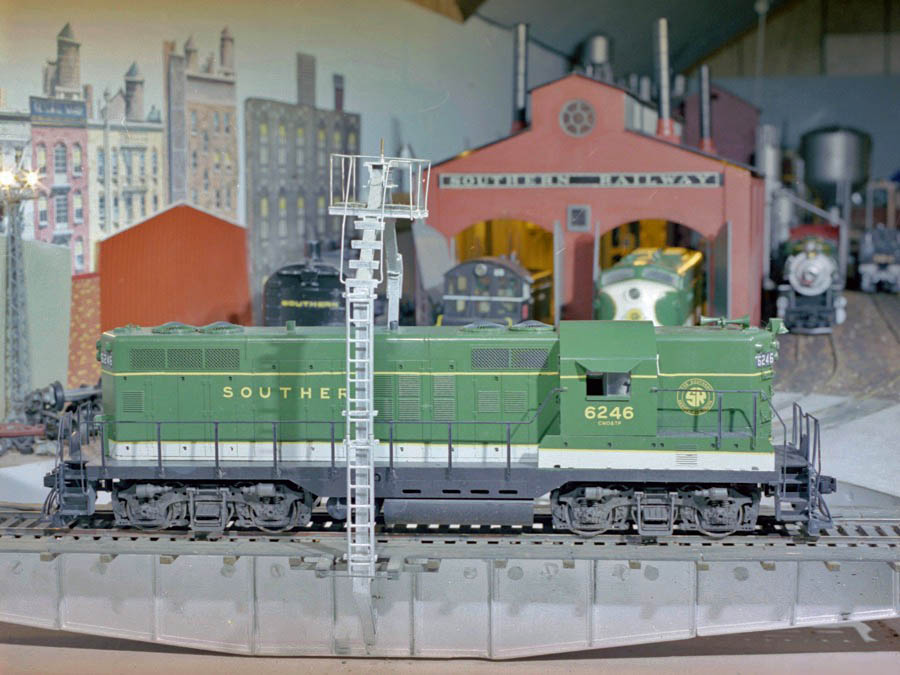
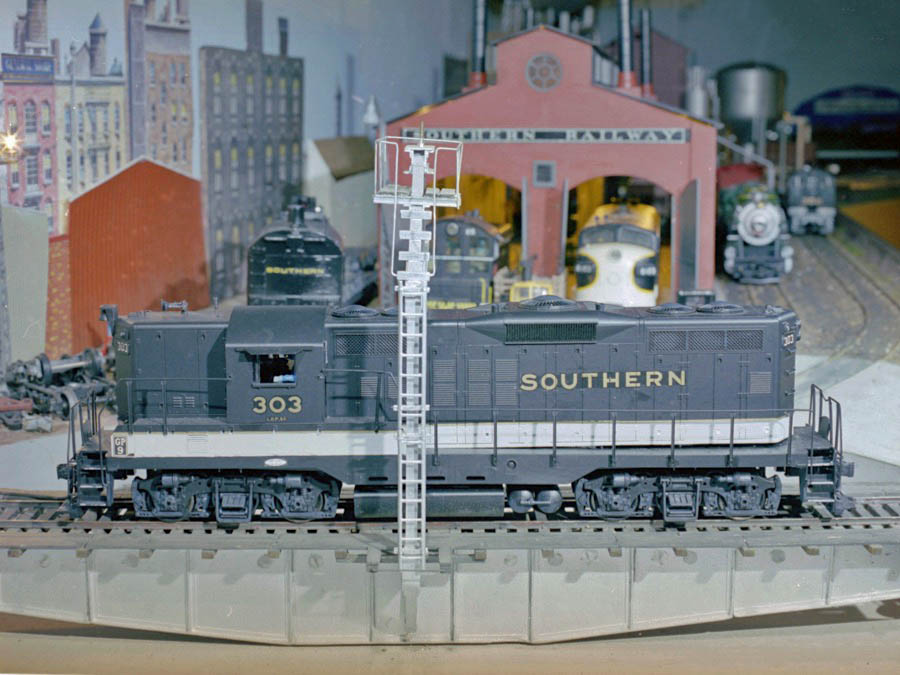
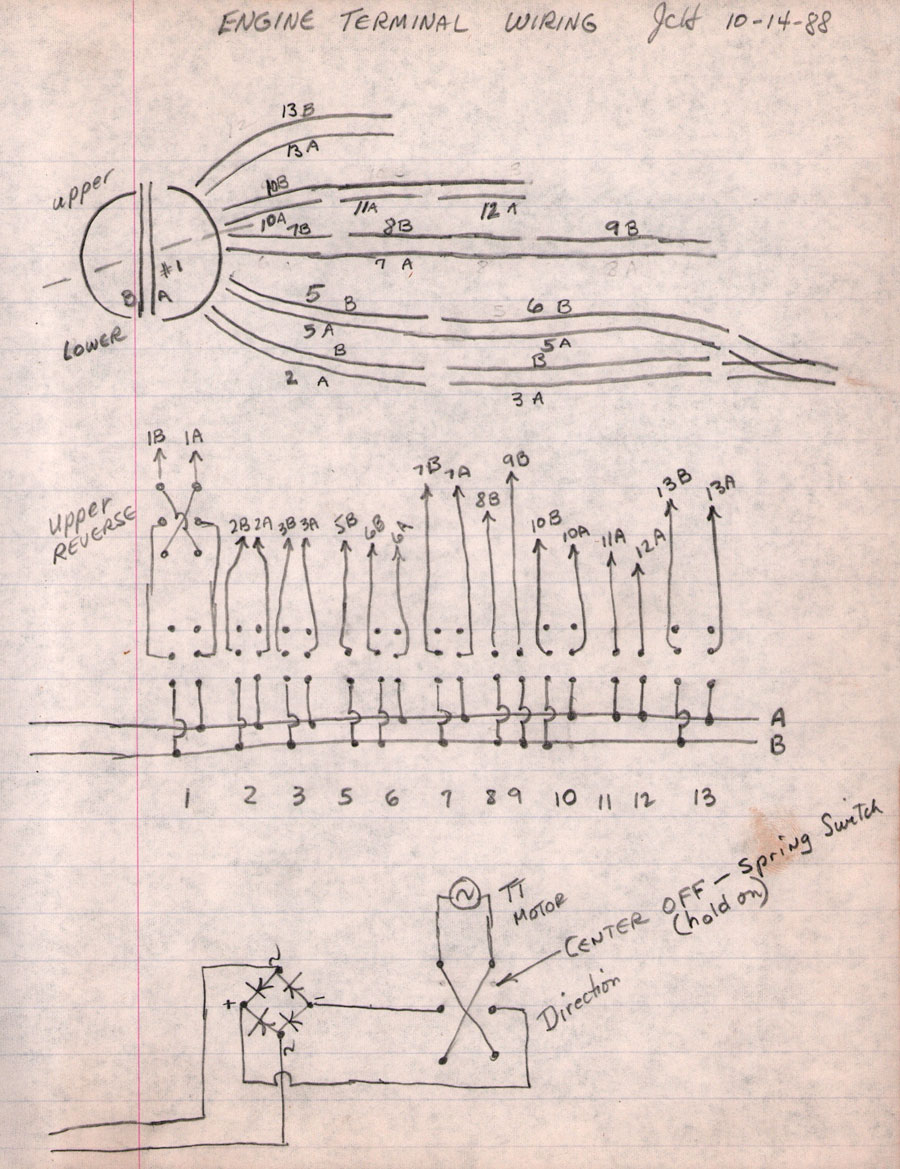
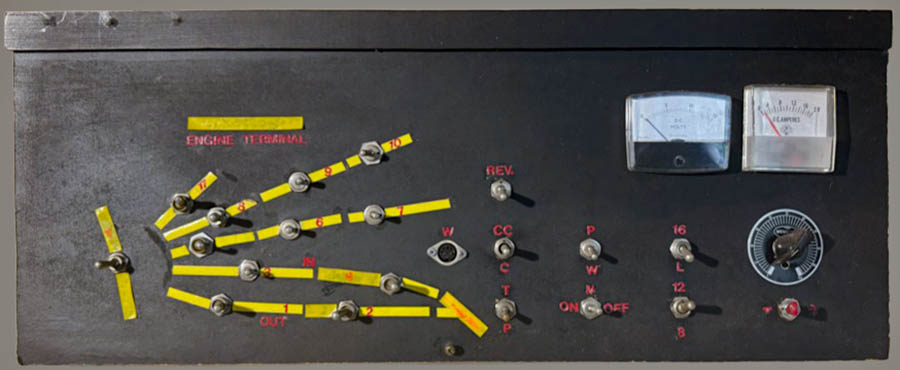
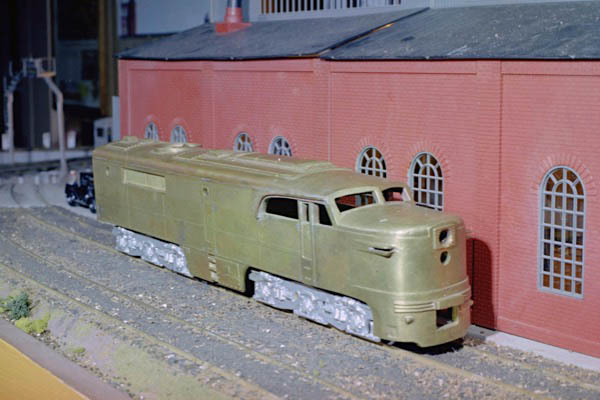
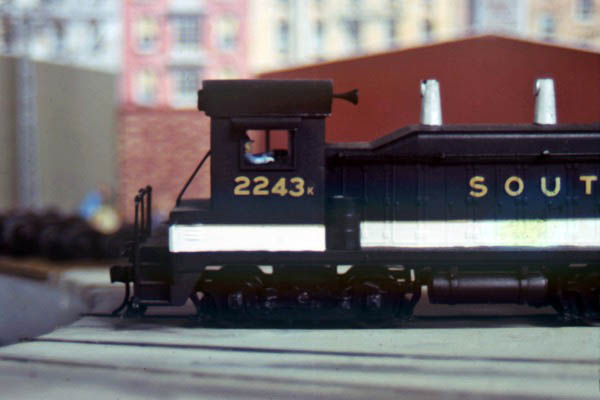
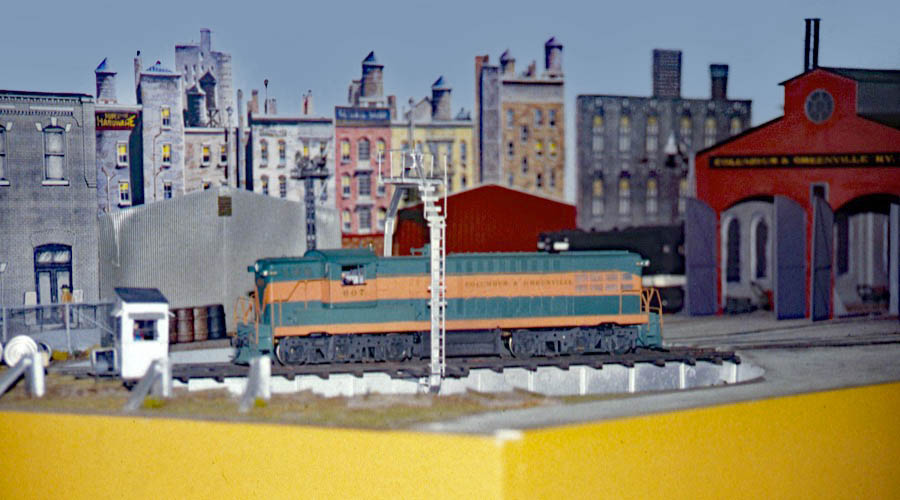
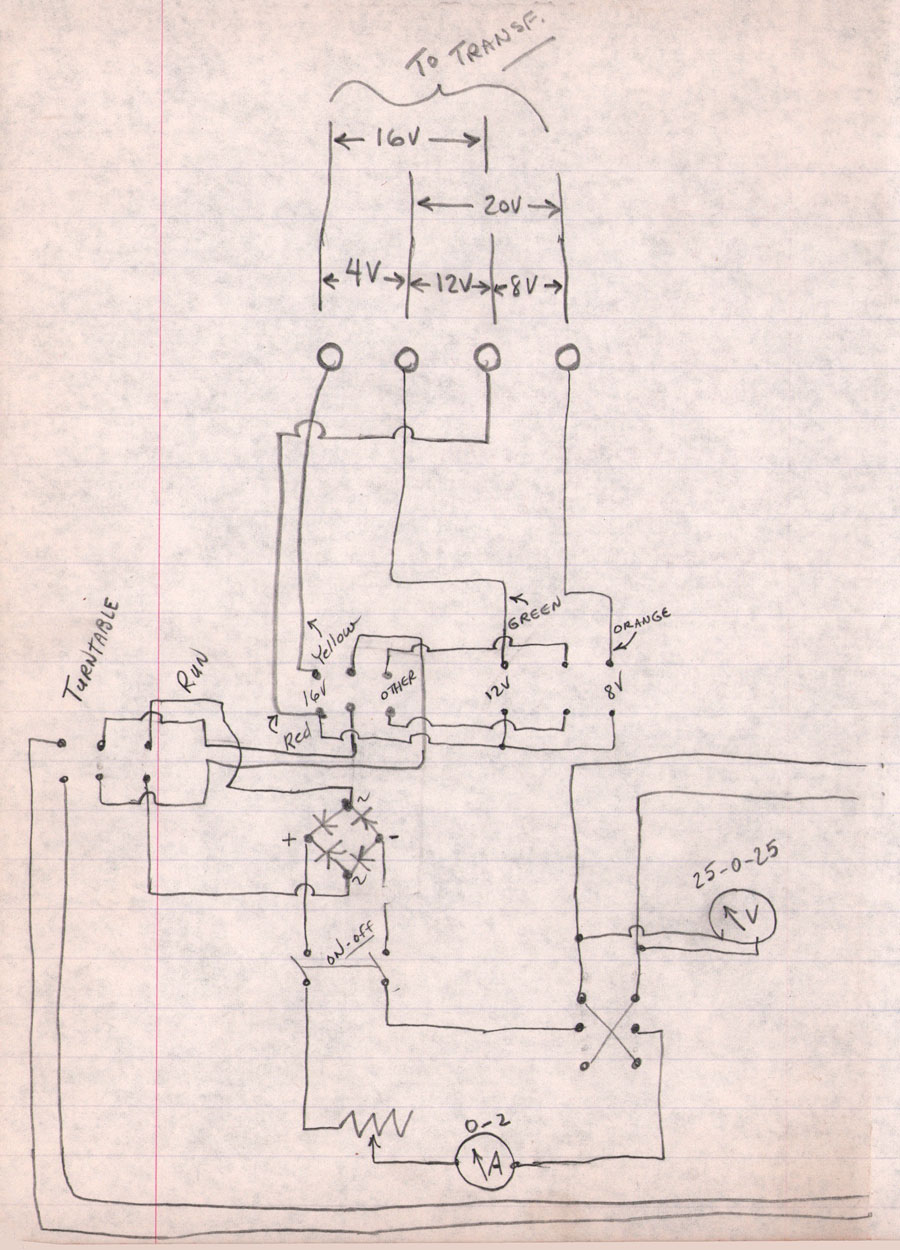
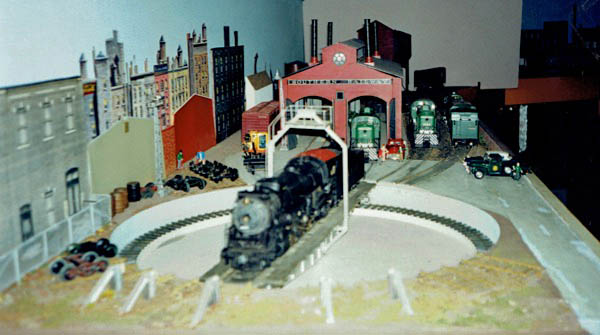
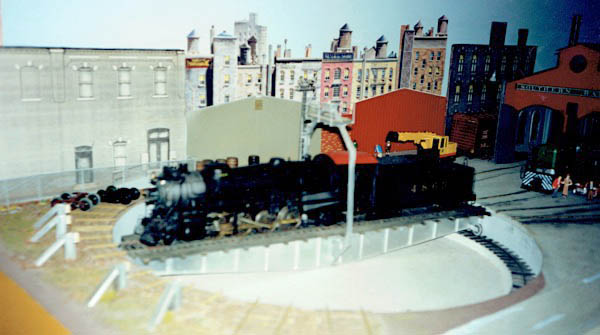

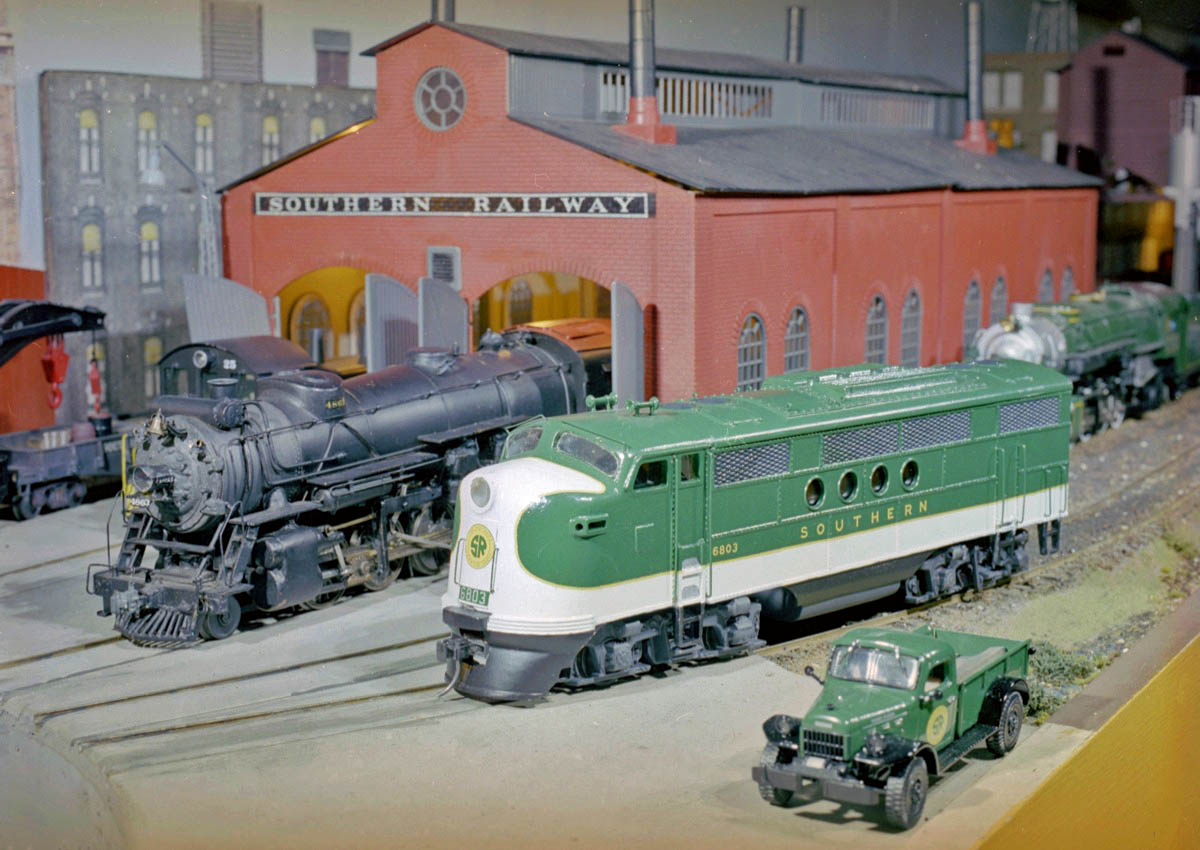
 Columbus
Columbus
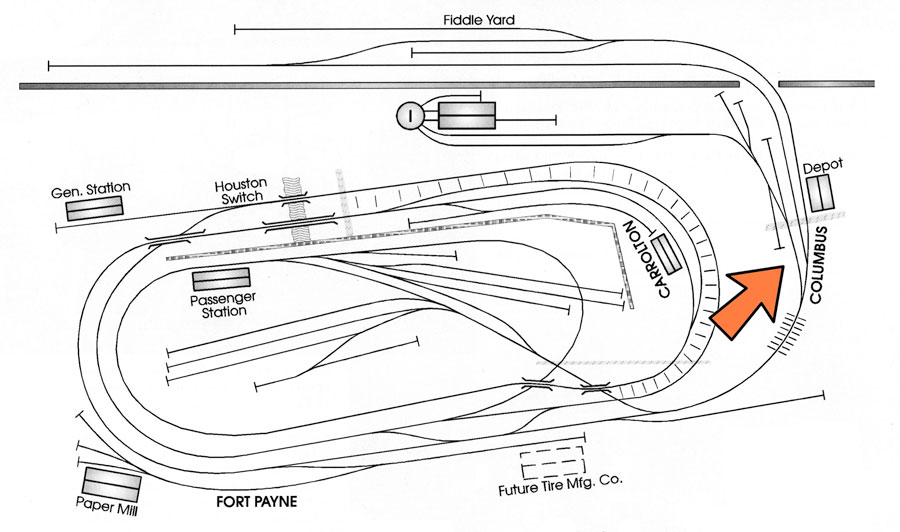
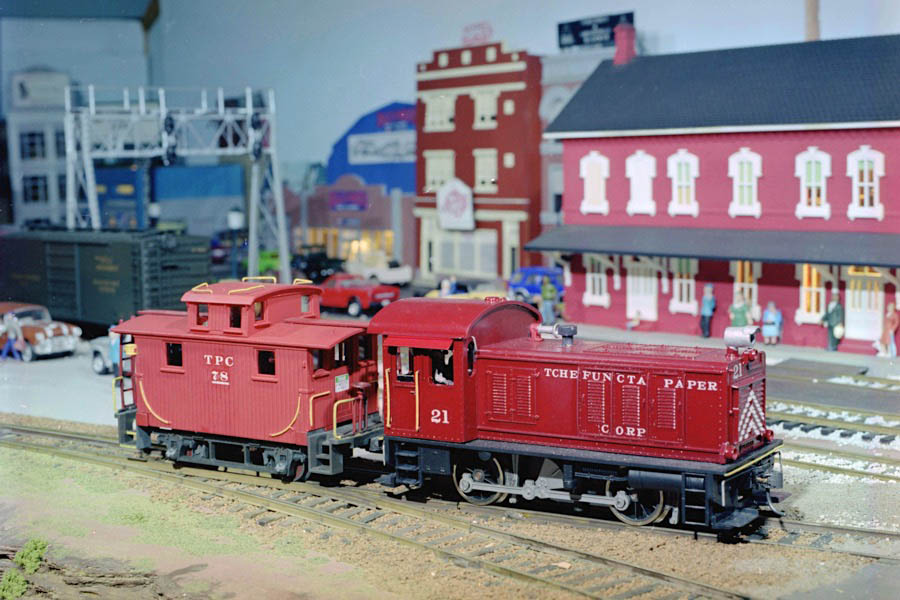
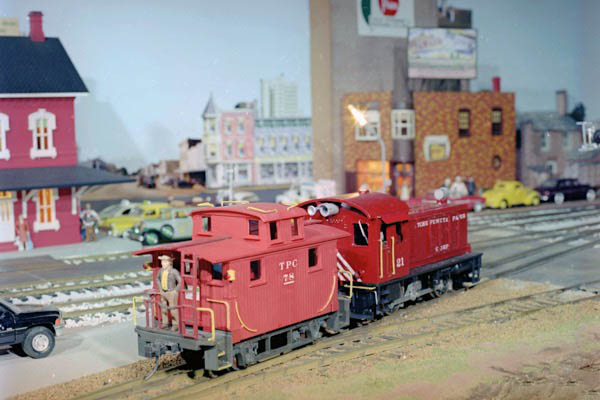
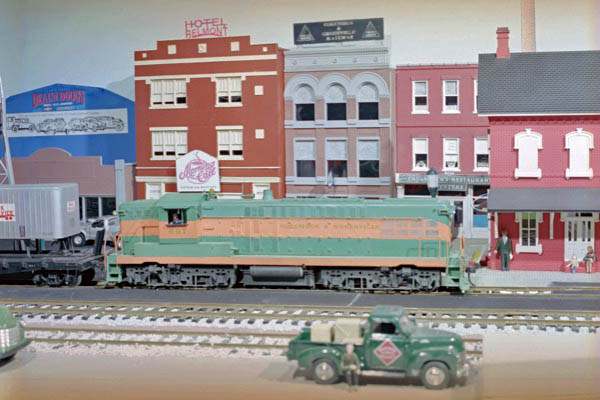
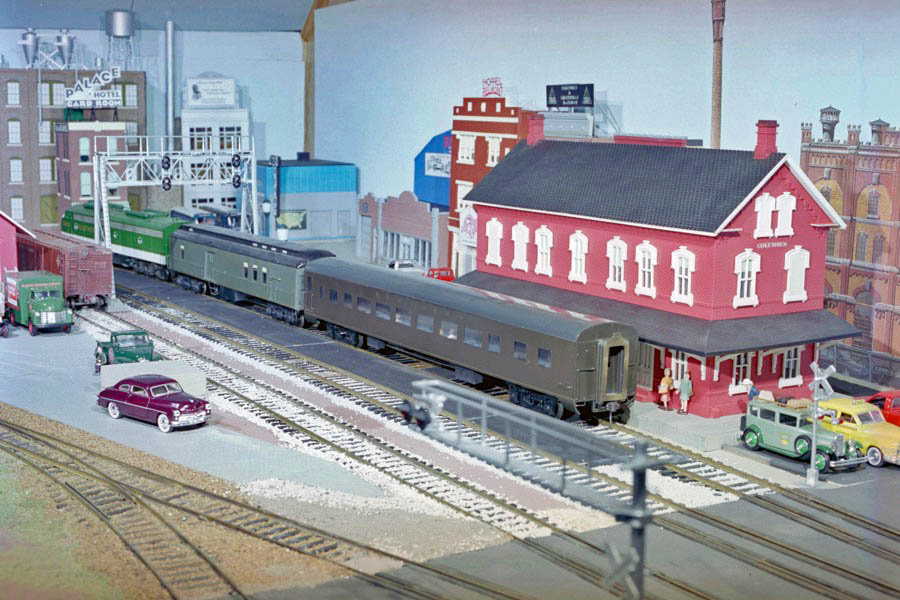

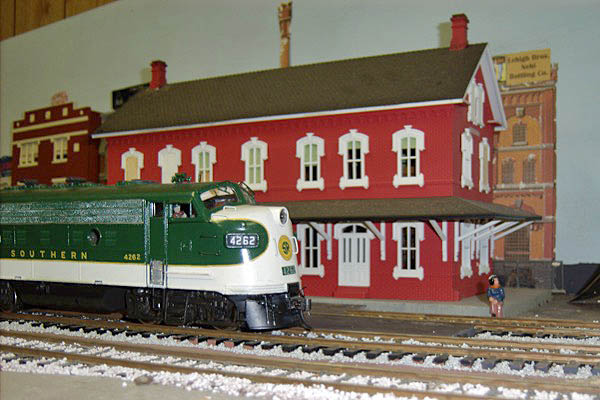

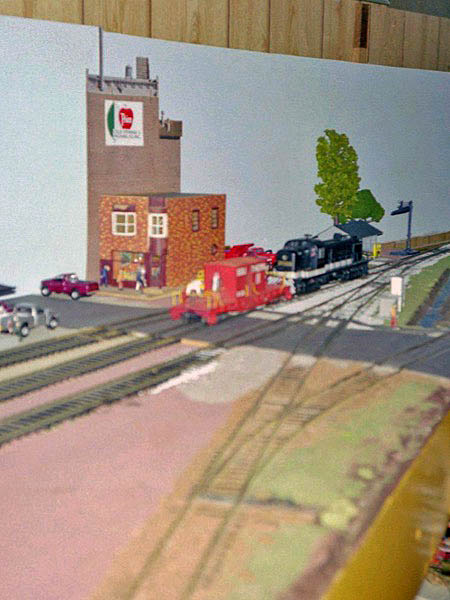

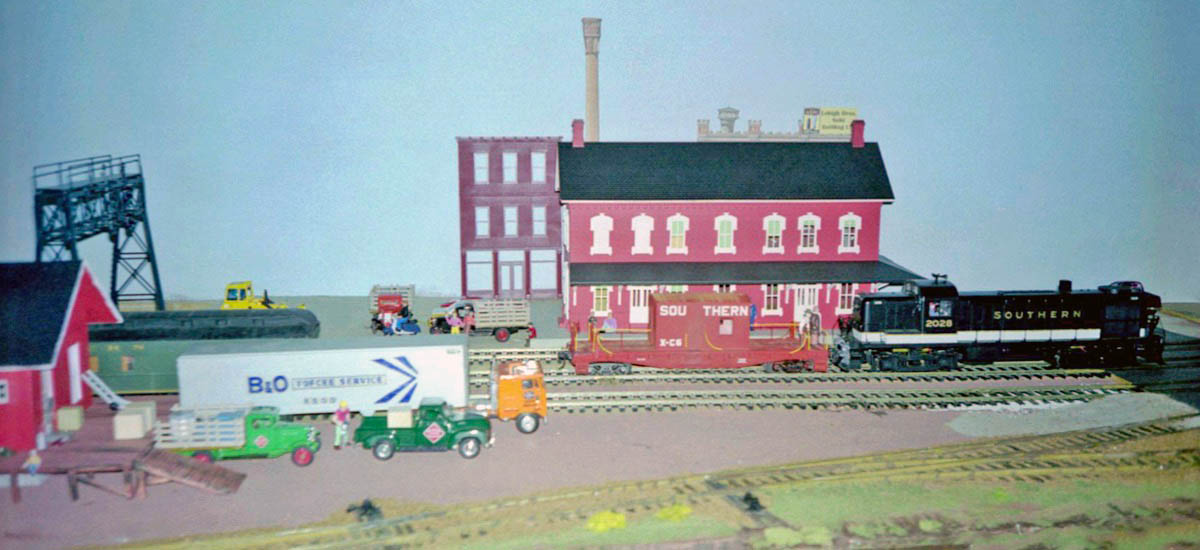
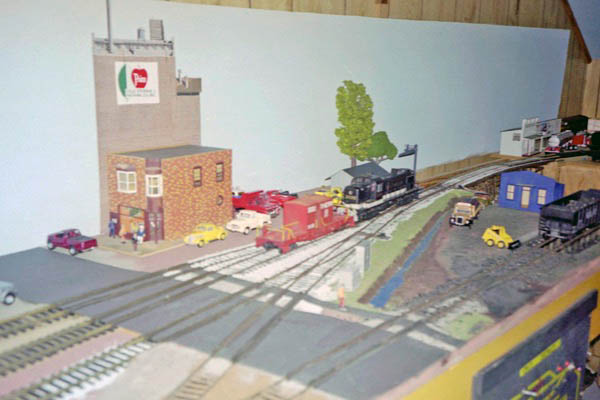
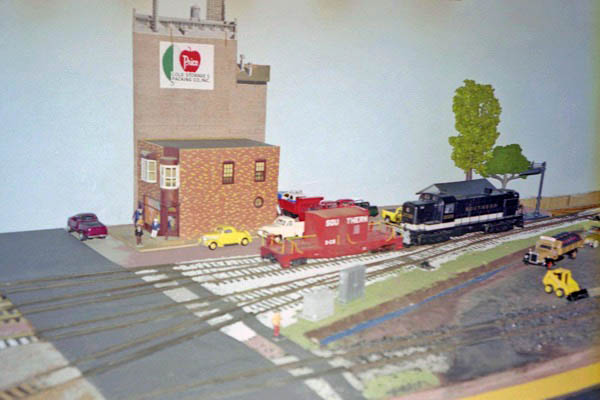
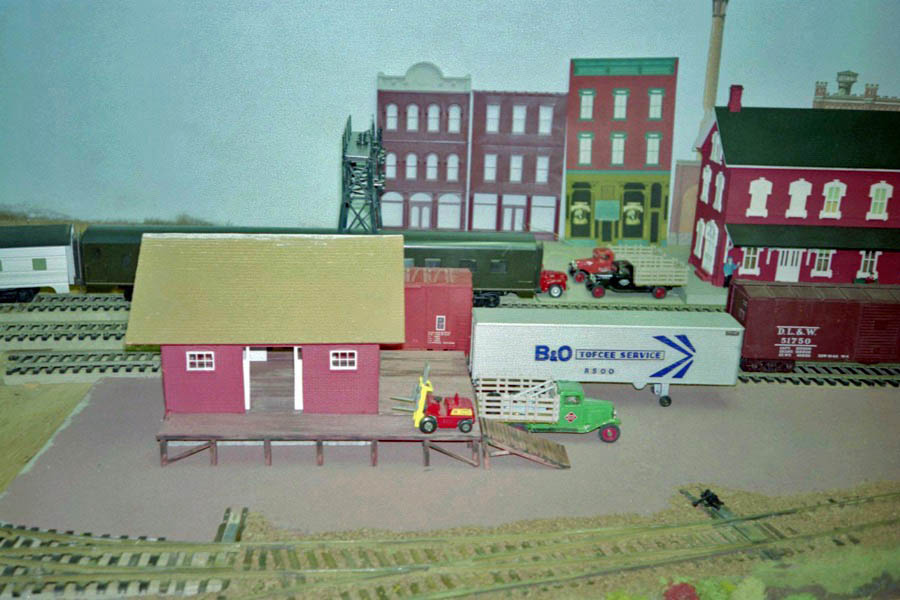
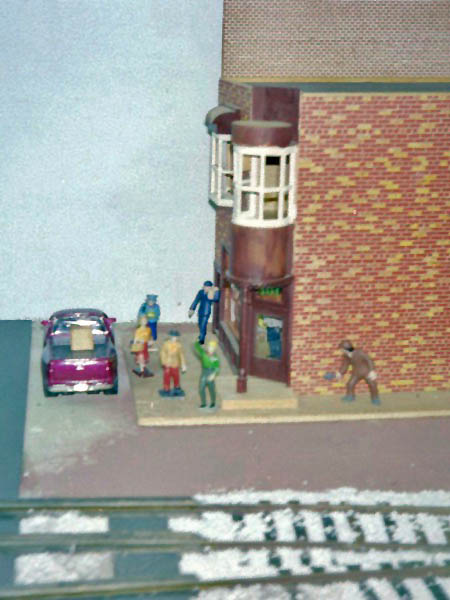
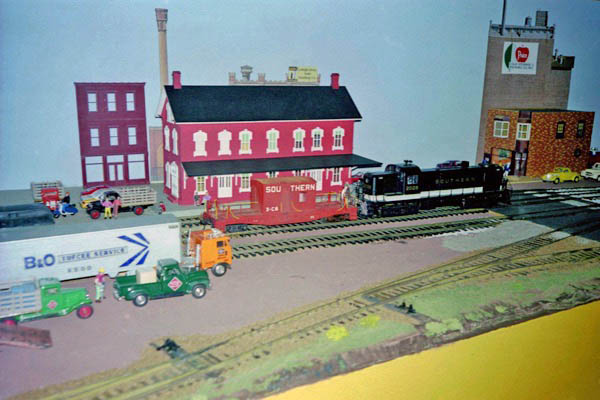
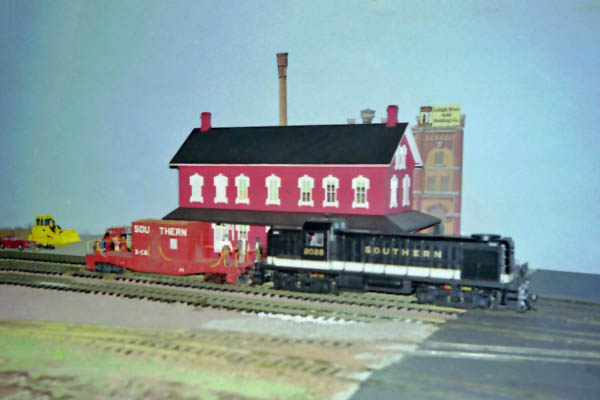
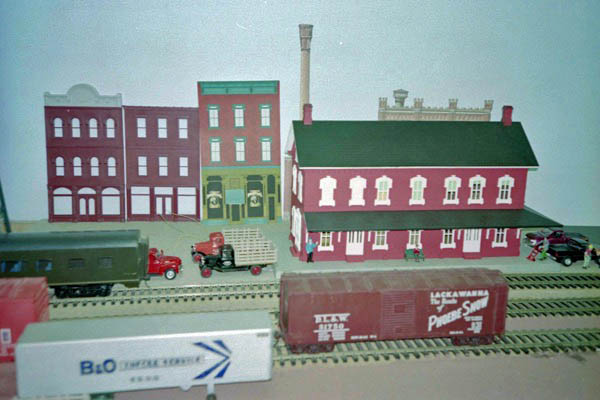

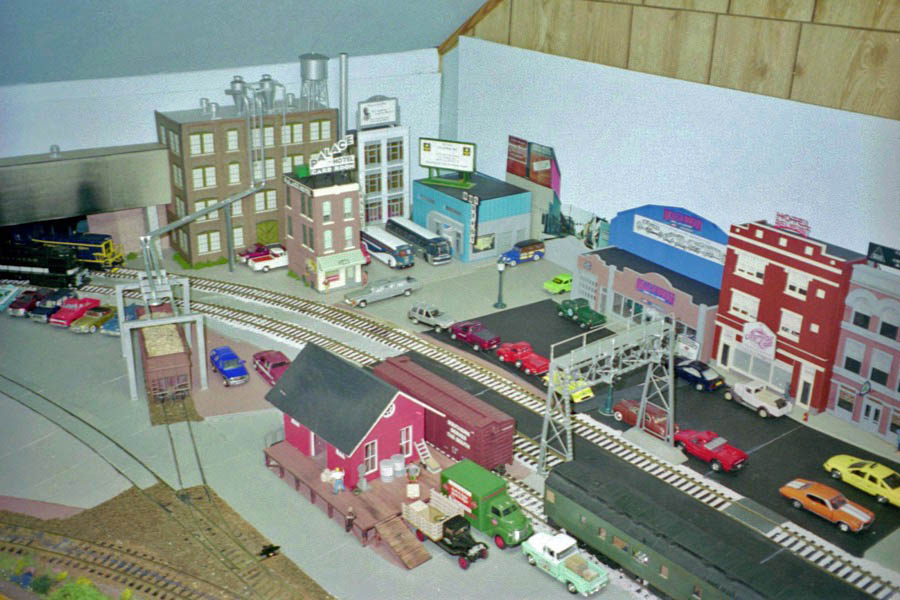
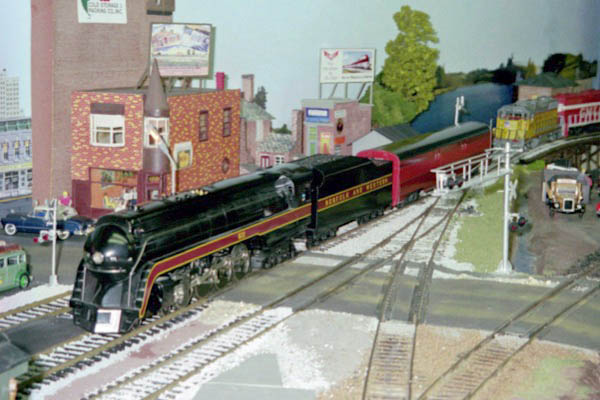
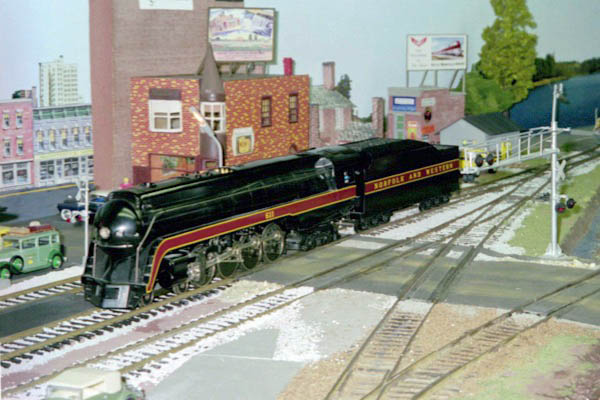
 Carrolton
Carrolton

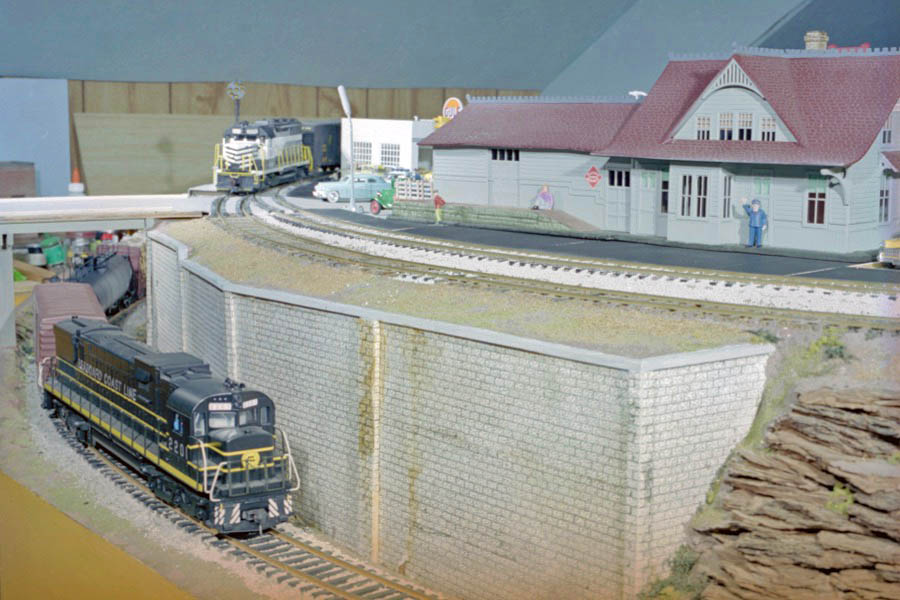
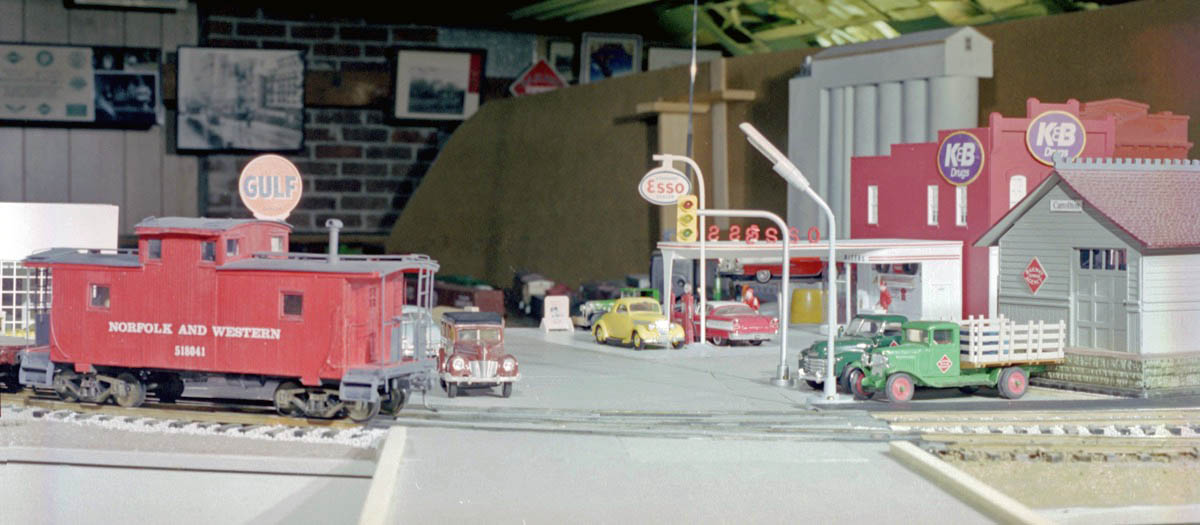
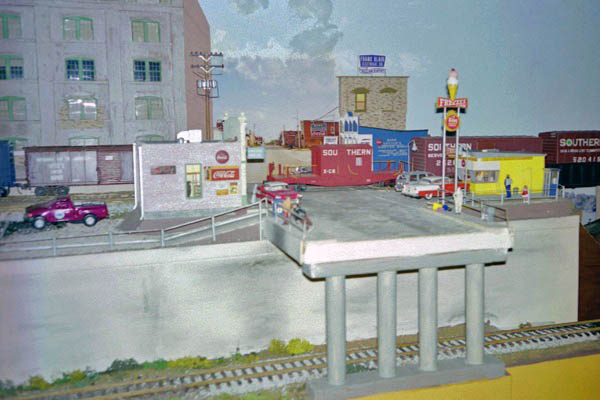
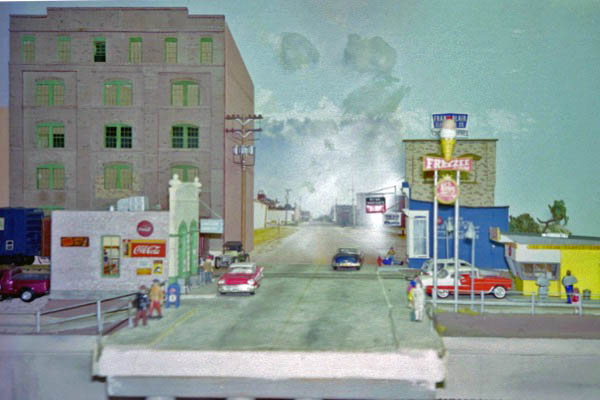
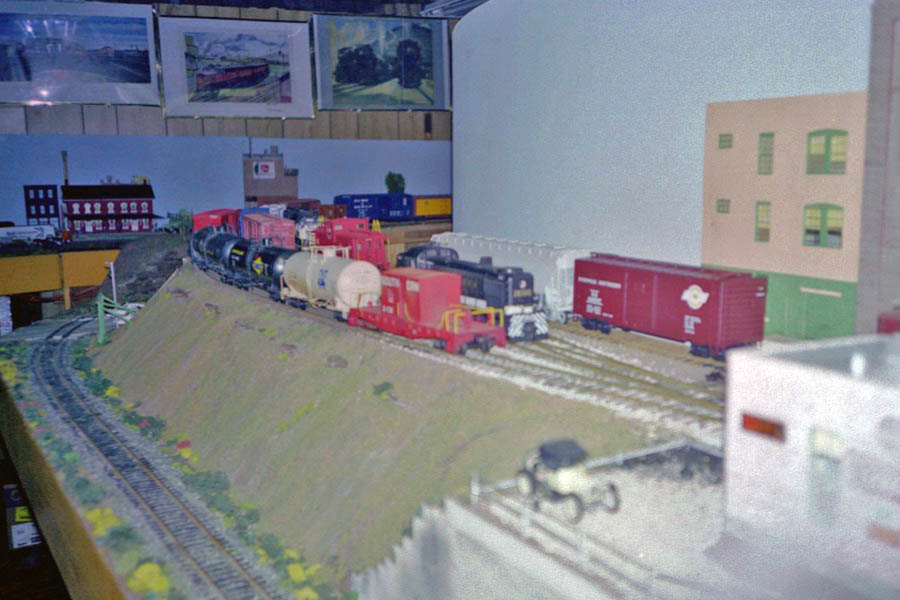
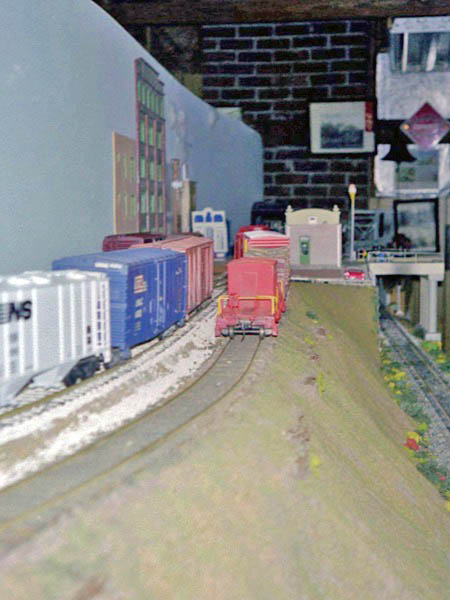
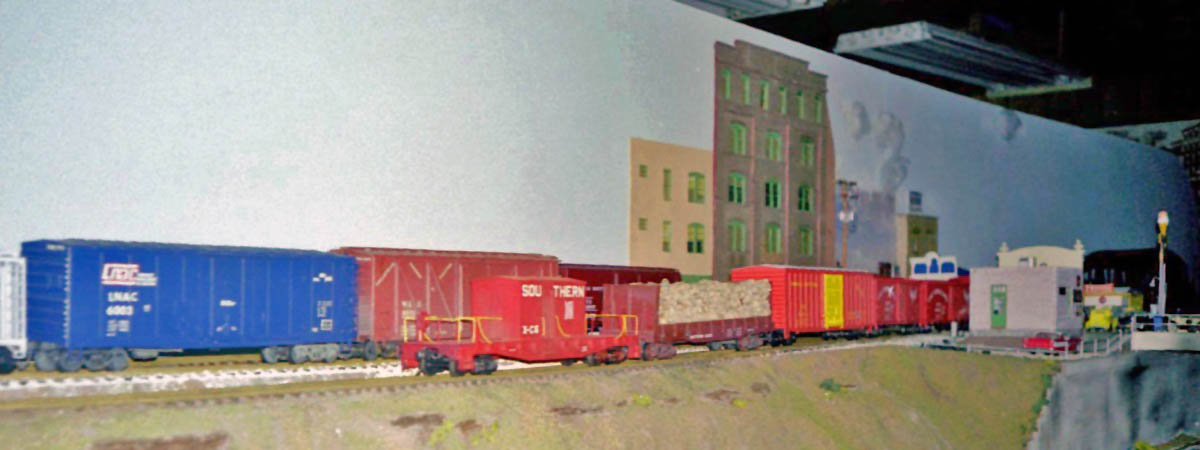
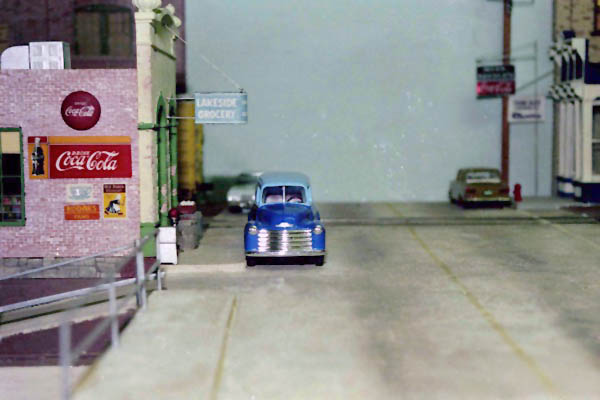
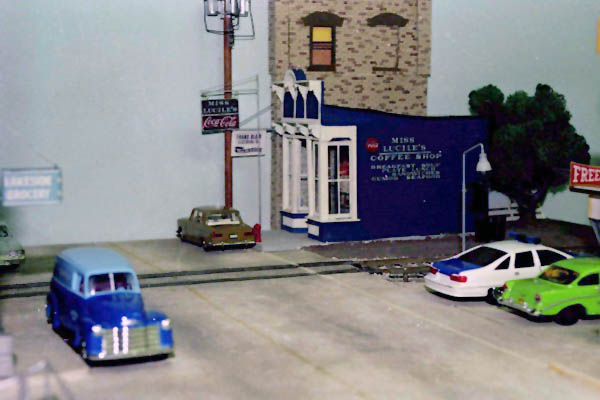
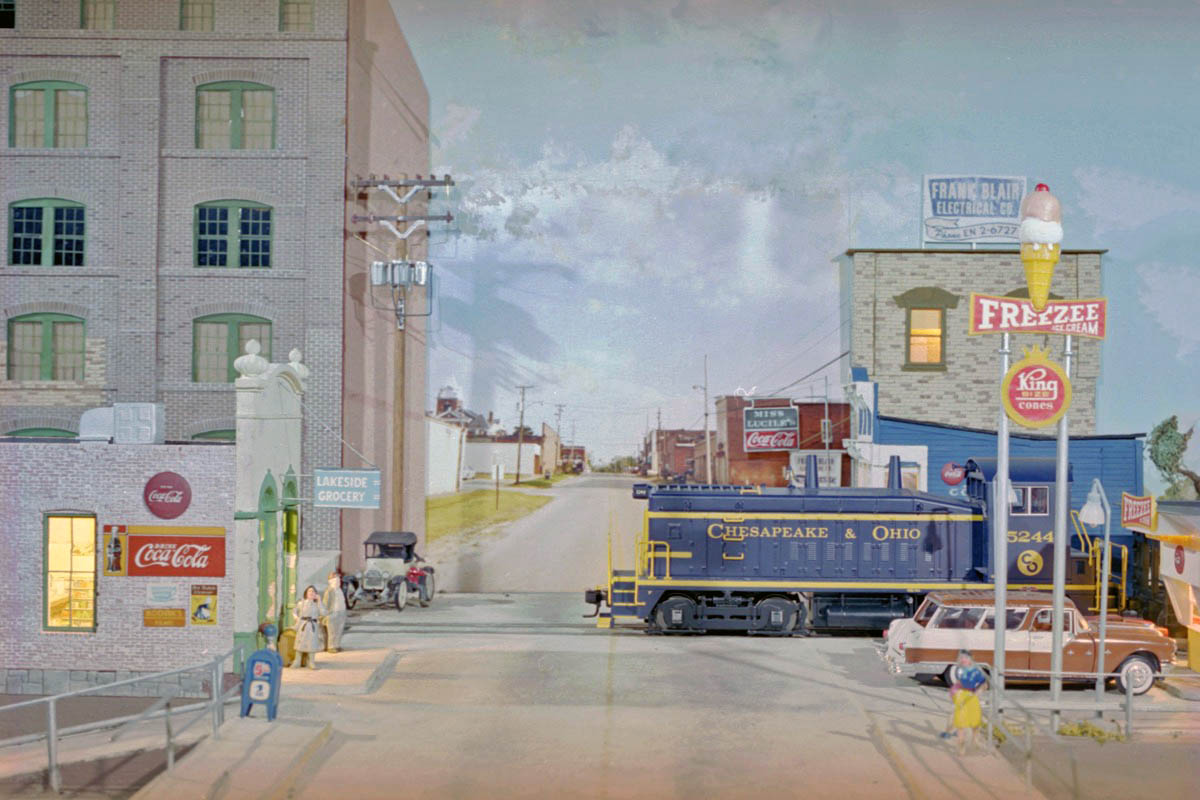
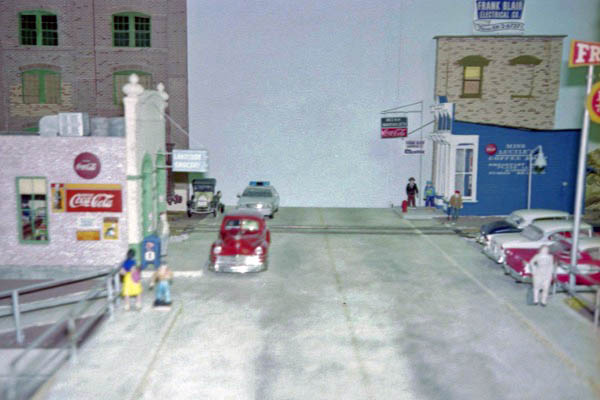
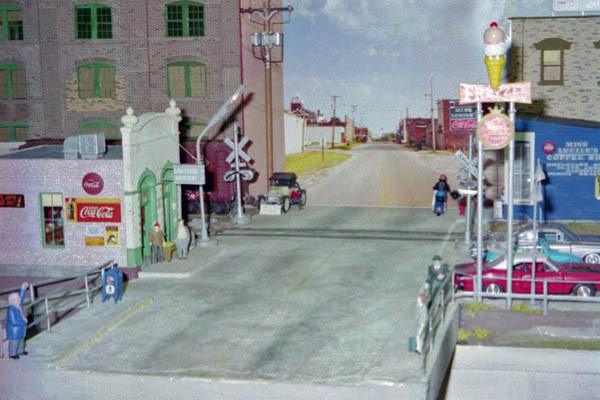
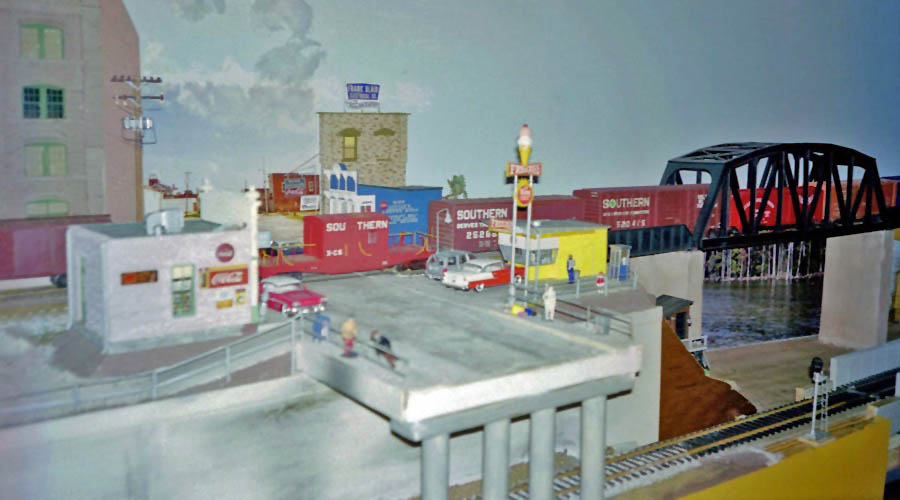
 American Paint Works
American Paint Works
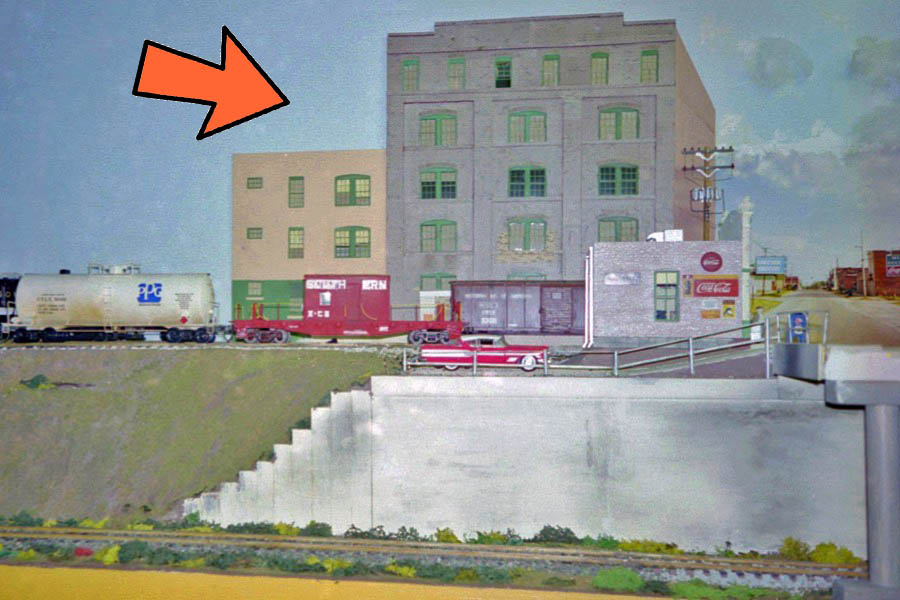
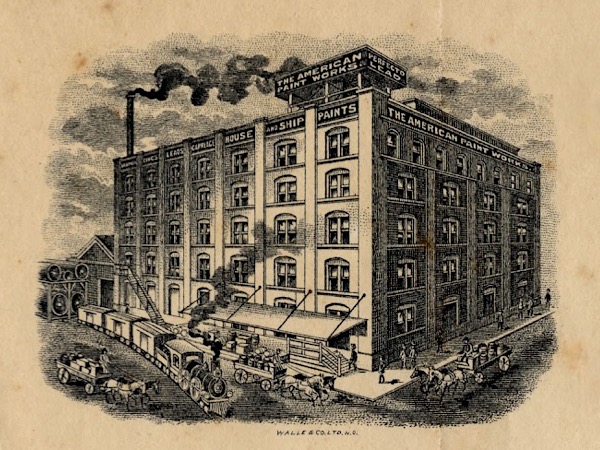
collection
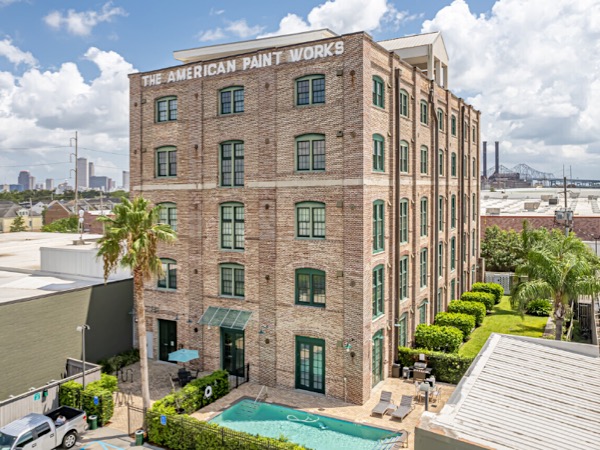
web

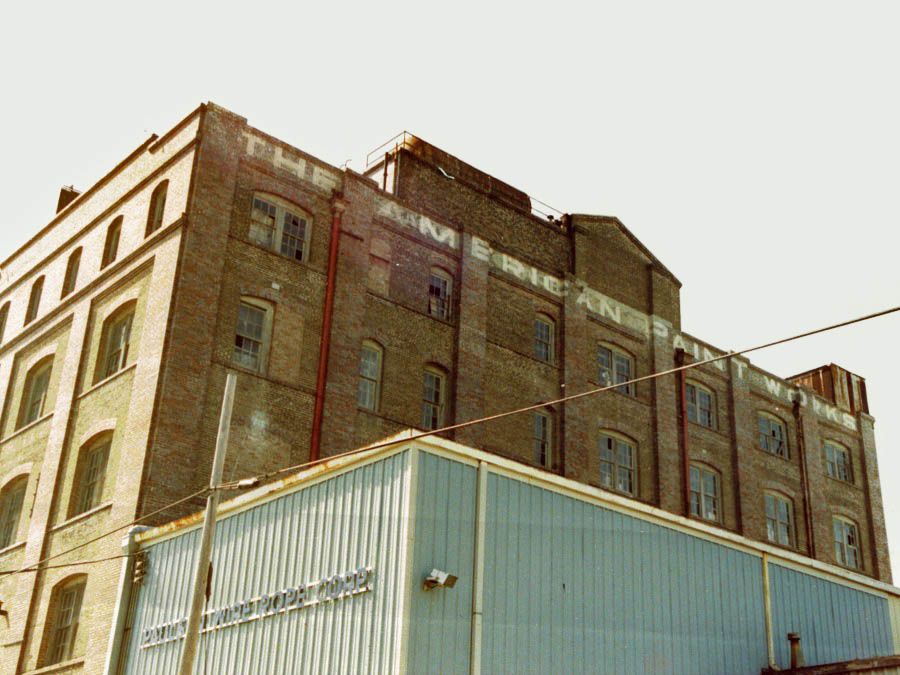

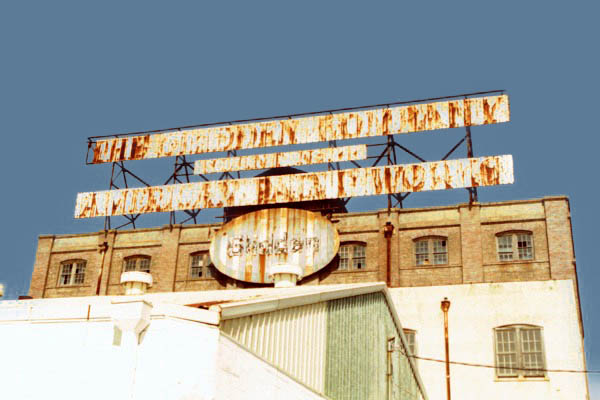
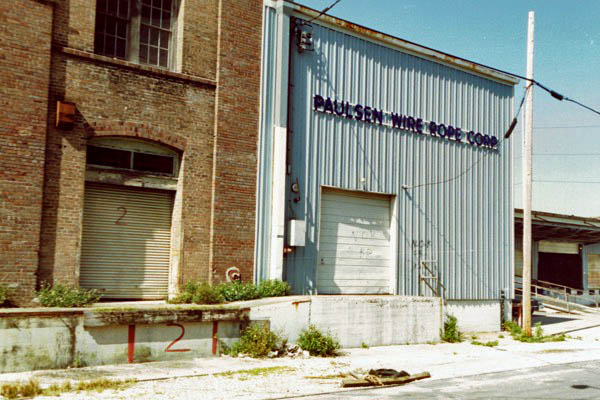


 When I first saw the American Paint Works building in New Orleans in the mid 1950's I was impressed with it's modeling possibilities. It was tall and rather narrow and had a railroad spur with a loading dock on its street side. Both boxcars and tank cars of linseed oil were spotted on this spur for loading and unloading. By the 1950's the American Paint Works was owned by The Glidden Company but the American Paint Works signs were still on the building. One large illuminated sign was mounted on the roof of the building facing the Mississippi River and could be seen from the west bank day and night. This plant produced various types of paint and varnish and shipped by both rail and truck all over the Gulf south. Adjacent to the main building was a three story office building that housed both the factory office and the regional sales office. In 1965 the Glidden Company closed the plant and sold the building. The building still exists today but it is used as a warehouse. My father-in-law worked out of this building from 1922 until his retirement in 1959, so it has a family association for us.
When I first saw the American Paint Works building in New Orleans in the mid 1950's I was impressed with it's modeling possibilities. It was tall and rather narrow and had a railroad spur with a loading dock on its street side. Both boxcars and tank cars of linseed oil were spotted on this spur for loading and unloading. By the 1950's the American Paint Works was owned by The Glidden Company but the American Paint Works signs were still on the building. One large illuminated sign was mounted on the roof of the building facing the Mississippi River and could be seen from the west bank day and night. This plant produced various types of paint and varnish and shipped by both rail and truck all over the Gulf south. Adjacent to the main building was a three story office building that housed both the factory office and the regional sales office. In 1965 the Glidden Company closed the plant and sold the building. The building still exists today but it is used as a warehouse. My father-in-law worked out of this building from 1922 until his retirement in 1959, so it has a family association for us.
In constructing my layout I had space for an industrial building flat at the end of a spur. Naturally I wanted to model the street side of the American Paint Works building and use it for this. The first order of business was to go photograph it. I was unable to get a 90 degree front shot because of a building across the street but was able to get enough pictures to lay out the building front. Close inspection of the prototype pictures will show that the brickwork is not flat all across the front but has "columns" and "rows" over the windows. Close inspection will also show that the doors on the loading entrances are different and that brick repairs were made around one of the second floor windows. This probably happened when a large piece of paint mixing machinery was installed; very likely it was too large to go up the freight elevator so it had to go through a window opening. From the photographs I was able to get the basic dimensions and layout the front side.
The building front was constructed using sheets of Bristol board which I bought at a local arts and crafts store. I had planned on buying O scale brick paper and just gluing it to the Bristol board but was unable to find any. So I made my own using a ruling pin from an old drafting set and white water base paint. The white lines were drawn on a sheet of brown construction paper. Several brick arches were drawn for the arches over the windows and doors. When I had filled up the sheet I had copies made on a color copier. While the brown on the copy was a little different from the brown on the original, all the copies were the same and I had my "O scale brick paper"! The columns were made by gluing several layers of Bristol board on top of each other and the window ledges and arches were built up with a single layer of Bristol board. Fitting the brick paper on the Bristol board took time in order to ensure that all mortar joints were straight. The repaired part of the wall was modeled by using a few square inches of Walthers building paper that I had on hand. Windows and window glass were modeled by using the ruling pin and green water base paint to draw lines on cellophane. The white edges of the Bristol board were painted boxcar red, which was a good match for the brown brick color.
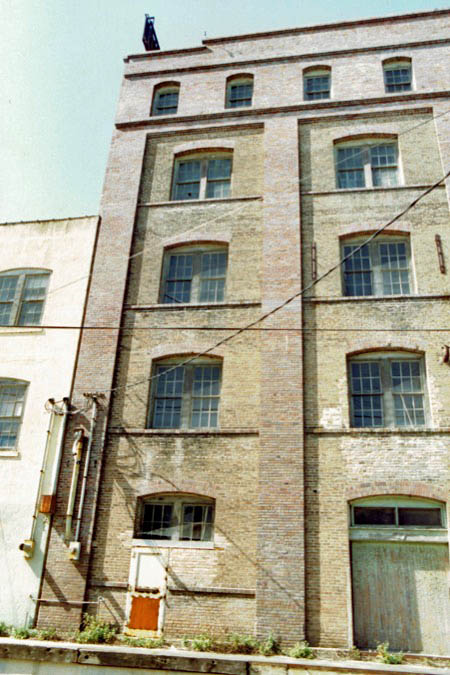
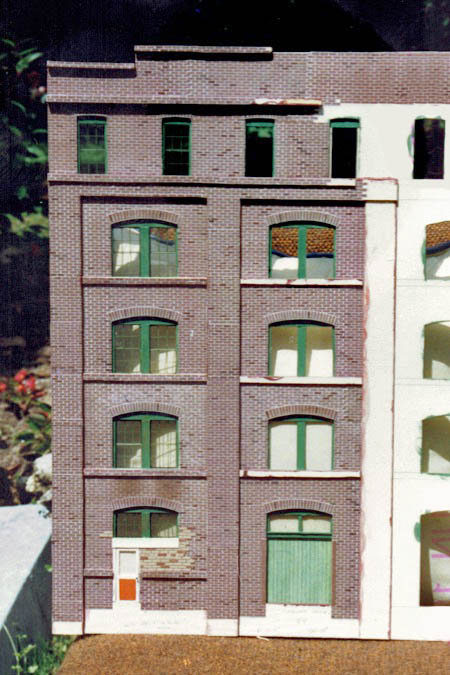
The office part was modeled separately and fitted to the main building on the layout. Bristol board was also used for it but was painted in the two colors that are nearest to the present day colors. My brother-in-law doesn't think that these were the colors of the office in the 1950's so the exact color isn't important. After the building was mounted on the barrier divider wall of the layout, the loading dock and stairs were made using Bristol board also. The loading dock is only four scale feet deep due to space restrictions for clearance to the side track but this isn't noticeable in looking at the building. Shadow boxes were installed behind the second floor of the main building and the office building so that lights could be installed. The windows are frosted so no detail is visible but it appears that some activity is going on at "night". One top floor window in the factory was left open and a figure installed looking out (taking a well-deserved break or just goofing off?). The light, conduit, and light shade on the right side of the office building was modeled using an HO set obtained from Walthers. It only needs 1.5 volts so I just fed it from a battery mounted under the layout with an on-off switch in the circuit.
The American Paint Works sign was made using 1/4 inch Champ Railroad Roman decals from an alphabet set. There was a sign on the front of the building years ago but the one old photo I have doesn't clearly show it. I therefore "freelanced" a sign for it modeled after the lettering on the large roof sign that faces the Mississippi River. As far as I know there wasn't any sign mounted over the office building but I wanted to display and use an old advertisement postcard I have so I mounted it over the office. This postcard, which dates from the 1930's, was issued to advertise Climatic Paint, a line of paint made by the American Paint Works then. (Climatic Paint was supposed to be specially made to withstand the Gulf coast climate.) I especially wanted to use the postcard because our house is the house pictured on it and my layout is in the attic of this house! In addition it seems like a wonderful vintage advertisement from the 1930's.
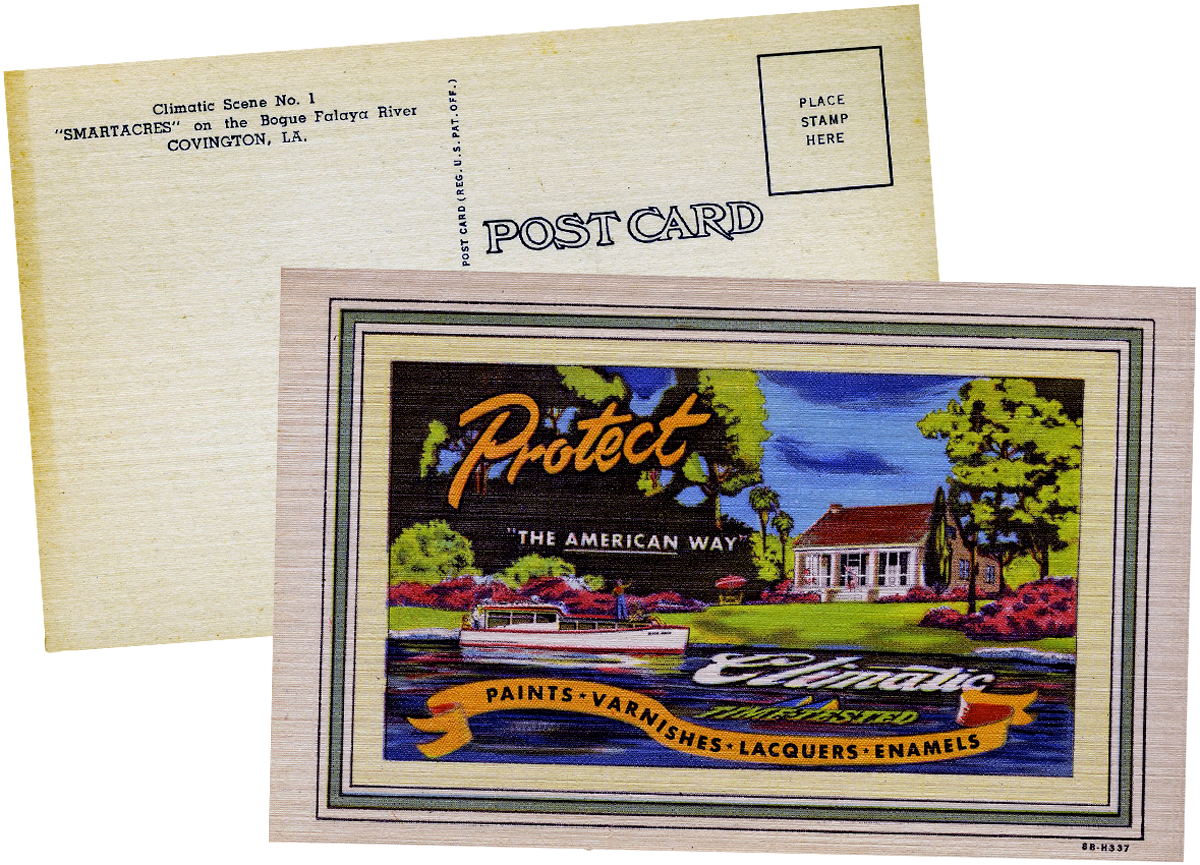 The American Paint Works takes up very little space and can use both box and tank cars. An industry this size used at least a half a dozen cars a week so it will increase traffic on the model railroad. It's not necessary to copy this building exactly to have an authentic model of a paint manufacturing facility. DPM modules could be used for a generic building with the same results. The important thing is to get another industry on your line, one that ships by rail!
The American Paint Works takes up very little space and can use both box and tank cars. An industry this size used at least a half a dozen cars a week so it will increase traffic on the model railroad. It's not necessary to copy this building exactly to have an authentic model of a paint manufacturing facility. DPM modules could be used for a generic building with the same results. The important thing is to get another industry on your line, one that ships by rail!
In a way this model is an example of the America of years ago when manufacturing took place almost anywhere. For almost 60 years, 75 to 100 people made a good living making paint in this building. For that same 60 years the New Orleans Public Belt Railroad made good money switching it. Wouldn't it be great if we had modern versions of the American Paint Works all over America!
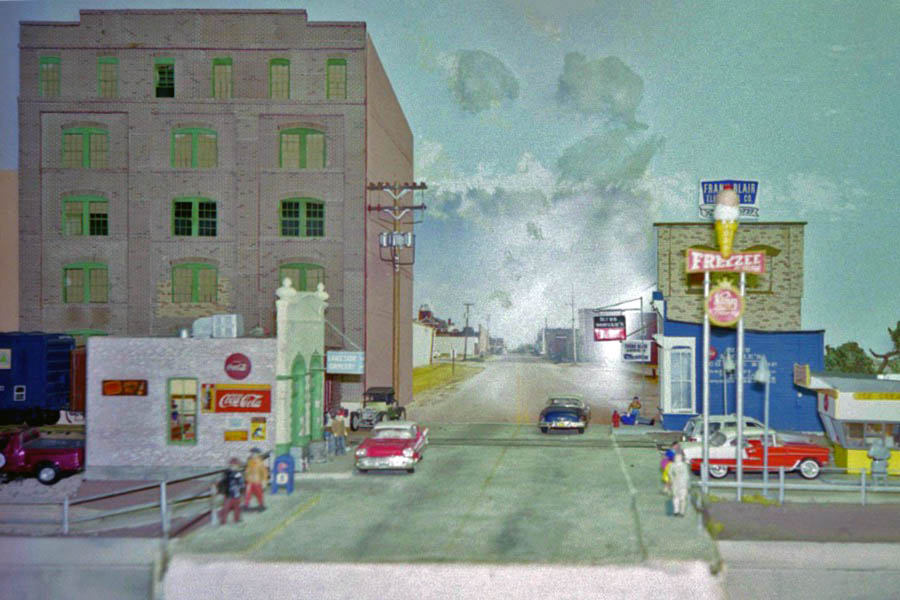
all photos above: New Orleans, La / JCH unless noted
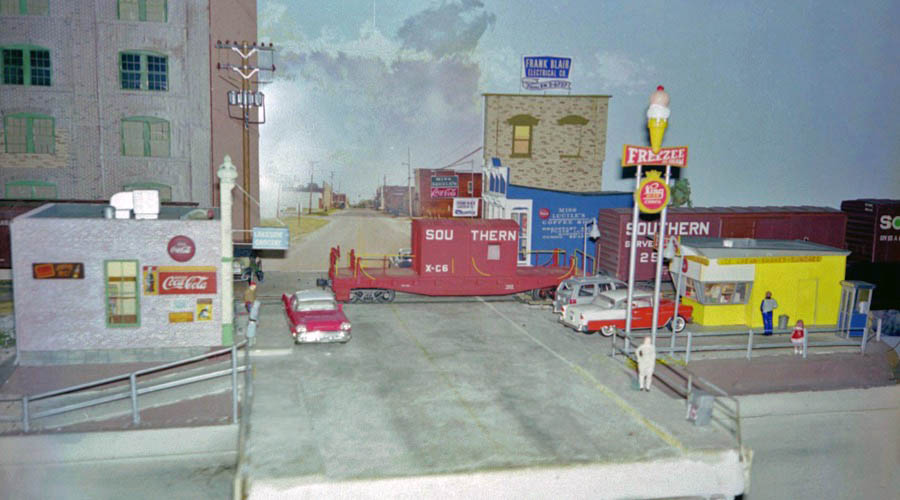

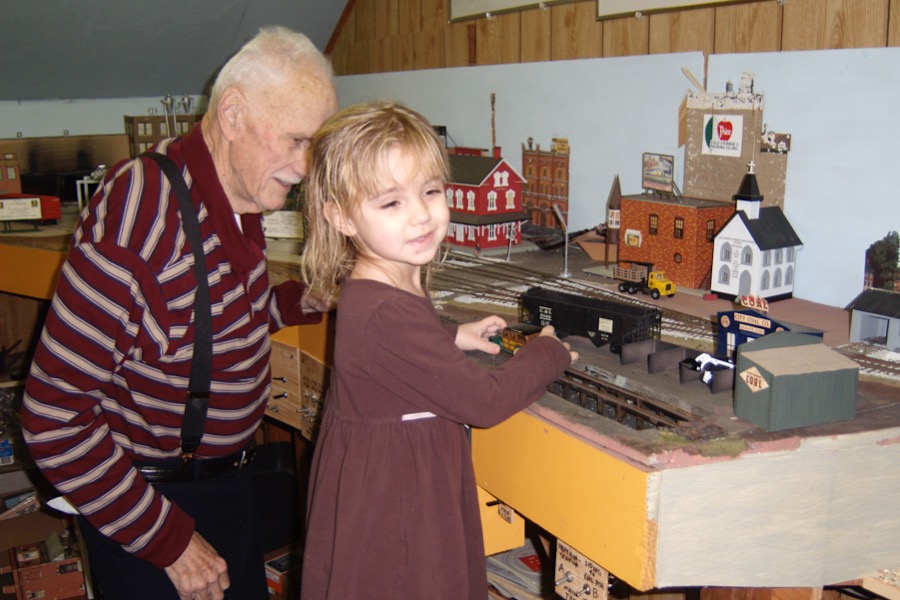 My love of trains very truly began with my grandfather’s O Scale model layout. Before I can tell of the layout itself, I must set the scene of the place where it resided. Our family property, SmartAcres—where both my grandmother and father grew up, and where my grandparents lived in my very young years—is a truly magical place indeed. The original house, built in the 1930s, sits tucked up on the sleepy side of Covington; facing the slow brown river, framed with majestic live oaks and camellia bushes in the spring. As a little girl, visiting Mimi and Papa’s house was akin to entering into a fairytale. The inside of the house was even better, and my favorite part was the sunken living room. It sits at the southeast corner, all mahogany, with a ceiling that seemed to reach the sky; that room to this day has the most distinct and lovely smell of rich wood and must. Winding around it, opposite the fireplace, there is a grand staircase (or at least it felt so grand as a child), and that very staircase — dusty, creaky, and bleached from the hot Louisiana sun as it was — led to the treasure at the center of it all.
My love of trains very truly began with my grandfather’s O Scale model layout. Before I can tell of the layout itself, I must set the scene of the place where it resided. Our family property, SmartAcres—where both my grandmother and father grew up, and where my grandparents lived in my very young years—is a truly magical place indeed. The original house, built in the 1930s, sits tucked up on the sleepy side of Covington; facing the slow brown river, framed with majestic live oaks and camellia bushes in the spring. As a little girl, visiting Mimi and Papa’s house was akin to entering into a fairytale. The inside of the house was even better, and my favorite part was the sunken living room. It sits at the southeast corner, all mahogany, with a ceiling that seemed to reach the sky; that room to this day has the most distinct and lovely smell of rich wood and must. Winding around it, opposite the fireplace, there is a grand staircase (or at least it felt so grand as a child), and that very staircase — dusty, creaky, and bleached from the hot Louisiana sun as it was — led to the treasure at the center of it all.
Up those stairs, and past the alcove bookcase (yet another gem of the house), there was a little step-up to a door. The climb of that staircase was always my very favorite part of any trip, for behind that door, lay a simply wonderful world in miniature. At five years old, the lofted tables where the trains ran seemed like a world in the clouds—but thankfully Papa kept several sturdy step stools in that attic room—and so I would step up, and on my tippy toes peer into a most fantastic sight. I’ve always had a strong penchant for small things, dolls and knick-knacks alike, and an O Scale layout was only fuel on that fire to my little self. Everything was just the right size to me.
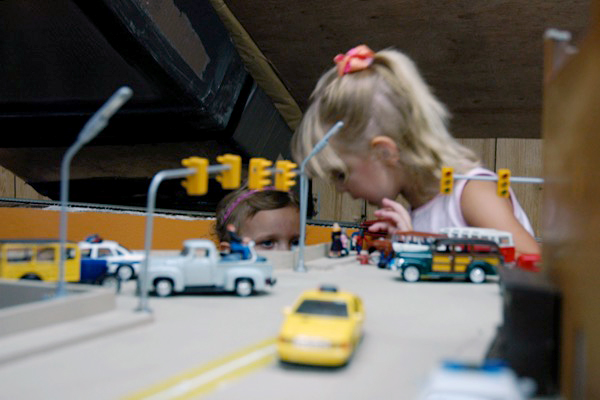 Oh, how I delighted in the people the size of my pinky finger, in their old-timey clothes, standing on their little clear plastic stands—like all things in the attic layout, lovingly cut and glued by my Papa. The automobiles were wonderful too, metal cool to the touch, shiny lacquer in bright colors, with tiny doors that really opened! And the buildings too were spectacular, some had real interiors, and I adored peeking in and imagining all the things these small beings could get up to. There was a large trestle bridge, and at the bottom a little river, where on the banks there was real sand! It was one of the only things I could reach on my own, and I remember getting in a little trouble for spilling it on the floor. On one end of the loop sat what I called “the Big City,” where there were rubbery-smelling bendy stoplights, and paved roads with tiny yellow stripes. I think that was always my favorite spot. But the whole layout was a major spark to my already overly-imaginative young mind, and it felt as though I spent hours up in that muggy oven-of-a-room, playing with cars and people, watching little trains whizz by, all under the warm gaze of my grandfather.
Oh, how I delighted in the people the size of my pinky finger, in their old-timey clothes, standing on their little clear plastic stands—like all things in the attic layout, lovingly cut and glued by my Papa. The automobiles were wonderful too, metal cool to the touch, shiny lacquer in bright colors, with tiny doors that really opened! And the buildings too were spectacular, some had real interiors, and I adored peeking in and imagining all the things these small beings could get up to. There was a large trestle bridge, and at the bottom a little river, where on the banks there was real sand! It was one of the only things I could reach on my own, and I remember getting in a little trouble for spilling it on the floor. On one end of the loop sat what I called “the Big City,” where there were rubbery-smelling bendy stoplights, and paved roads with tiny yellow stripes. I think that was always my favorite spot. But the whole layout was a major spark to my already overly-imaginative young mind, and it felt as though I spent hours up in that muggy oven-of-a-room, playing with cars and people, watching little trains whizz by, all under the warm gaze of my grandfather.
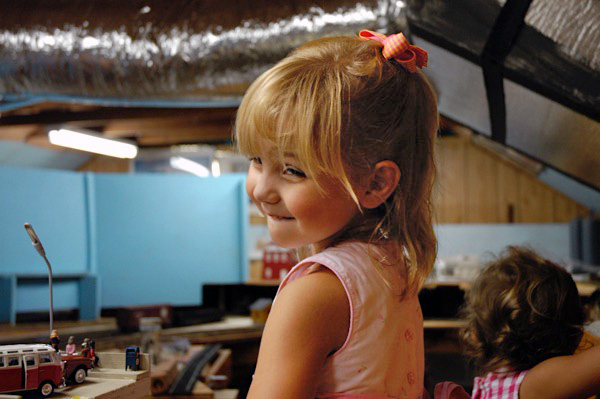 It may sound all very sugarcoated, but believe me, it all really did feel so magical. Again, truly, Papa’s attic layout began it all for me—a love of all things railroad. Sadly, he passed on when I was only five, but the attic room remained even in his absence. Dad and I still went up there every time we came to visit Mimi, and I remember begging him to take me up and play at every chance I got. There came a sad time, when I was about ten, that the house became too big for a grandmother to handle on her own, and there had to come an end to the Attic Layout.
It may sound all very sugarcoated, but believe me, it all really did feel so magical. Again, truly, Papa’s attic layout began it all for me—a love of all things railroad. Sadly, he passed on when I was only five, but the attic room remained even in his absence. Dad and I still went up there every time we came to visit Mimi, and I remember begging him to take me up and play at every chance I got. There came a sad time, when I was about ten, that the house became too big for a grandmother to handle on her own, and there had to come an end to the Attic Layout.
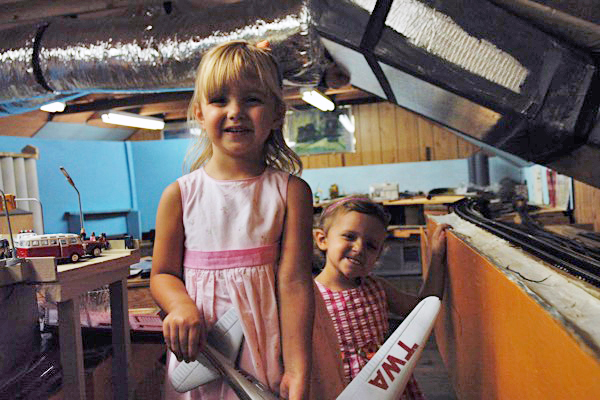 But while the room is no longer what it was (a wonderful second-floor bedroom now), it’s contents are rather longingly spread throughout my family—and my father and I specifically went on to start a semi-layout of our own, you can read about it here. (Link to the bedroom page?) The memories I have of that room—while few, and likely the weakest of all who visited—are some of my strongest from that age, and it lives on in my heart, intrinsically attached to those of my Papa John.
But while the room is no longer what it was (a wonderful second-floor bedroom now), it’s contents are rather longingly spread throughout my family—and my father and I specifically went on to start a semi-layout of our own, you can read about it here. (Link to the bedroom page?) The memories I have of that room—while few, and likely the weakest of all who visited—are some of my strongest from that age, and it lives on in my heart, intrinsically attached to those of my Papa John.
My grandfather was beloved for his Attic O Scale Layout, and you can read all about that here, but in the years after his passing, a different kind of layout came to exist in my life. When Papa moved on, Dad began to collect things off of his layout, and in those following few years, we took enough to start one of our own. This one was also in an attic (my childhood bedroom that is, on the top floor of a mid-century Craftsman house), but it was a little less permanent. We had boxes of tracks and buildings and locos, that we kept in the basement—but that came out every few months to create the Bedroom Layout. That attic bedroom was near-on 400 square feet, which meant more than enough room for an impressive temporary rail-loop. I have good memories of Papa’s layout, but my memories of our bedroom one are much stronger.
 We always ran the loop under my bed, in a great big circle around the room. Instead of being set out by a sky-blue background and paintings of locomotives, this one was framed by pink walls, dollhouses and stuffed animals. Dad cut out construction paper, and we made roads and lakes, which we set up most precisely between little houses and stores. We had a bank, a Pegasus gas station, a jailhouse, a movie theatre, and of course the paradigmatic train station. Everything a miniature town might need. A little older now, I had a specific yellow two-story picked out as “our house,” and had designated a handful of tiny people as every member of our family. A cool man with sunglasses was Dad, the woman in the LSU colored coat was Mimi, I was the little girl in the pink dress, and Papa was of course the stout old man with a sharp hat. Additionally, there was the typical cast of model-town citizens: the mayor, the sheriff, the men playing chess, the hobo, the ice-skating children, the train-travelers, the porter, and the fat ladies eating ice cream. It was quite the bustling place. What’s more, with a fine set of O Scale gondolas, I had a perfect opportunity for cross-cultural intermingling. Those gondolas carried not logs nor boulders, but indeed Barbie dolls, on their way from one end of the room to another. They fit rather comfortably in the length of a car, and I hope their travels were satisfactory. In my older years, I was allowed to really run these trains, and oh, what a joy that was; to spin the dial — slowly, Dad would caution — and hear those little engines spur, and watch the the C&O switcher rhythmically come to speed, and make its way around my own room, past the closet and stairs, and of course, under the bed. We spent hours up there, listening to music and running the train — mixed, as one might expect — with me creating a fanciful little world of my own, and my father simply happy for the chance to run said trains. Those memories are some of the fondest of my childhood.
We always ran the loop under my bed, in a great big circle around the room. Instead of being set out by a sky-blue background and paintings of locomotives, this one was framed by pink walls, dollhouses and stuffed animals. Dad cut out construction paper, and we made roads and lakes, which we set up most precisely between little houses and stores. We had a bank, a Pegasus gas station, a jailhouse, a movie theatre, and of course the paradigmatic train station. Everything a miniature town might need. A little older now, I had a specific yellow two-story picked out as “our house,” and had designated a handful of tiny people as every member of our family. A cool man with sunglasses was Dad, the woman in the LSU colored coat was Mimi, I was the little girl in the pink dress, and Papa was of course the stout old man with a sharp hat. Additionally, there was the typical cast of model-town citizens: the mayor, the sheriff, the men playing chess, the hobo, the ice-skating children, the train-travelers, the porter, and the fat ladies eating ice cream. It was quite the bustling place. What’s more, with a fine set of O Scale gondolas, I had a perfect opportunity for cross-cultural intermingling. Those gondolas carried not logs nor boulders, but indeed Barbie dolls, on their way from one end of the room to another. They fit rather comfortably in the length of a car, and I hope their travels were satisfactory. In my older years, I was allowed to really run these trains, and oh, what a joy that was; to spin the dial — slowly, Dad would caution — and hear those little engines spur, and watch the the C&O switcher rhythmically come to speed, and make its way around my own room, past the closet and stairs, and of course, under the bed. We spent hours up there, listening to music and running the train — mixed, as one might expect — with me creating a fanciful little world of my own, and my father simply happy for the chance to run said trains. Those memories are some of the fondest of my childhood.

See also our complete Bedroom & Upstairs Railroad scrapbook in Modeling
O Scale News article
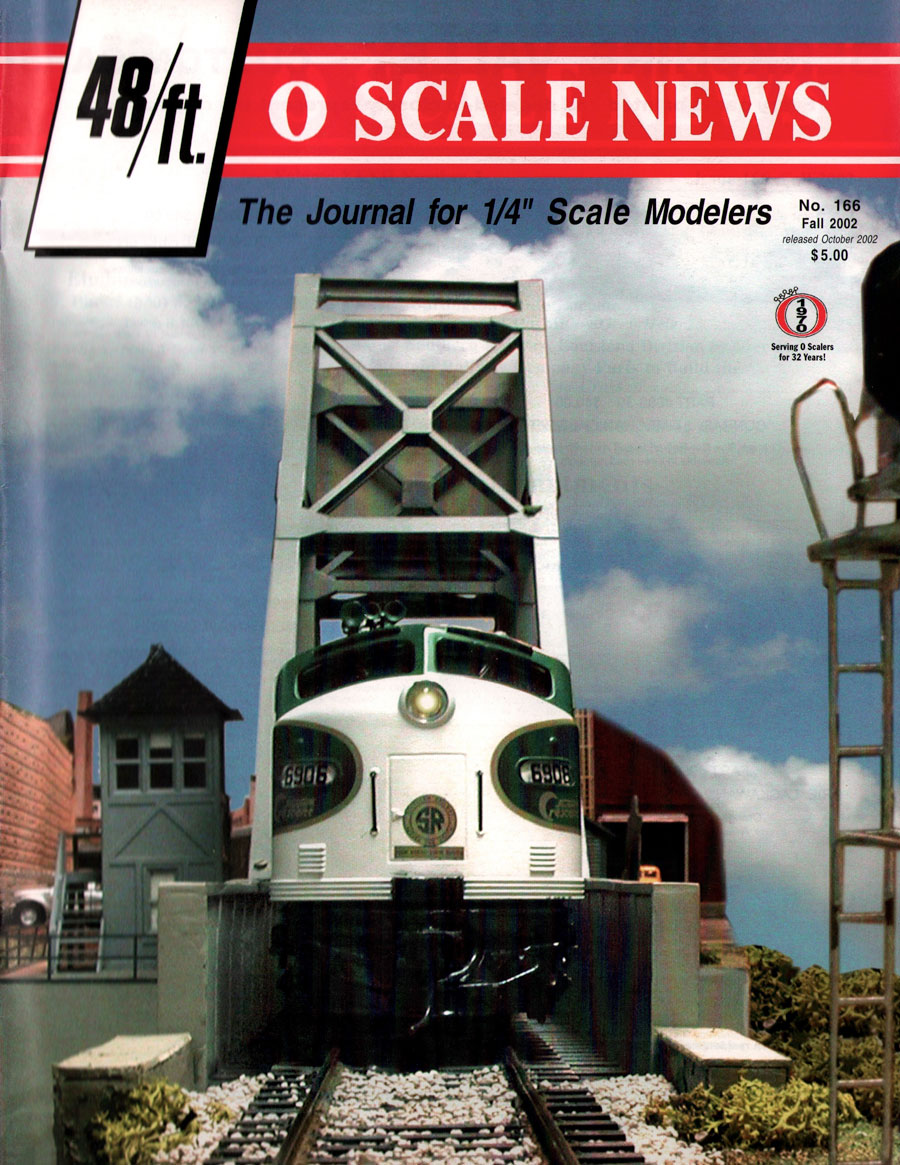
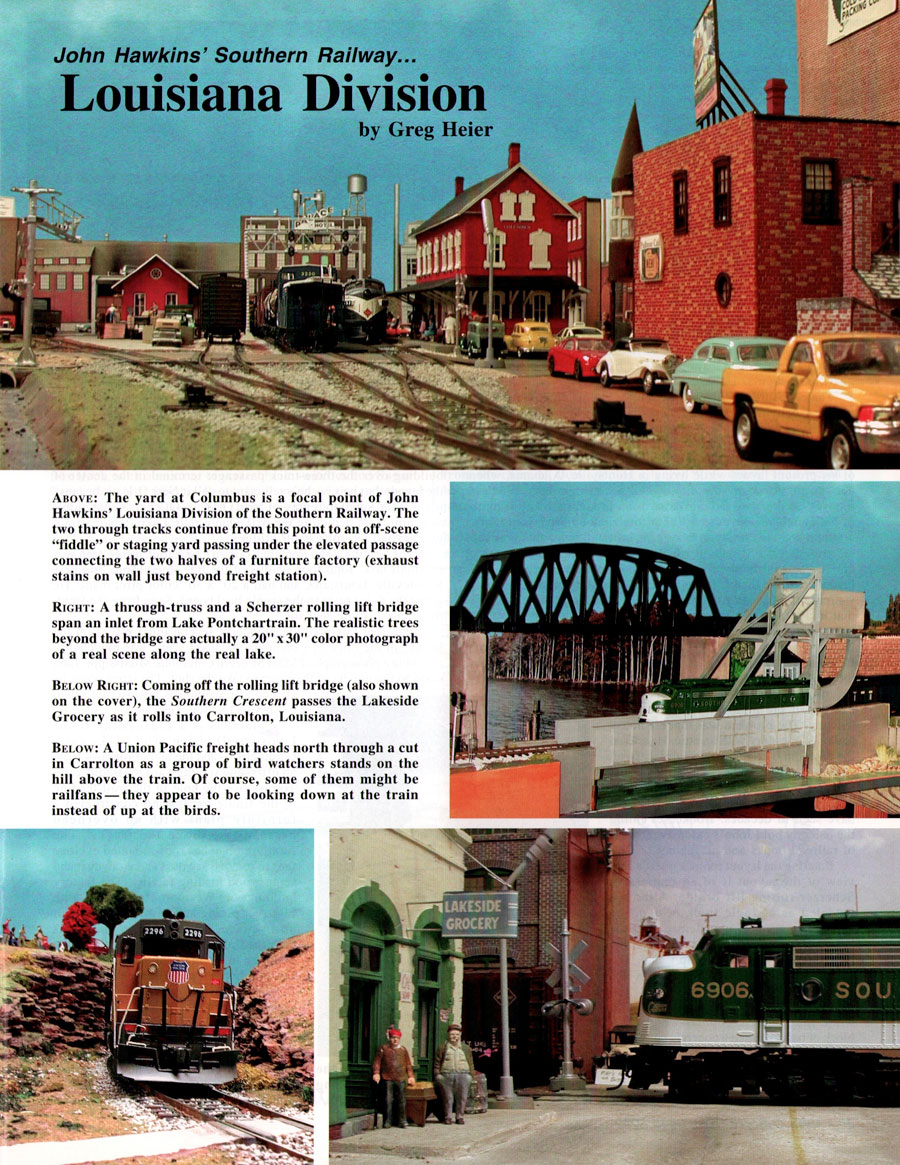
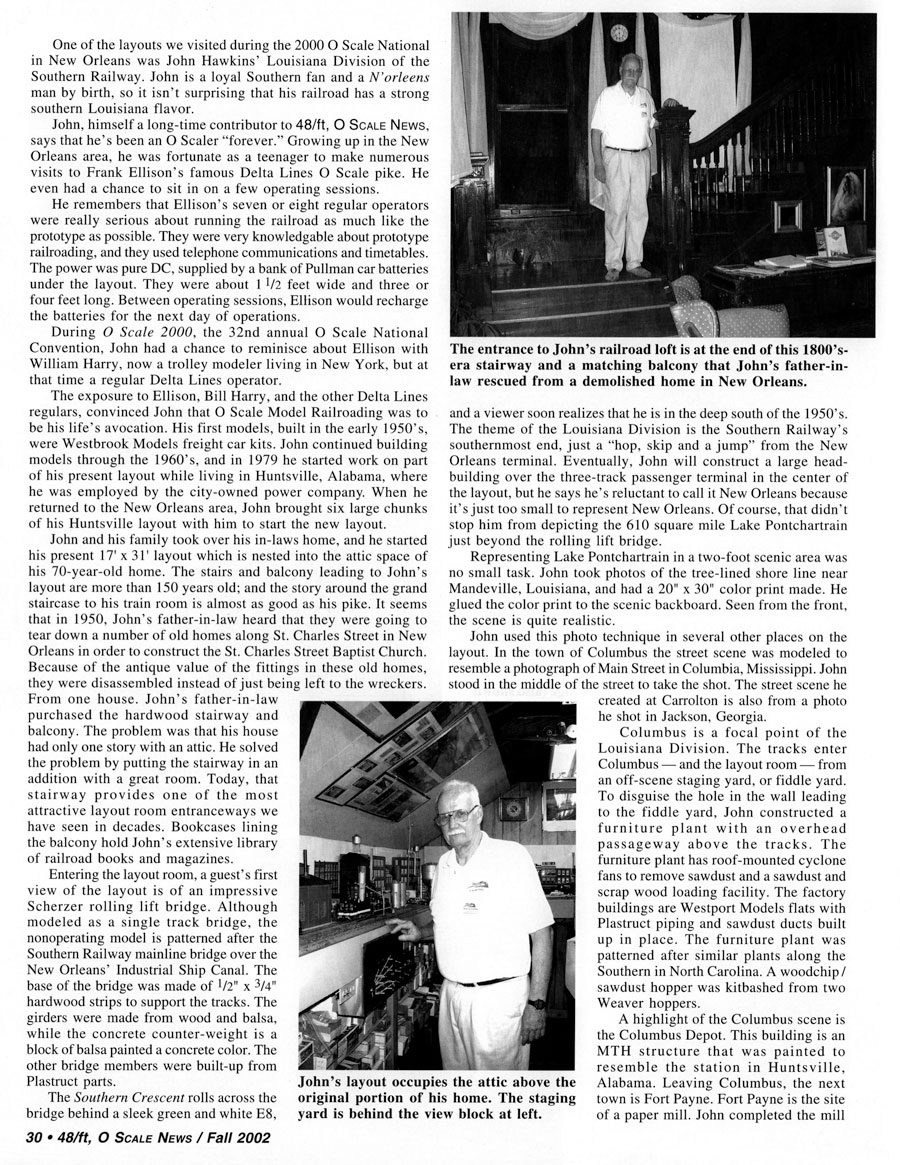
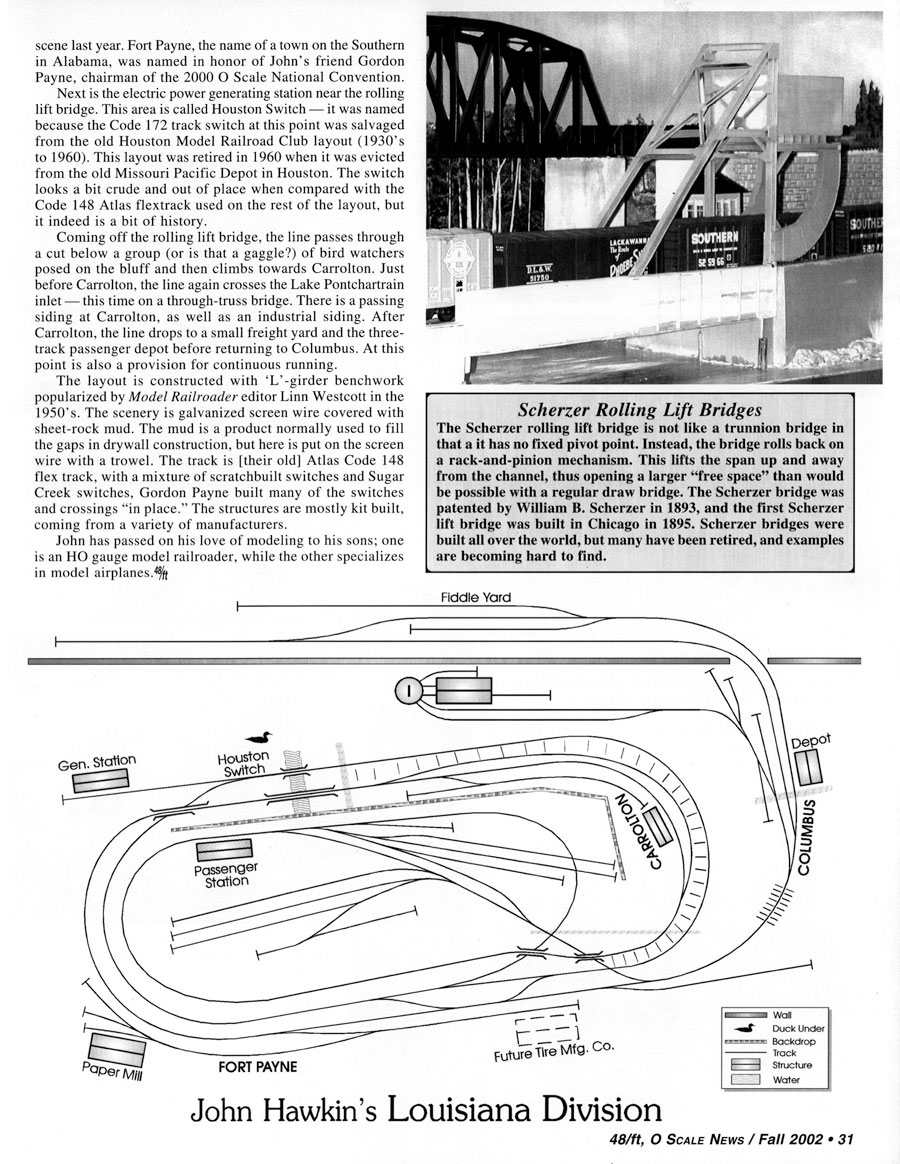
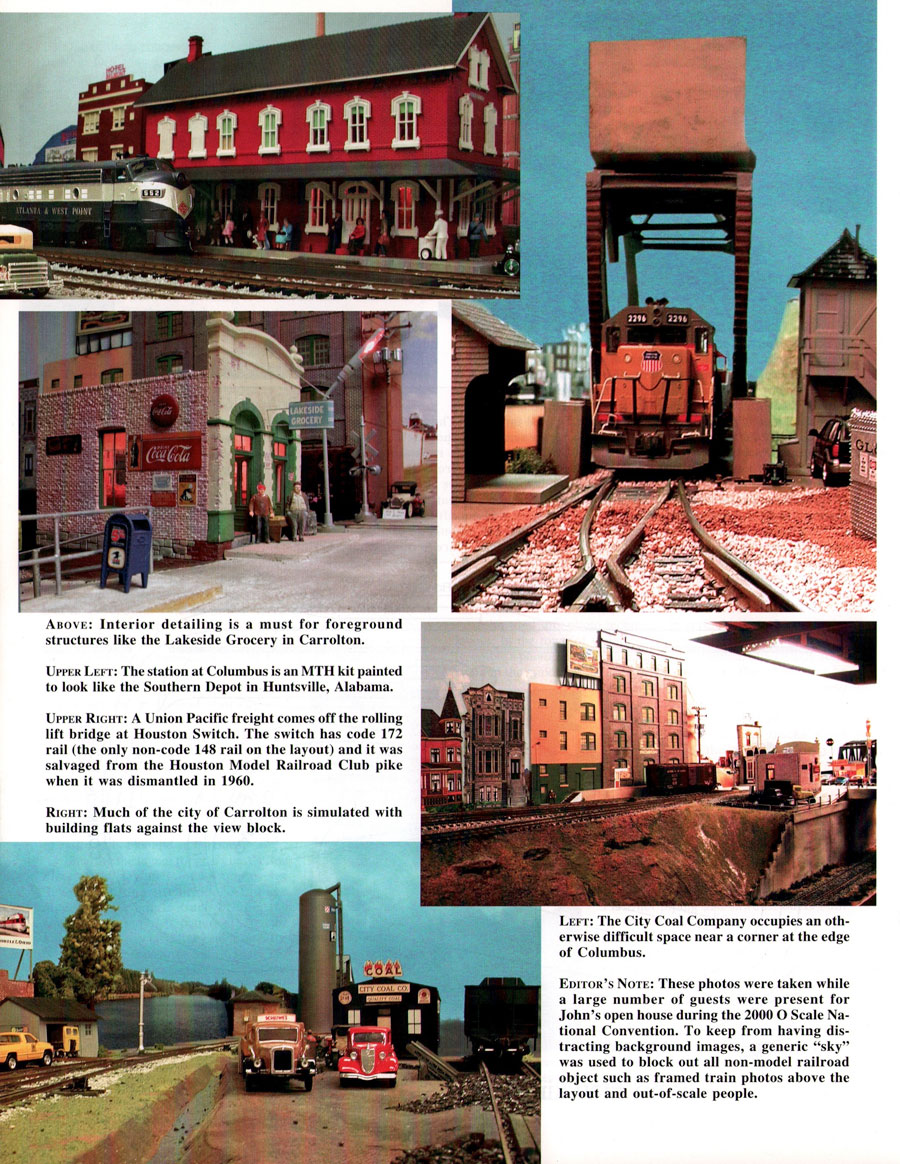
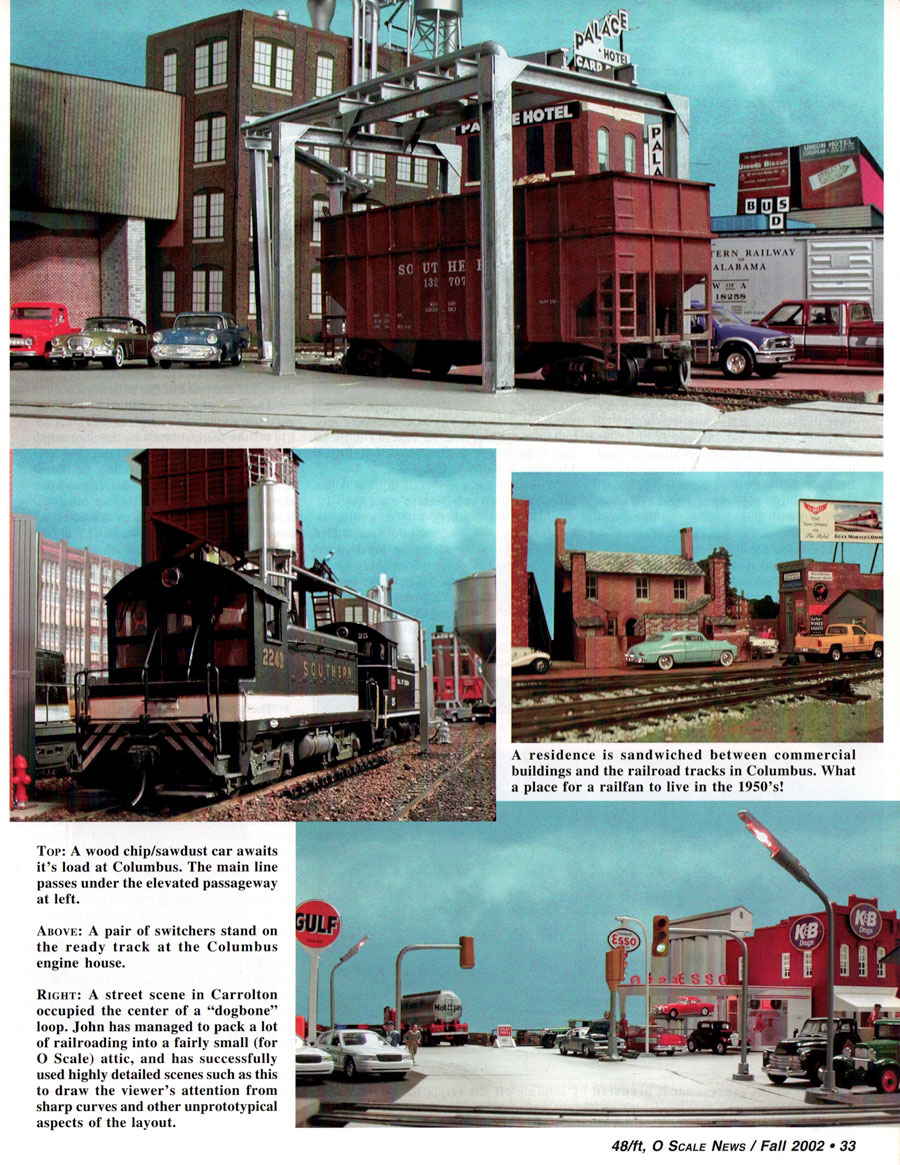
all pages from 48 ft. / O Scale News magazine - Fall 2002 / collection
Locomotives
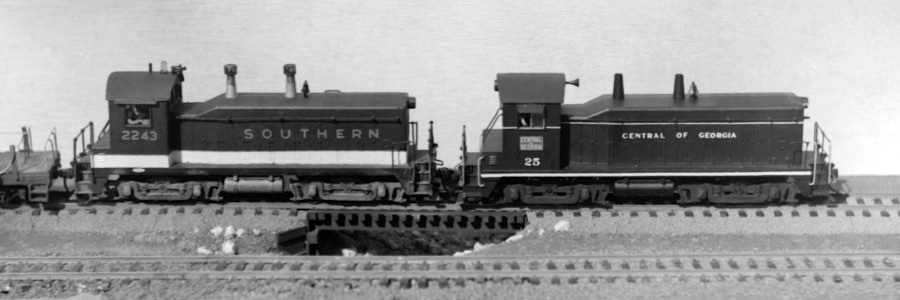
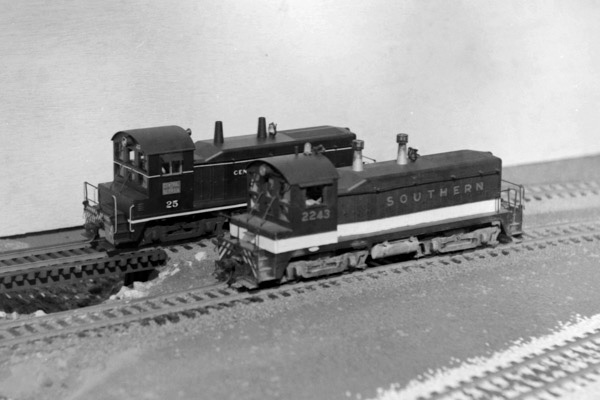

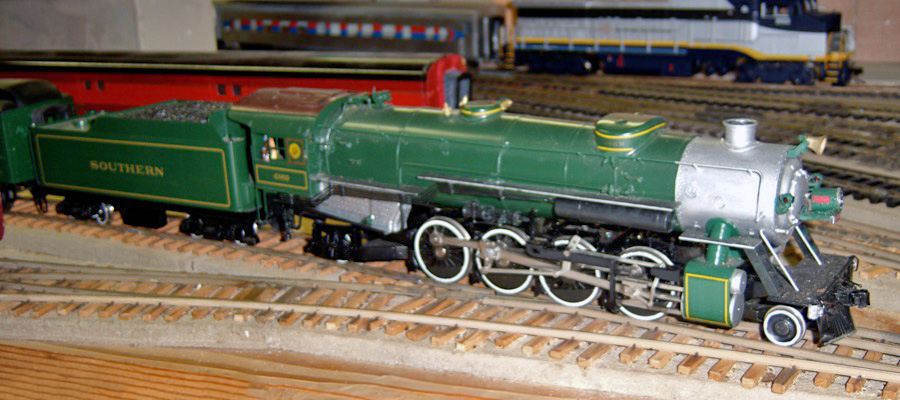




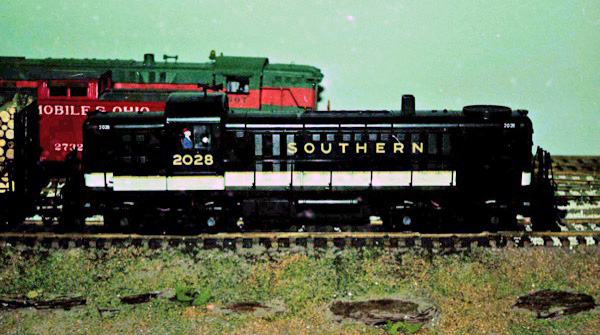


See also our complete Southern Railway featured Fallen Flag scrapbook in Mainlines
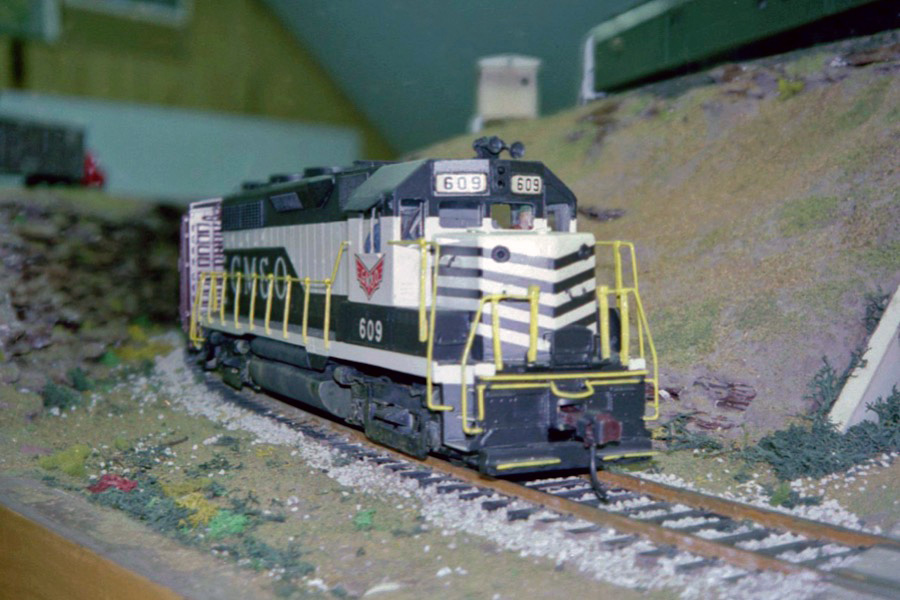
Covington, La / Jun 2000 / JCH
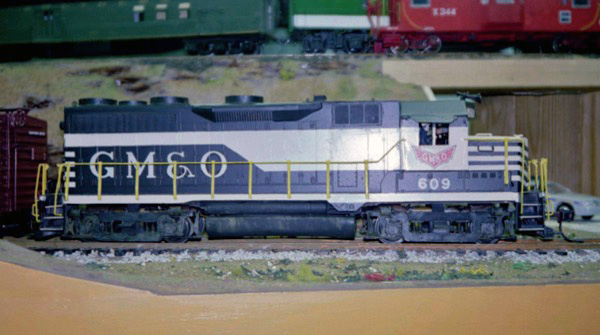
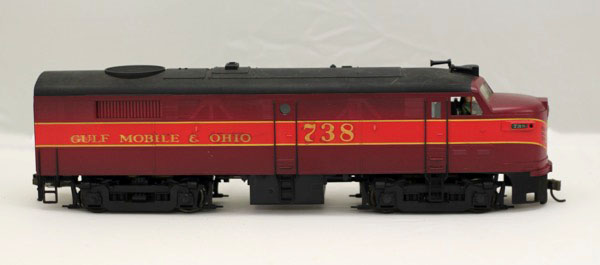



See also our complete Gulf Mobile & Ohio featured Fallen Flag scrapbook in Mainlines
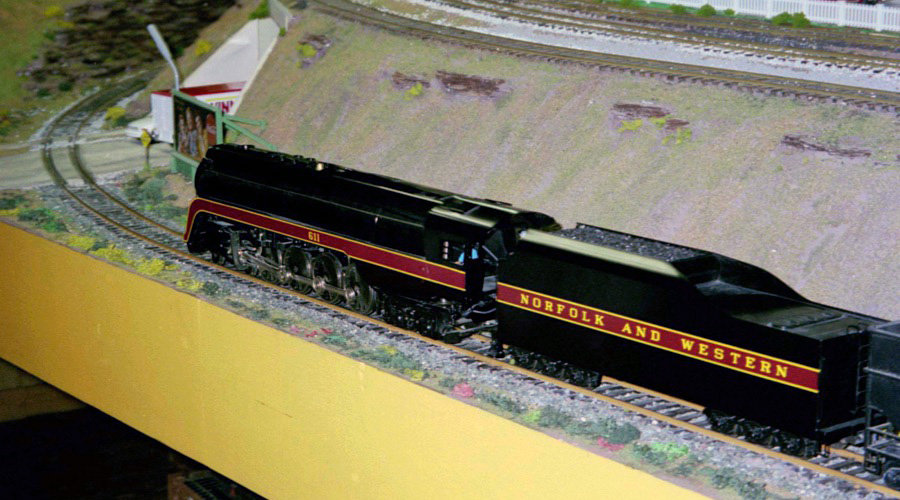



See also our complete Norfolk & Western Railway Fallen Flag scrapbook in Mainlines
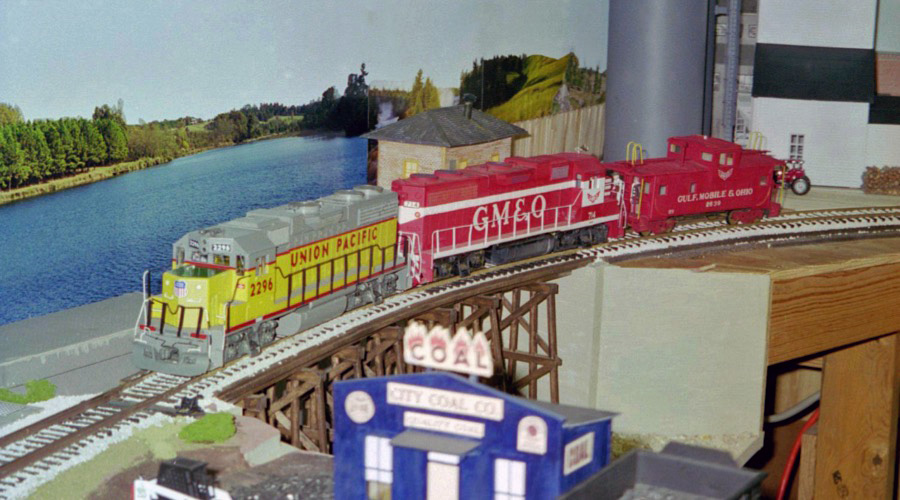
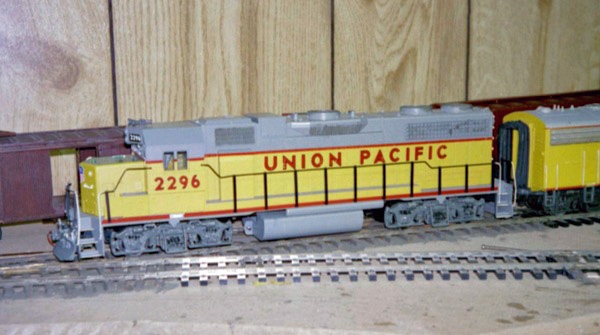
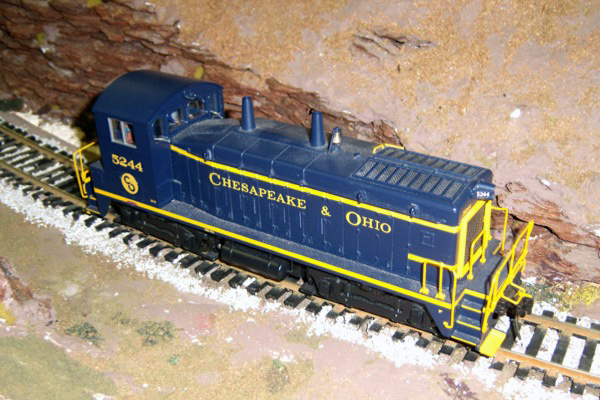
Rolling Stock
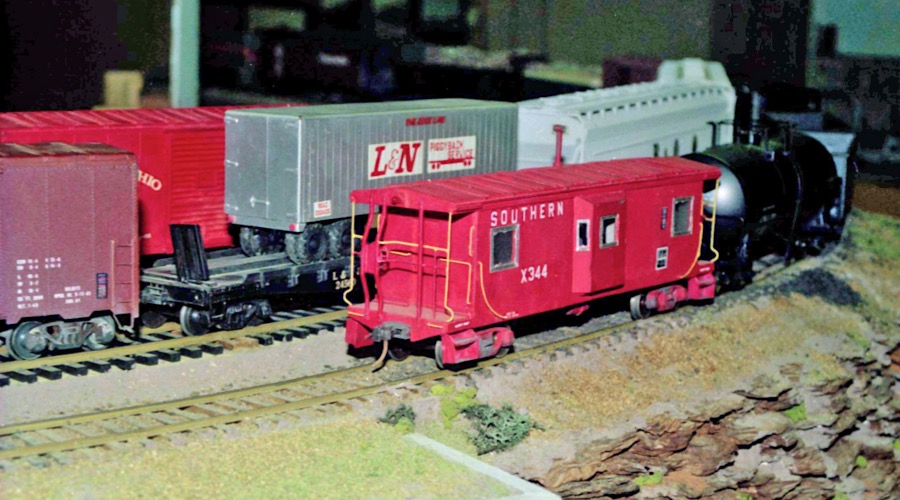
The freight and passenger cars shown here are but a sampling of the hundreds of rolling stock items once in the family O Scale collection. After the demise of the Louisiana Division layout, most generic plastic cars were sold from the collection while all kit-built and scratchbuilt cars were divided up among John's children, grandchildren, and good friends.








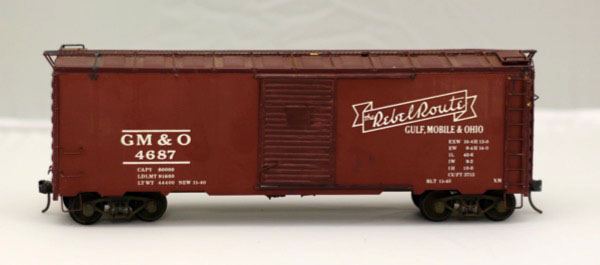
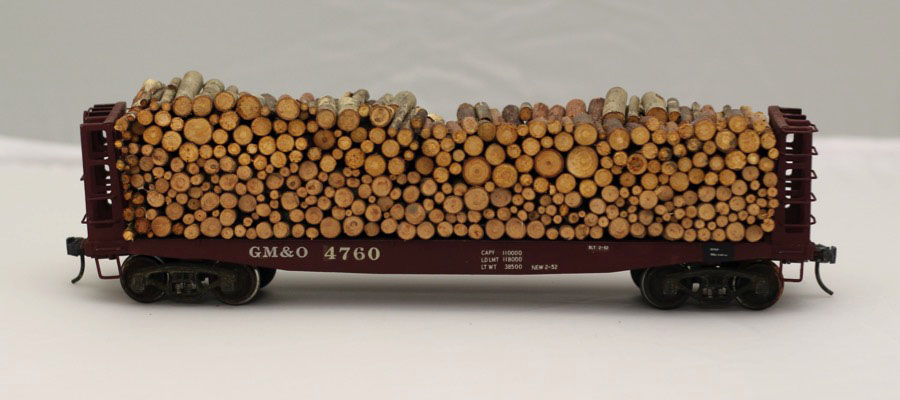
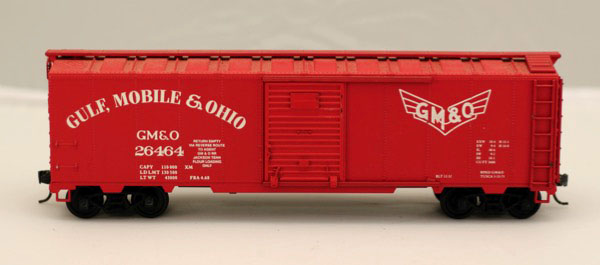
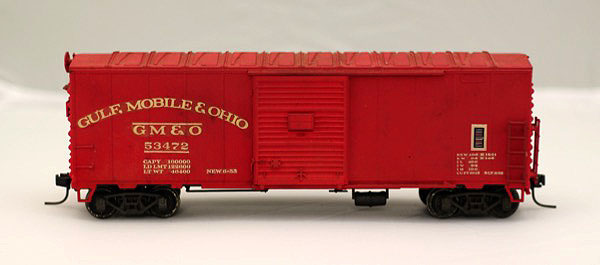





Hurricane Katrina
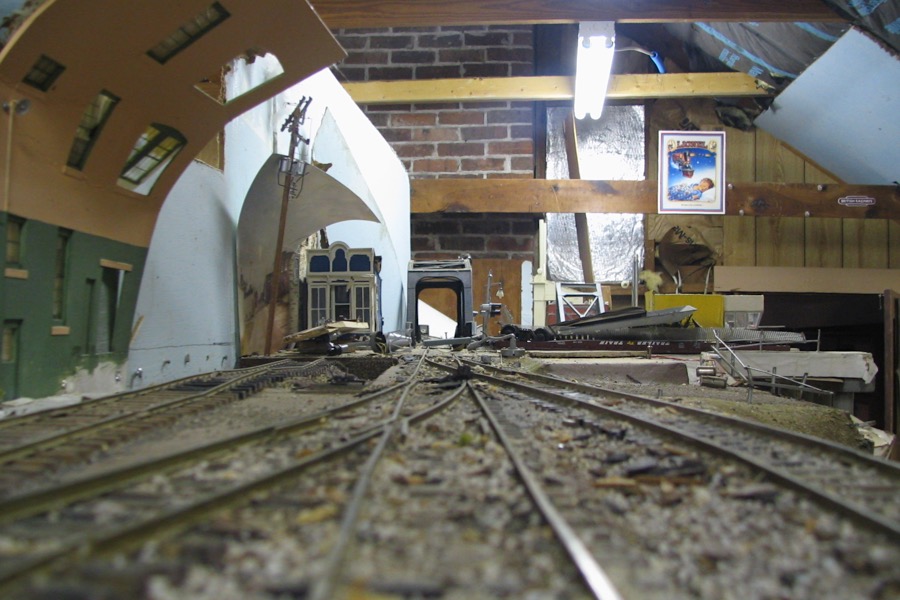
Covington, La / Feb 2006 / RWH

 As with so many previous hurricanes in southeast Louisiana, my parents thought they would simply ride out Katrina at home. Some wind and rain, for sure; maybe lost power for a day or two. That's the way it had gone so often over the years with other storms. But when forecasters suddenly insisted Katrina was terribly different — the big one — mom and dad evacuated to family in Jackson, Mississippi, for what they still assumed would just be a day or two. It was two weeks. When finally they could return to Covington, they found the family property so littered with trees it would eventually cost $25,000 to have them all cut up and removed. Worse still, two towering pines fell over onto the house, crushing the main roof beam and ripping a huge gash into the upstairs model train room. Although the trees did not actually contact the layout, collapsed roof wreckage plus a week's worth of weather did significant damage to our beloved Louisiana Division.
As with so many previous hurricanes in southeast Louisiana, my parents thought they would simply ride out Katrina at home. Some wind and rain, for sure; maybe lost power for a day or two. That's the way it had gone so often over the years with other storms. But when forecasters suddenly insisted Katrina was terribly different — the big one — mom and dad evacuated to family in Jackson, Mississippi, for what they still assumed would just be a day or two. It was two weeks. When finally they could return to Covington, they found the family property so littered with trees it would eventually cost $25,000 to have them all cut up and removed. Worse still, two towering pines fell over onto the house, crushing the main roof beam and ripping a huge gash into the upstairs model train room. Although the trees did not actually contact the layout, collapsed roof wreckage plus a week's worth of weather did significant damage to our beloved Louisiana Division.
In the weeks that followed, dad made use of a long career in the public utilities business by acting as his own general contractor in the rebuilding process. He knew how to move things along. Once a construction crew rebuilt the entire roof structure and new insulation and HVAC materials were installed, the work of cleaning up and stabilizing the layout began in earnest. Pictures below show the new roof structure over the damaged layout. Over the next few years, dad made some progress bringing the railroad back toward its previous level of operation and scenery. Grandsons John and Lonnie were a major help to him, and Grandpa wasted no opportunities to teach them carpentry and DC electrical skills. Trains would run again, but health issues in the late 2000s eventually made it impossible for dad to make more progress on the long recovery. I do think the loss of his ability to ascend the stairs to his railroad was a quiet heartbreak for my Old Man. But as with most other of life's trials, he faced these final years with courage and good humor.
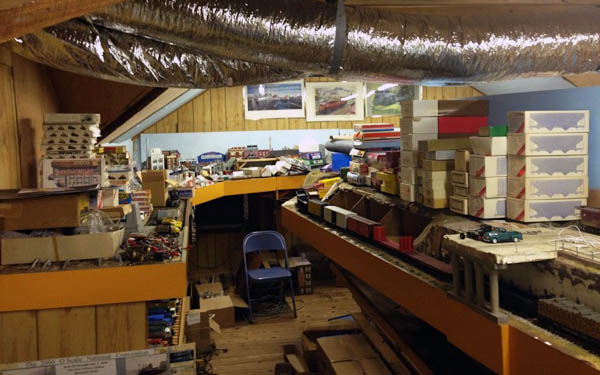 After his death in 2009, mom remained in the house for a few more years. When the time came she could no longer care for a large Southern home with many acres, we knew the Louisiana Division would have to be retired and dismantled. I spent a week packing up locomotives, rolling stock, structures, and kits; then my brother Jack and his sons spent another week dismantling all the track and benchwork. Many items went across the Lake into the good care of Gordon Payne and his Louisiana Texas & Pacific O Scale layout. It was an emotional time for all of us, knowing how many years of building, operating, and fellowship took place in "The Attic" turned train room. As they say in Louisiana, "we sure passed a good time" in that space. Later I would sell off most of the plastic kits and generic items; later still, I divided up all of dad's custom and scratch built cars and locomotives among his children and grandchildren. Now everyone in the family at least one complete O Scale train to display and enjoy.
After his death in 2009, mom remained in the house for a few more years. When the time came she could no longer care for a large Southern home with many acres, we knew the Louisiana Division would have to be retired and dismantled. I spent a week packing up locomotives, rolling stock, structures, and kits; then my brother Jack and his sons spent another week dismantling all the track and benchwork. Many items went across the Lake into the good care of Gordon Payne and his Louisiana Texas & Pacific O Scale layout. It was an emotional time for all of us, knowing how many years of building, operating, and fellowship took place in "The Attic" turned train room. As they say in Louisiana, "we sure passed a good time" in that space. Later I would sell off most of the plastic kits and generic items; later still, I divided up all of dad's custom and scratch built cars and locomotives among his children and grandchildren. Now everyone in the family at least one complete O Scale train to display and enjoy.
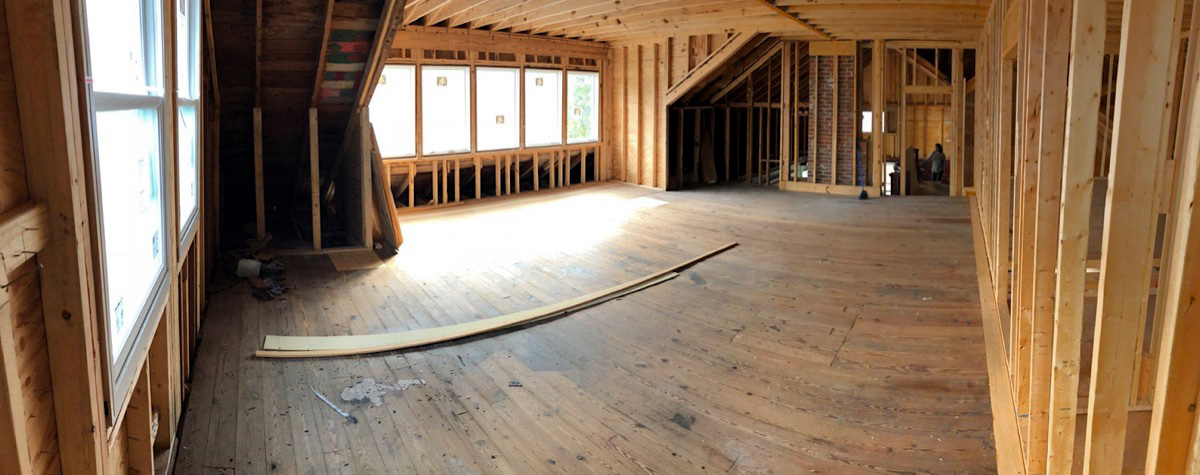 Three blessings did appear amidst the loss. The first is noted above: my nephews spending time with their grandpa, rebuilding and learning the hobby. They now treasure those memories. Second, my Ella overlapped with dad for a few years; she was 5 when he died. This meant she was just old enough to enjoy "playing trains" with Papa on several occasions. They ran some locomotives and cars around the surviving trackage and played with dad's incredible collection of 1:48 automobiles. Some snapshots below give a sense of those happy memories. Thirdly, the house remains in our extended family. My cousin Bill and his wife Martha purchased the property from my mother, hiring an architect to rework the house from the ground up. The spirit of his/our grandfather's original house was beautifully preserved, but dozens of needed improvements and creative changes were made to ensure the house will last through this century. And the train room? Now a beautiful guest room, with new dormer windows overlooking the lovely Bogue Falaya River outside. This "new" house is an amazing accomplishment, and we could not be more pleased that it lives on in a new season yet still in our family. I know dad would be delighted as well.
Three blessings did appear amidst the loss. The first is noted above: my nephews spending time with their grandpa, rebuilding and learning the hobby. They now treasure those memories. Second, my Ella overlapped with dad for a few years; she was 5 when he died. This meant she was just old enough to enjoy "playing trains" with Papa on several occasions. They ran some locomotives and cars around the surviving trackage and played with dad's incredible collection of 1:48 automobiles. Some snapshots below give a sense of those happy memories. Thirdly, the house remains in our extended family. My cousin Bill and his wife Martha purchased the property from my mother, hiring an architect to rework the house from the ground up. The spirit of his/our grandfather's original house was beautifully preserved, but dozens of needed improvements and creative changes were made to ensure the house will last through this century. And the train room? Now a beautiful guest room, with new dormer windows overlooking the lovely Bogue Falaya River outside. This "new" house is an amazing accomplishment, and we could not be more pleased that it lives on in a new season yet still in our family. I know dad would be delighted as well.
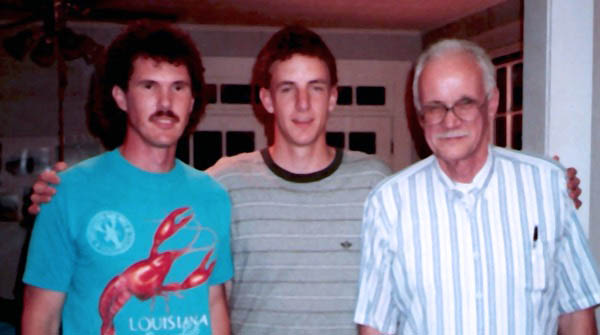 John was a solid craftsman and a jack-of-all trades model railroader. Even more, his encyclopedic knowledge of railroading in the Deep South meant that every locomotive and car had a story behind it. The Louisiana Division was a great layout. But looking back on its 25-year run, I think the real legacy of the Covington train room is the spirit my father brought to the hobby. It went something like this: Enjoy building and running and talking trains, but especially enjoy the friendships that spring up all along that journey. Life is too short and precious to take the particulars of this or any hobby too seriously. No rivet counting was allowed in Covington. Treat everyone like a friend, remember the better joys of childhood, and enjoy some trains.
John was a solid craftsman and a jack-of-all trades model railroader. Even more, his encyclopedic knowledge of railroading in the Deep South meant that every locomotive and car had a story behind it. The Louisiana Division was a great layout. But looking back on its 25-year run, I think the real legacy of the Covington train room is the spirit my father brought to the hobby. It went something like this: Enjoy building and running and talking trains, but especially enjoy the friendships that spring up all along that journey. Life is too short and precious to take the particulars of this or any hobby too seriously. No rivet counting was allowed in Covington. Treat everyone like a friend, remember the better joys of childhood, and enjoy some trains.
After all, "Hobbies should be fun!"
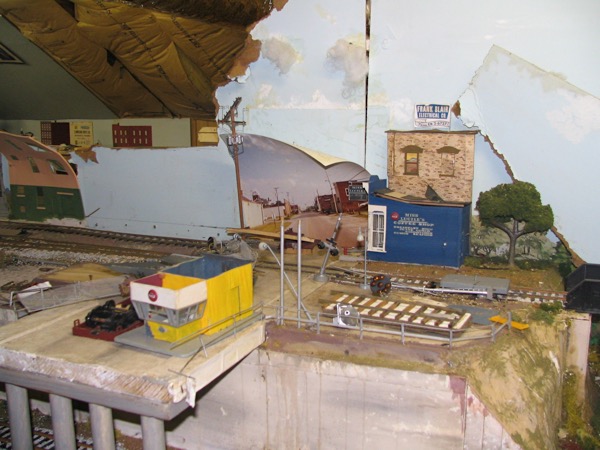
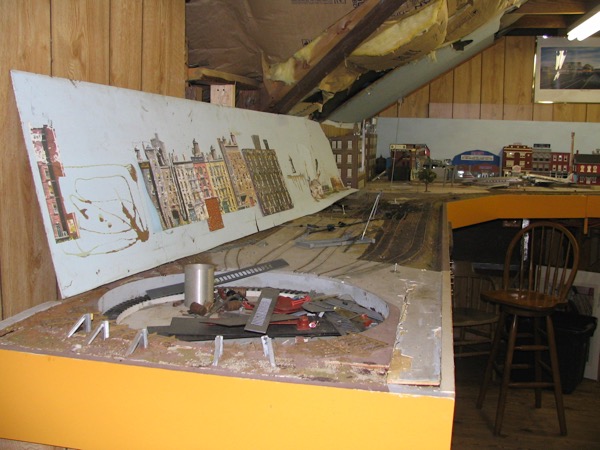
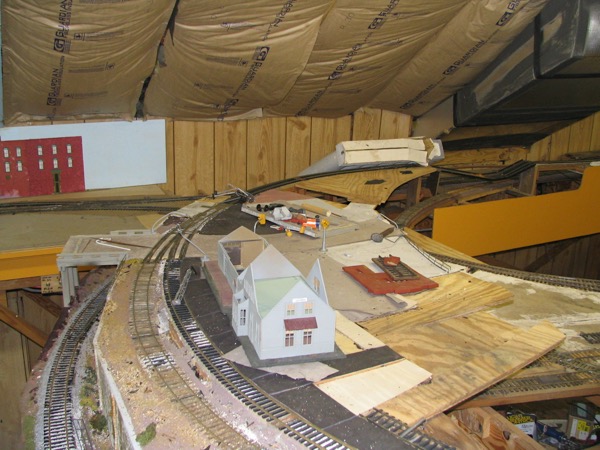

Feb 2006 / RWH
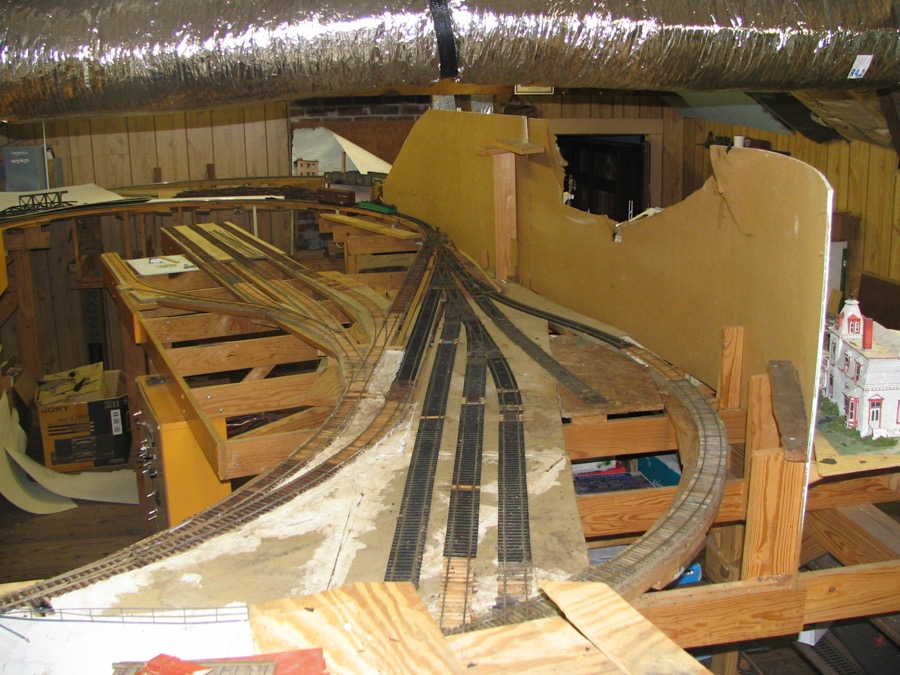
Feb 2006 / RWH

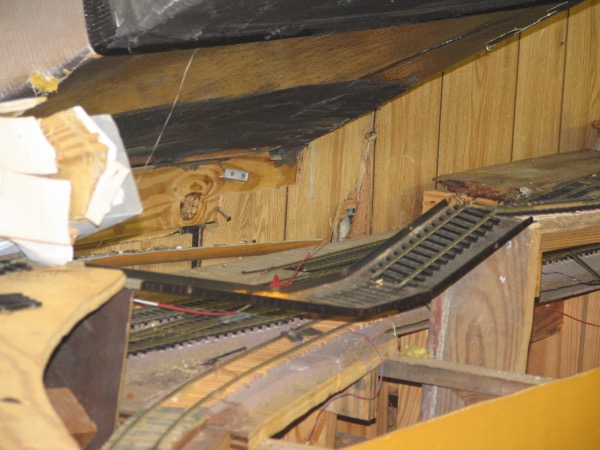
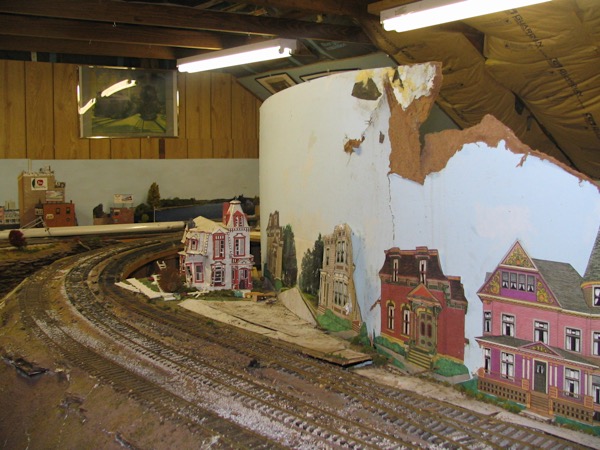
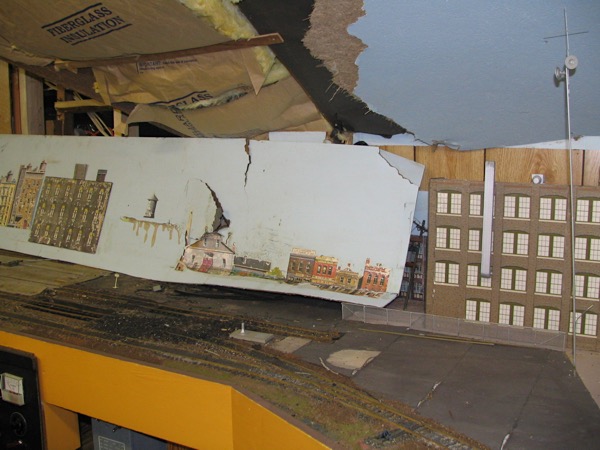
Feb 2006 / RWH
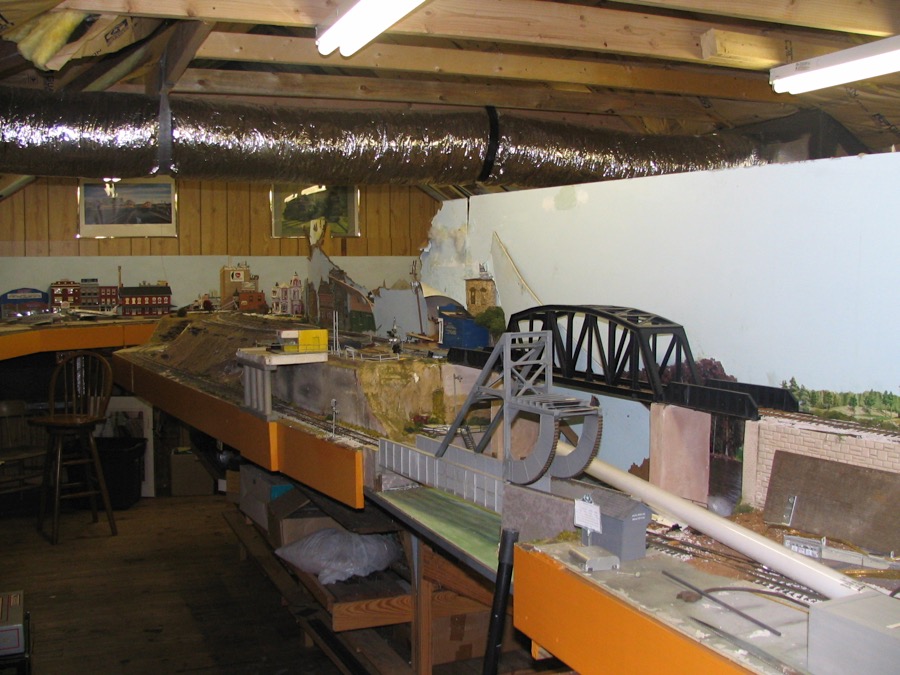
Feb 2006 / RWH
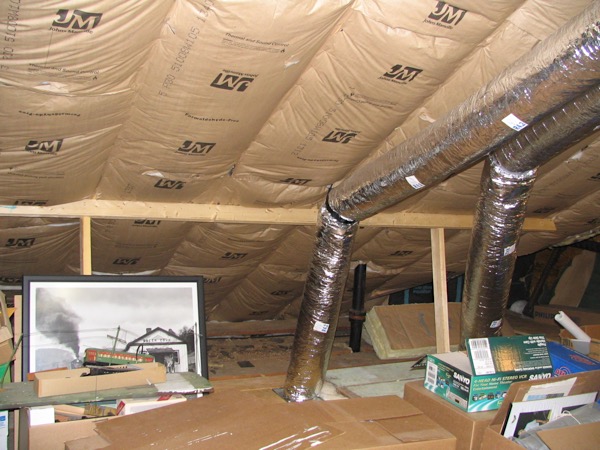
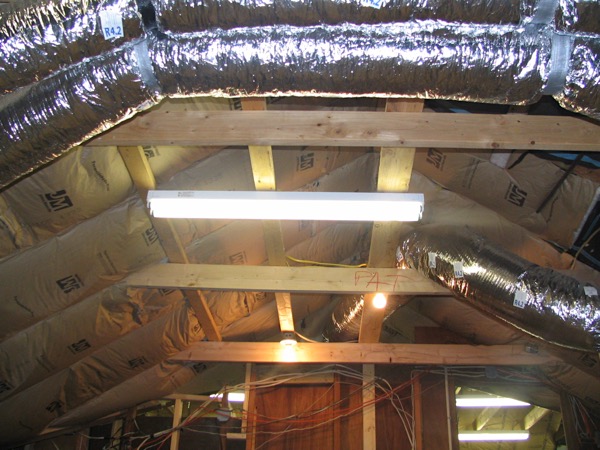

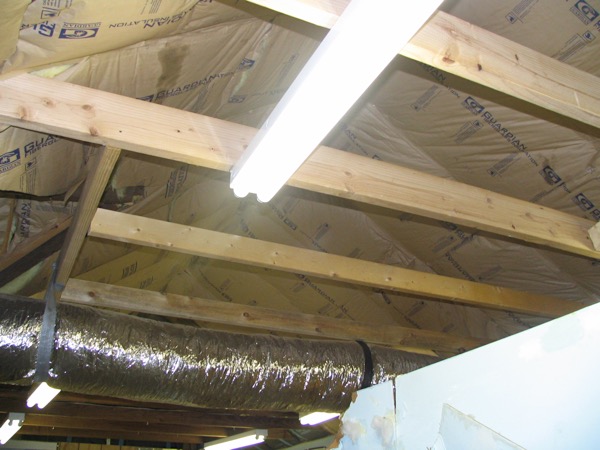
Feb 2006 / RWH
Post Katrina

Covington, La / Jan 2009 / RWH
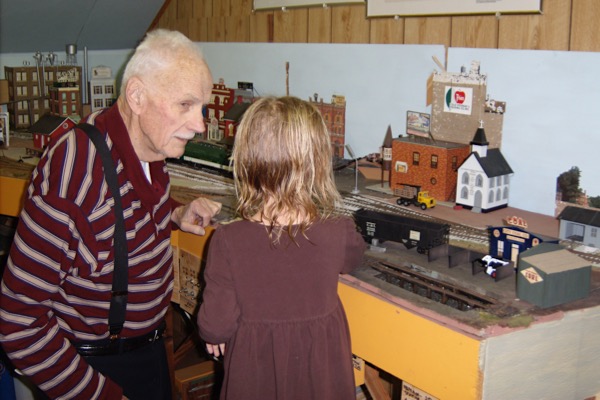
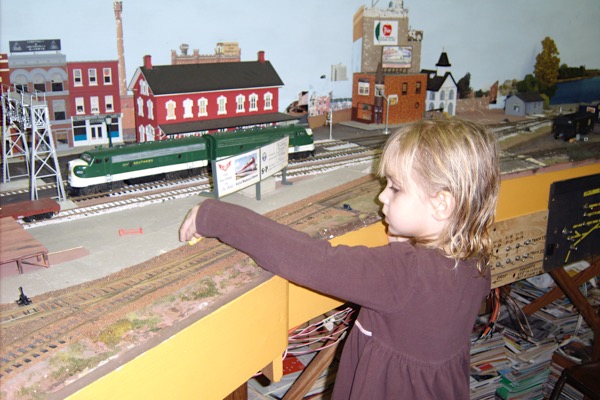
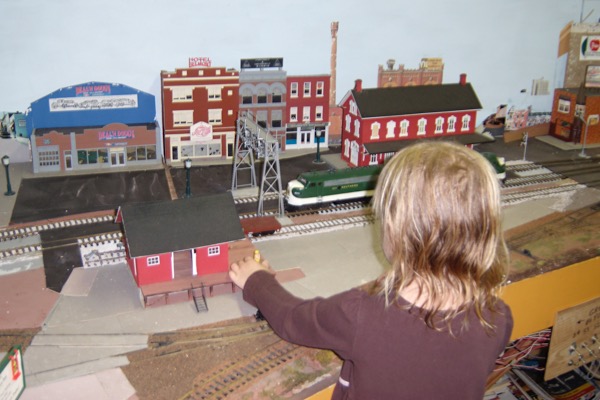

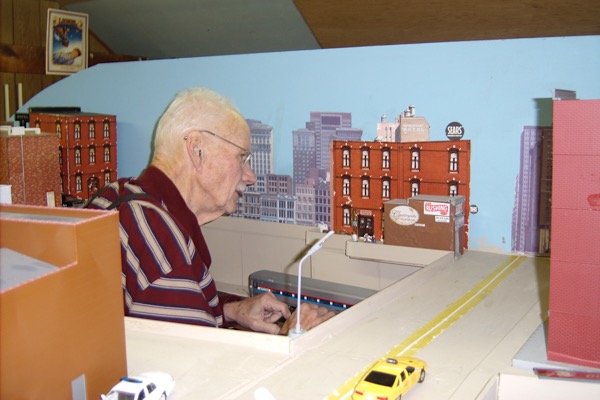
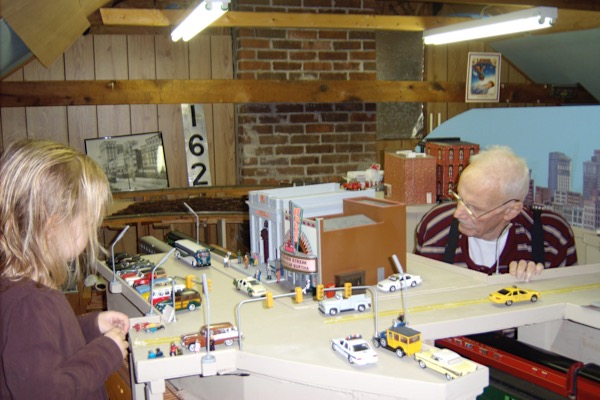
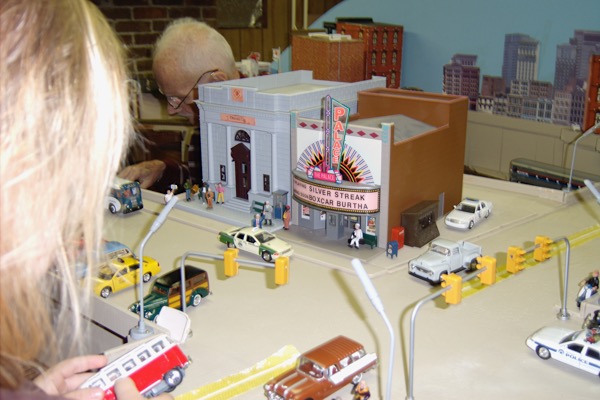
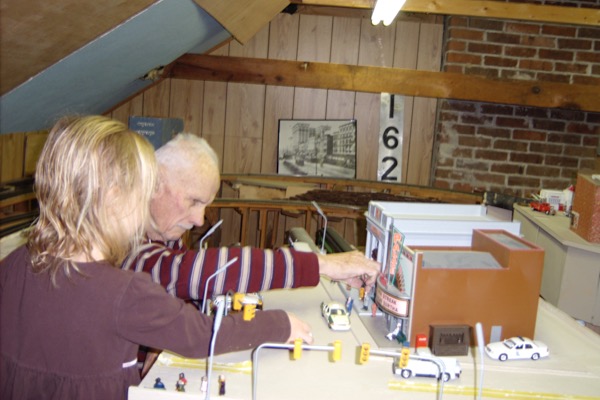
Covington, La / Jan 2009 / RWH
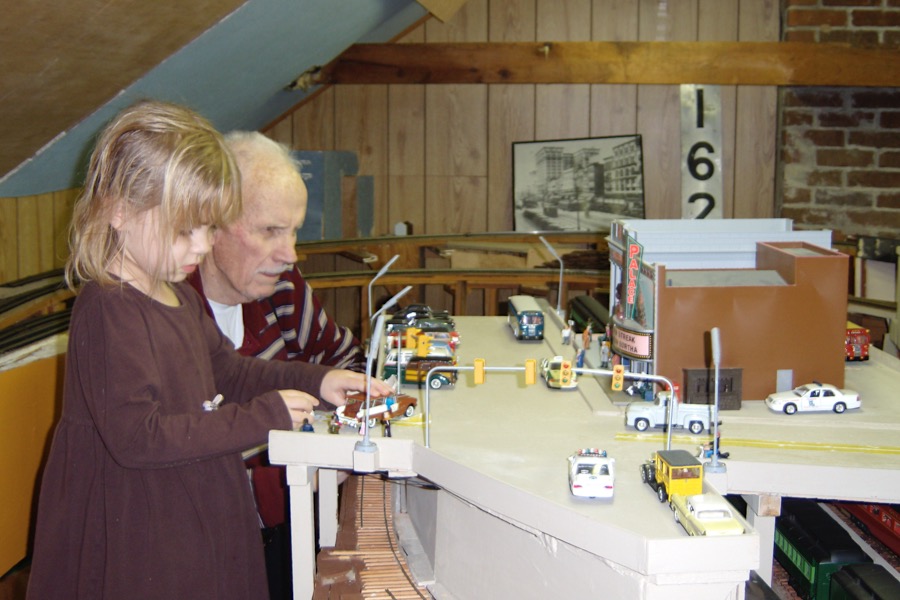
Covington, La / Jan 2009 / RWH
Covington, La / Jan 2009 / RWH
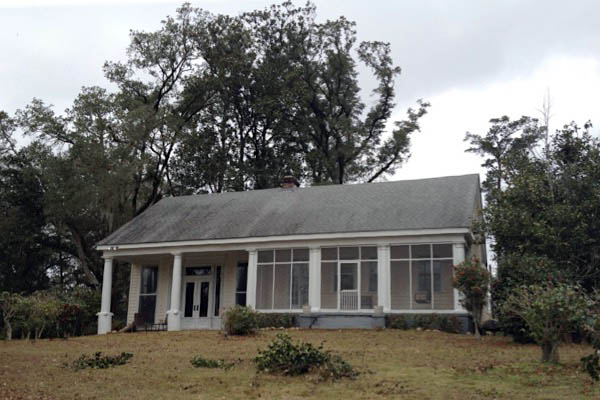
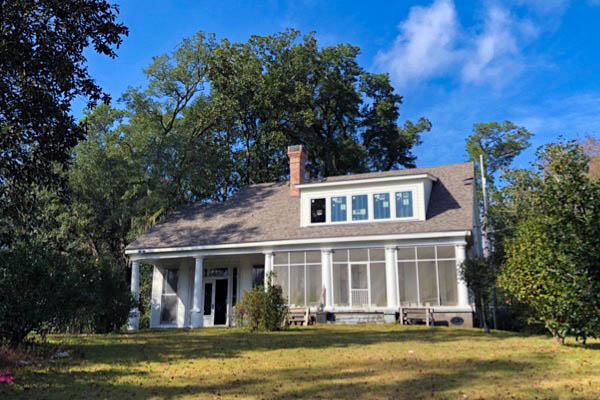
Covington, La / Feb 2012 and Dec 2017 / RWH
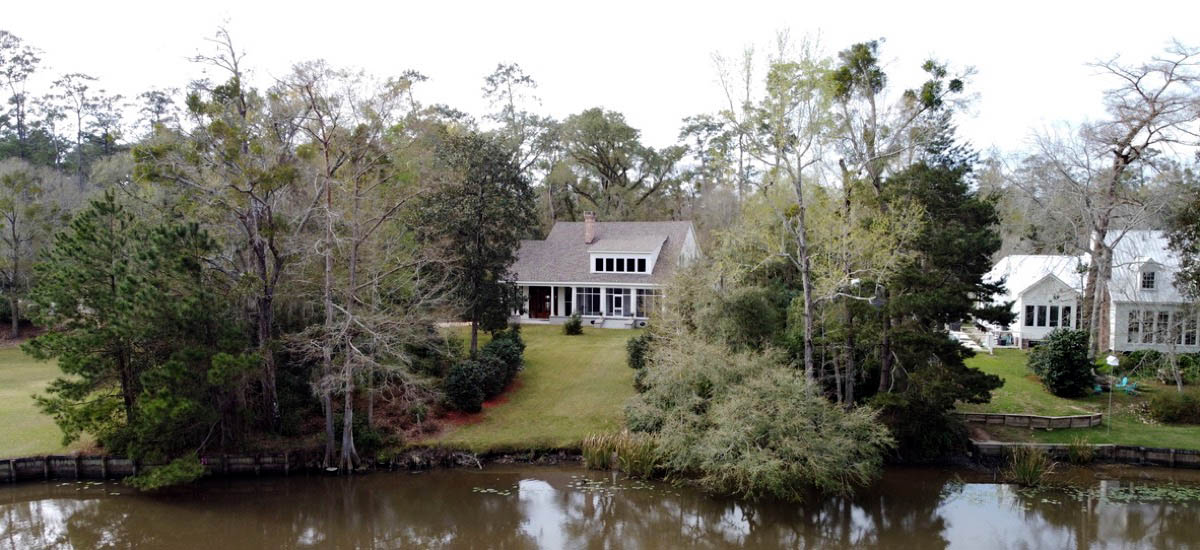
Covington, La / Feb 2020 / RWH
 Lagniappe
Lagniappe
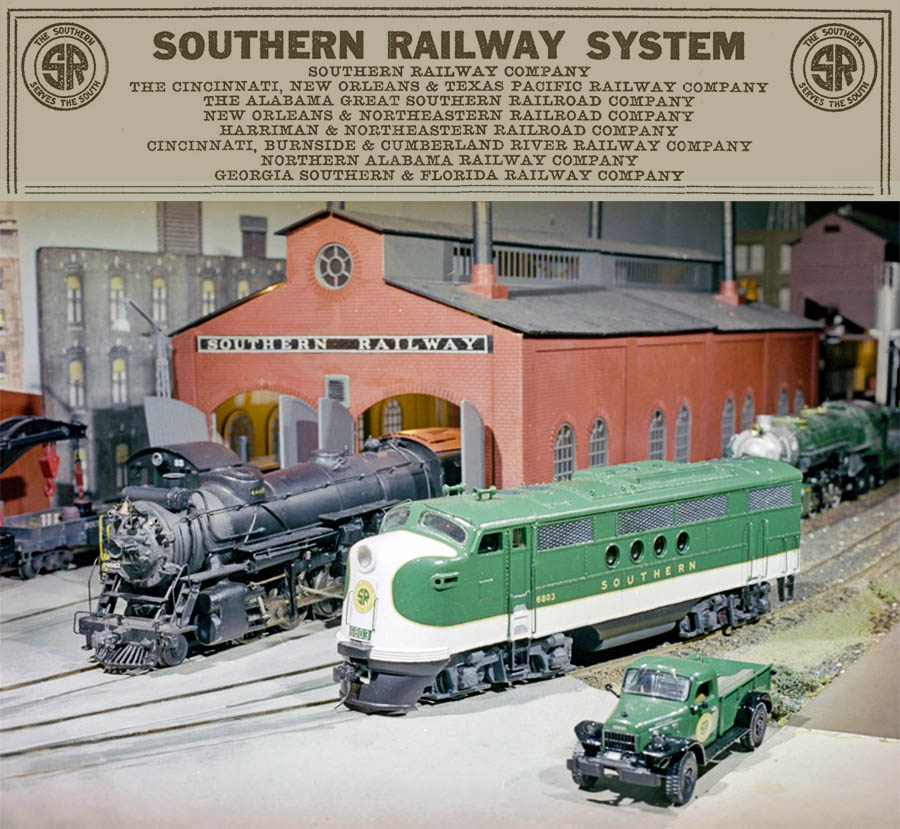
The System Serving the South
image Gordon Payne / artwork RWH
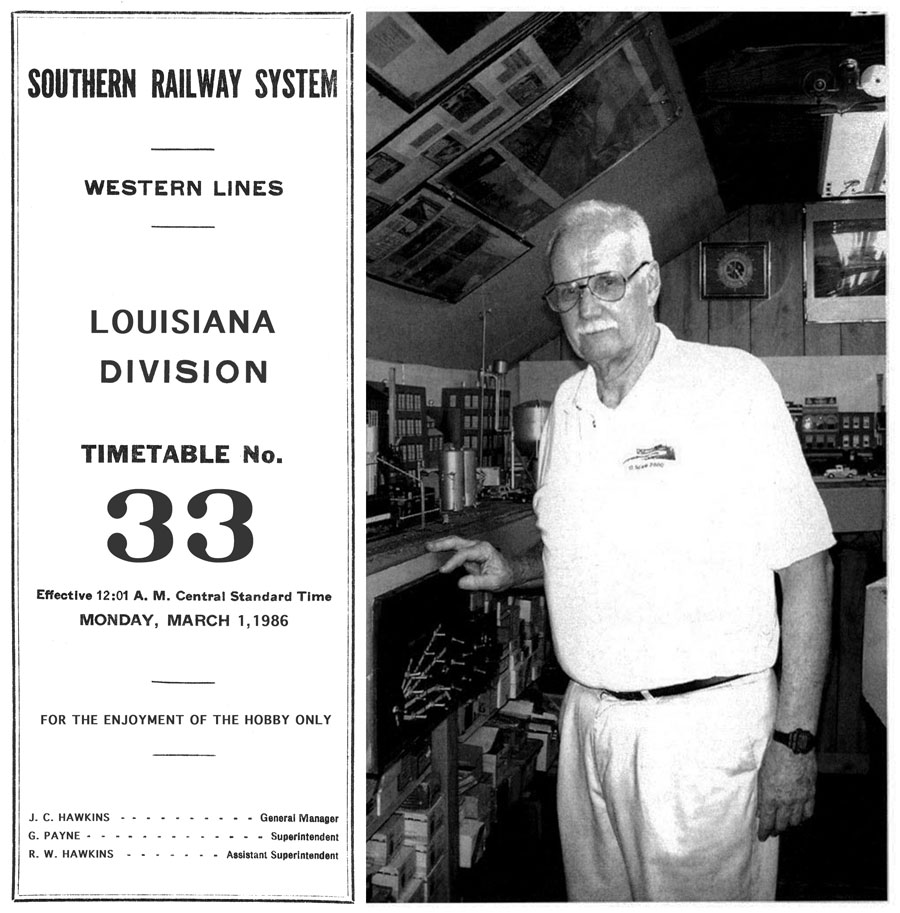
General Manager, Louisiana Division
image Greg Heier / artwork RWH
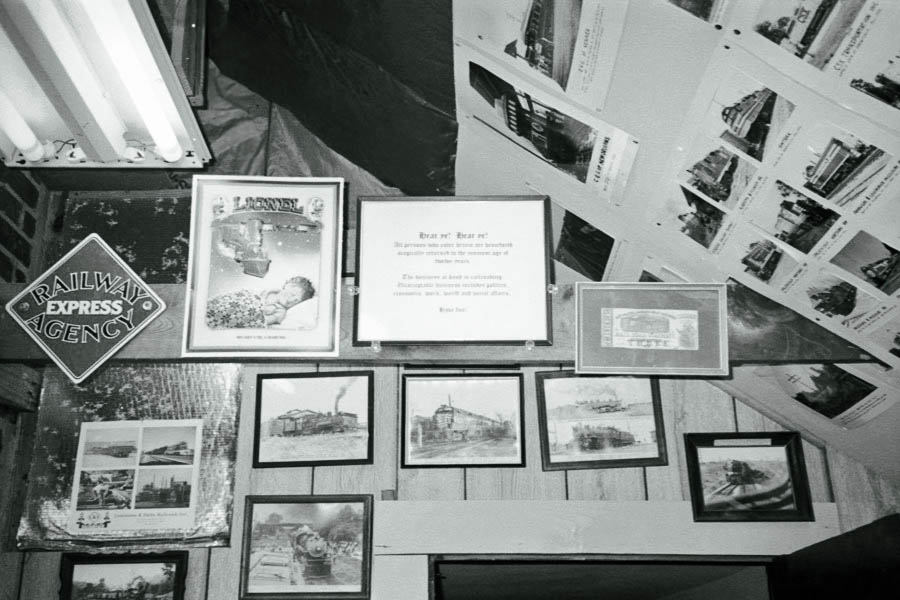
Man Cave Paintings
Covington, La / Jun 2000 / RWH

Just a Girl Waiting for Her Train
image and artwork RWH
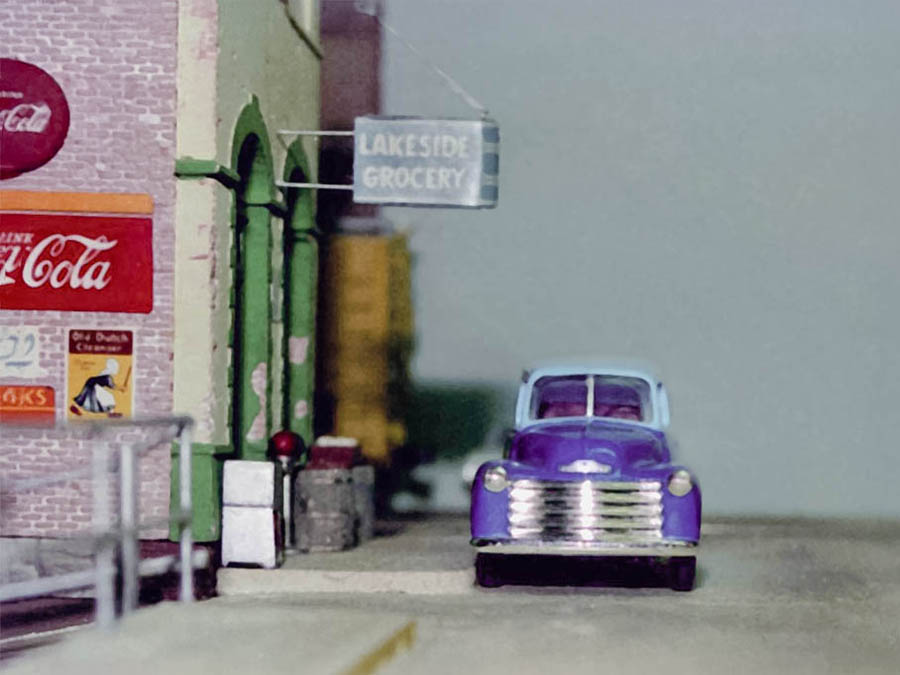
Time to Go Make Groceries
Covington, La / RWH
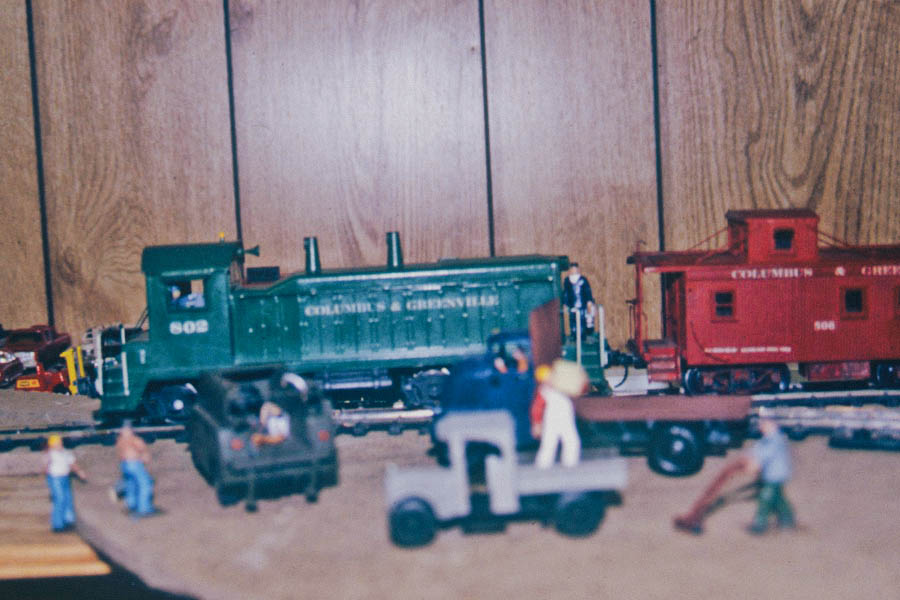
Playtime, 1987
Covington, La / RWH

Holy Humor
Jan 2009 / RWH
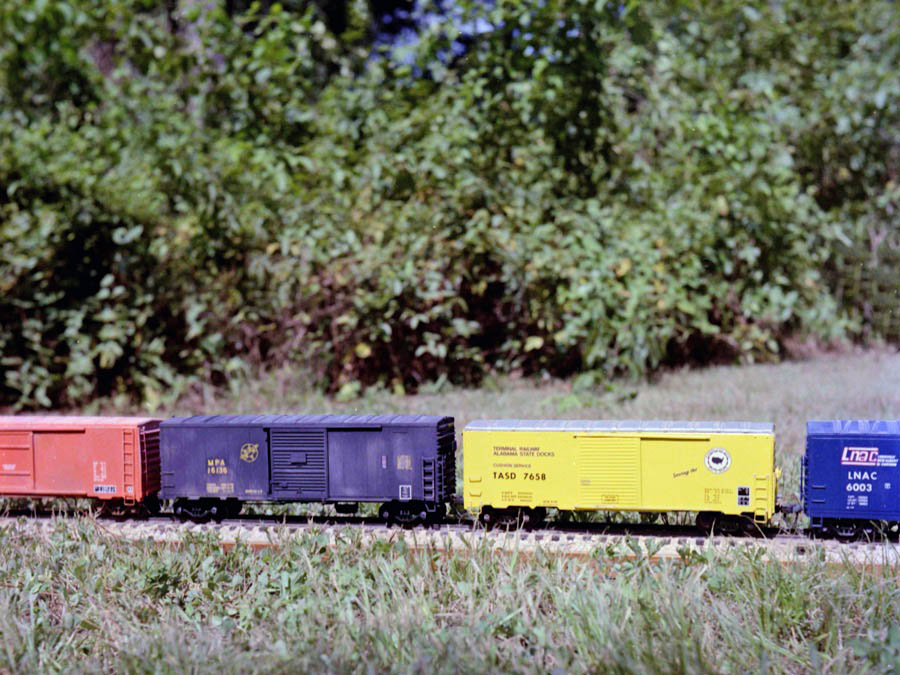
"As she glides along the woodland"
Covington, La / Jun 1986 / JCH
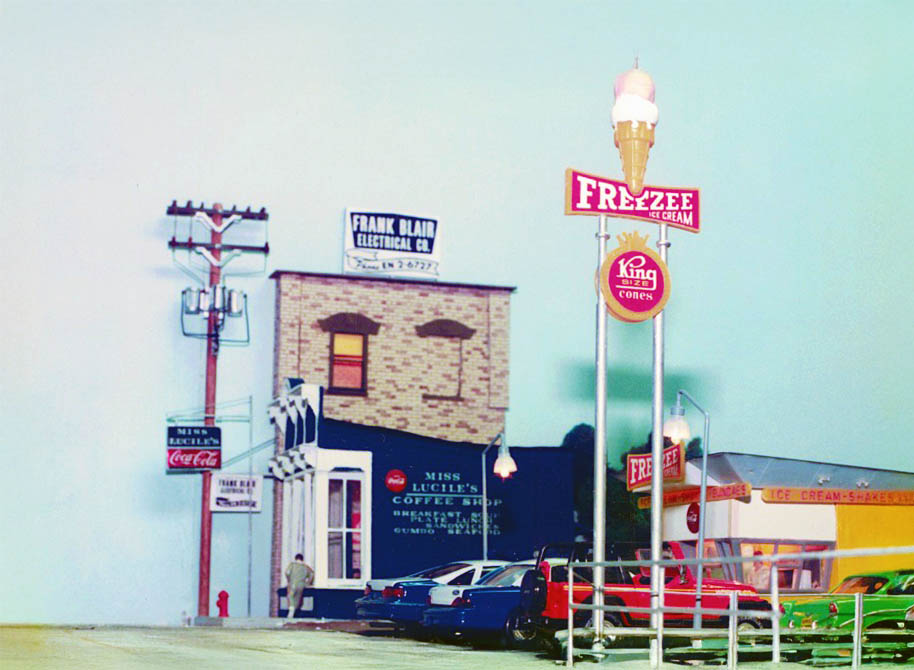
King of Scales ... and Cones
image JCH / artwork RWH
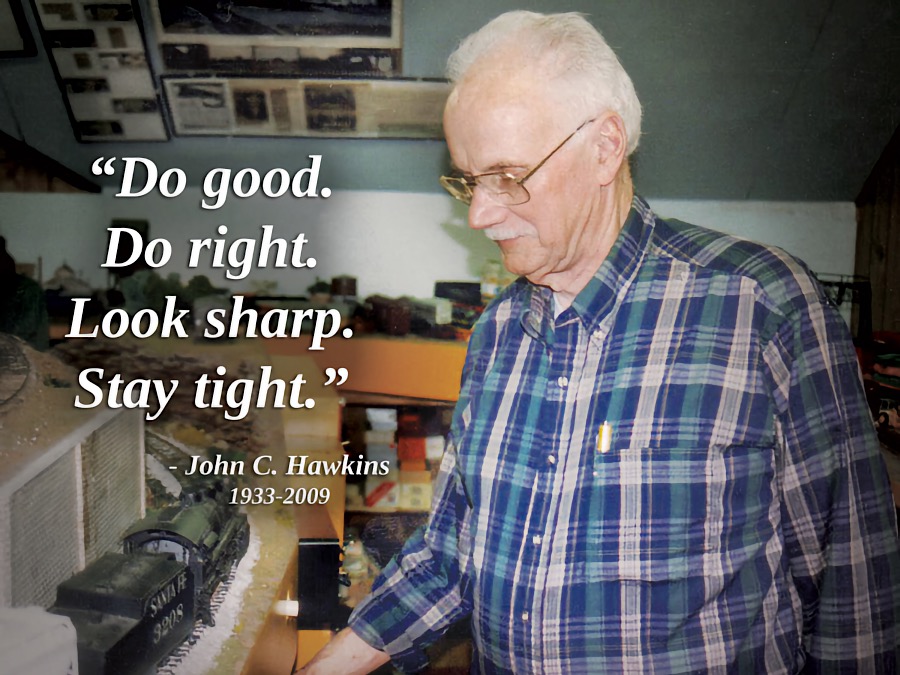
image Gordon Payne / artwork Andrew Ross
 Snapshots
Snapshots
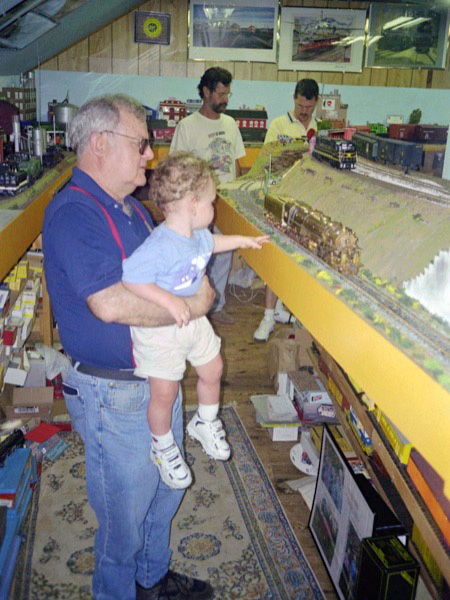
Jun 2000 / JCH
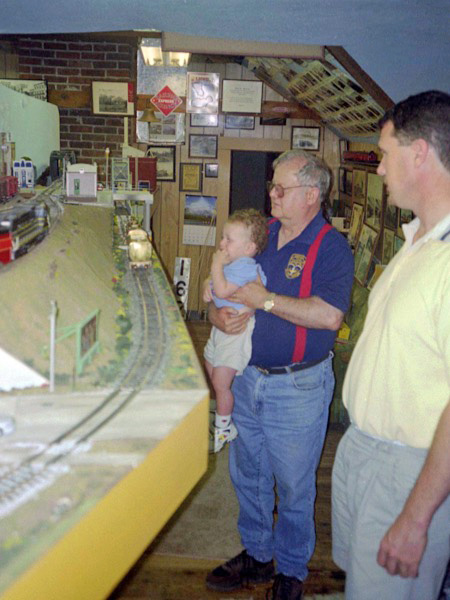
Jun 2000 / JCH
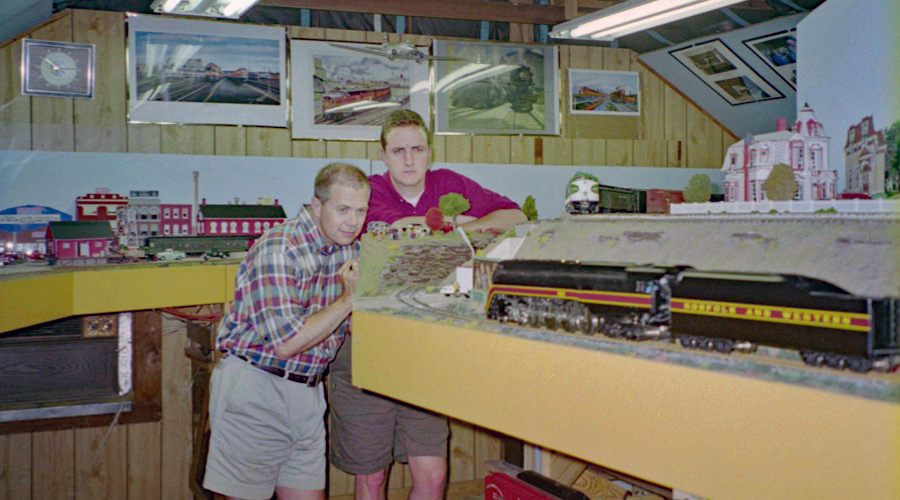
Covington, La / Jun 2000 / JCH
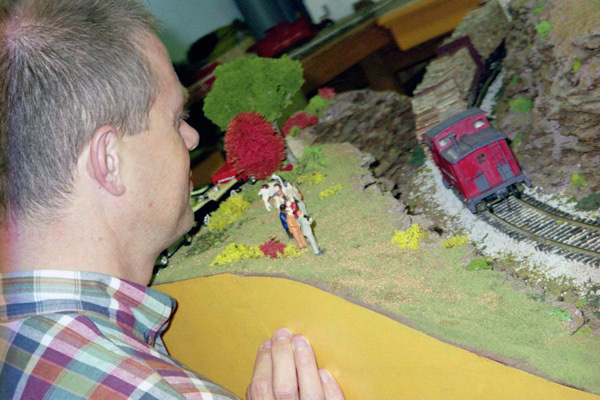
Covington, La / Jun 2000 / JCH
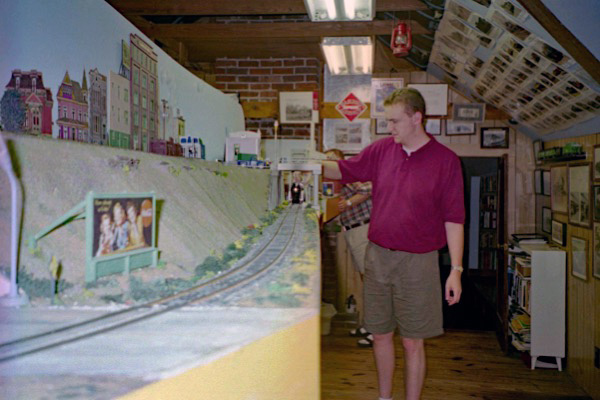
Covington, La / Jun 2000 / JCH
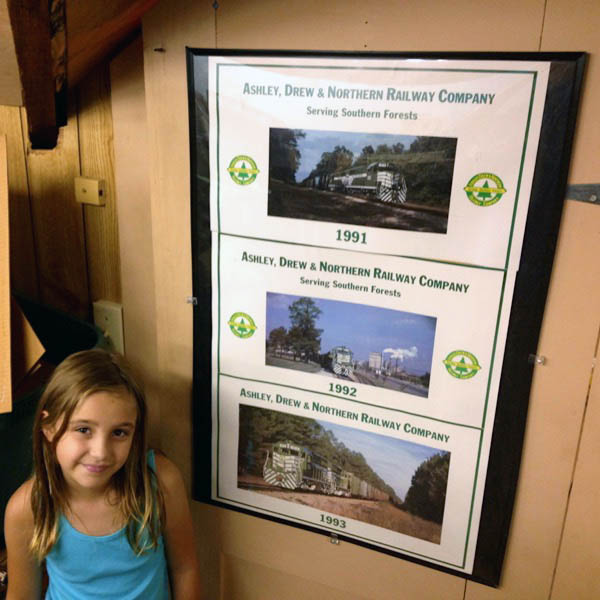
Covington, La / Aug 2013 / RWH
